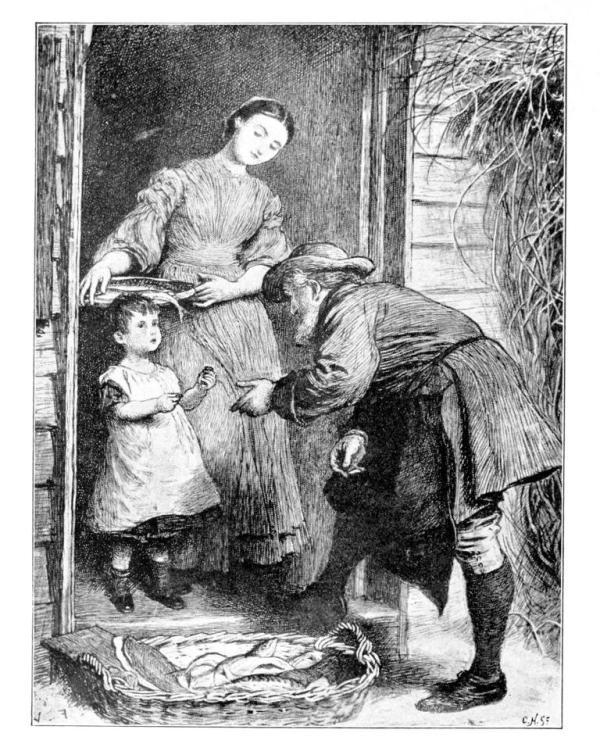 BY F. WALKER. PROCESS BLOCK FROM THE DRAWING ON
WOOD IN SOUTH KENSINGTON MUSEUM.
BY F. WALKER. PROCESS BLOCK FROM THE DRAWING ON
WOOD IN SOUTH KENSINGTON MUSEUM.
The Project Gutenberg EBook of Modern Illustration, by Joseph Pennell This eBook is for the use of anyone anywhere at no cost and with almost no restrictions whatsoever. You may copy it, give it away or re-use it under the terms of the Project Gutenberg License included with this eBook or online at www.gutenberg.org/license Title: Modern Illustration Author: Joseph Pennell Release Date: July 24, 2012 [EBook #40322] Language: English Character set encoding: ISO-8859-1 *** START OF THIS PROJECT GUTENBERG EBOOK MODERN ILLUSTRATION *** Produced by Chris Curnow and the Online Distributed Proofreading Team at http://www.pgdp.net (This file was produced from images generously made available by The Internet Archive)
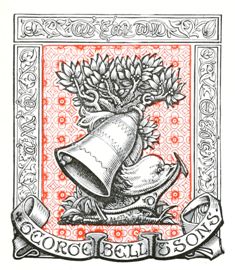
London: George Bell & Sons, York Street,
Covent Garden, & New York. Mdcccxcv
CHISWICK PRESS:—CHARLES WHITTINGHAM AND CO.
TOOKS COURT, CHANCERY LANE, LONDON.
| CHAP. | PAGE | |
| Index of Illustrations | vii | |
| Prefatory Chapter | xiii | |
| Introduction | 1 | |
| I. | A General Survey | 9 |
| II. | The Methods of To-day, their Origin and Development | 33 |
| III. | French Illustration | 50 |
| IV. | Illustration in Germany, Spain, and other Countries | 70 |
| V. | English Illustration | 81 |
| VI. | American Illustration | 113 |
| VII. | Conclusion | 131 |
*** The Publishers take this opportunity to thank especially the following owners of copyrights of various drawings for their kind permission to reproduce them here:—The editors of "The Daily Chronicle," "Good Words," "Sunday Magazine," "The Studio," "The Century Magazine," and "Scribner's Magazine"; Messrs. Chapman and Hall, H. Grevel and Co., Harper and Brothers, C. Kegan Paul and Co., Thomas Murby, and Ward, Lock and Bowden.
The full page engravings are indexed with the number of the page nearest to them.
| ARTIST | ENGRAVER AND SOURCE | PAGE |
| Fred. Walker | From an original drawing on the wood in the South Kensington Museum. Process block by C. Hentschel | Frontispiece |
| " " | Process block by Hentschel, from a drawing in wash and pencil | 95 |
| Boutet De Monvel | Process block from "St. Nicolas," the French | xiii |
| " " | From "Jeanne d'Arc," by Hentschel | 65 |
| W. W. Russell | Process block by Hentschel, from a pen drawing in "The Daily Chronicle" | xiv |
| Maurice Greiffenhagen | Process block by Hentschel, from a pen drawing in "The Daily Chronicle" | xvi |
| E. J. Sullivan | Process block by Hentschel, from a pen drawing in "The Daily Chronicle" | xx |
| J. McNeil Whistler | From Thornbury's "Legendary Ballads" wood-engraving by J. Swain | xxii |
| A. S. Hartrick | Process block by Hentschel, from a pen drawing in "The Daily Chronicle" | xxv |
| John Constable | From a pencil drawing, process block unsigned | 1 |
| Unknown | "St. Christopher," from a woodcut, 1423 | 6 |
| Sir E. Burne-Jones, Bt. | Pen drawing; block by Carl Hentschel. From "The Daily Chronicle" | 6 |
| " " | Process block by Art Reproduction Co., from original drawing for Gatty's "Parables" | 44 |
| Thomas Bewick | Wood-engraving from Walton's "Angler" | 9 |
| David Wilkie | Process block by Carl Hentschel, from a pen drawing | 9 |
| The Linnells | Drawings on wood, and engravings from National Gallery Handbook | 10, 11 |
| Thomas Stothard | Process block by Carl Hentschel, from an unpublished pen and wash drawing | 10 |
| " " | Wood-engravings by L. Clennell | 12, 13 |
| William Harvey | Wood-engravings by Thompson, from Milton's Works, etc.[Pg viii] | 15, 16 |
| " " | Original drawing on wood; process, unsigned | 17 |
| " " | Wood-engraving after B. R. Haydon, detail of "Dentatus," process block from it by Dellagana | 49 |
| John Thurston | Wood-engravings, unsigned, from Butler's "Hudibras," Tasso, etc. | 19, 21 |
| George Cruikshank | Engravings by S. and T. Williams and others unsigned, from "Three Courses," "Table Book," | 22, 23, 25 |
| Dante Gabriel Rossetti | Process block, by Clarke, from original unpublished pen drawing | 27 |
| " " " | Wood-engraving, by Dalziel, from "Tennyson's Poems" | 27 |
| Birket Foster | Wood-engraving from Longfellow's Works, etc., by Dalziel, Vizetelly, etc. | 26-29 |
| " " | Process block from an original drawing on wood | 28 |
| Harrison Weir | Two wood-engravings from "Poetry for Schools" by A. Slader | 30 |
| " " | Original wash drawing on wood, process block unsigned | 31 |
| A. Cooper | Engraved by M. Jackson, for Walton's "Angler" | 32 |
| Randolph Caldecott | Engraved by J. D. Cooper; from "Old Christmas" | 33 |
| " " | From the "Elegy on a Mad Dog," wood engraving, unsigned | 83 |
| " " | From "Bracebridge Hall," wood-engraving, unsigned | 86 |
| Charles Keene | Original unpublished pen drawings, blocks by Clarke and Dellagana | 34, 36 |
| M. E. Edwards | Wood-engraving from Gatty's "Parables," by Harral | 38 |
| G. du Maurier | Wood-engraving by J. D. Cooper | 40 |
| " " | Process blocks, from pen drawings for "Trilby" | 102, 103 |
| Arthur Hughes | Wood-engraving from Hake's "Parables," unsigned | 41 |
| Walter Crane | Process block by Carl Hentschel, from wood-engraving printed in colours, "Beauty and the Beast" | 46 |
| Kate Greenaway | Key-block for wood-engraving in colour, by Edmund Evans | 48 |
| E. Isabey | Process block by Dellagana, after wood-engraving by Slader, from "Paul and Virginia" | 50 |
| "Gavarni" | [Pg ix]Process block by Dellagana, after wood-engraving, unsigned, from "Parisians by themselves" | 51 |
| J. M. L. E. Meissonier | Engravings from the "Contes Remois" | 52, 57 |
| Jean Gigoux | Process block, unsigned, from wood-engraving from "Gil Blas" | 53 |
| Jules Jacquemart | Pen drawings, reproduced by C. Gillot, from "The History of Furniture" | 55, 56, 64 |
| A. de Neuville | Wood-engraving by Farlet from "Coups de Fusil" | 59 |
| Gustave Doré | Wood-engraving by Brunier, from "Spain" | 58 |
| " " | Process block by Dellagana, from a lithograph | 60 |
| D. Vierge | Pen drawing, process by Gillot, from "Pablo de Ségovie" | 60 |
| Louis Morin | Pen drawing, process, unsigned, from "L'Art et l'Idée" | 62, 63 |
| Carlos Schwæbe | Pen drawing, process, unsigned, from Zola's "Le Rêve" | 62 |
| E. Grasset | Pen drawing, process by Hare, from "Quatre Fils Aymon" | 63 |
| J. F. Raffaëlli | Pen drawing, process, unsigned, from "Paris Illustré" | 64 |
| H. Ibels | Pen drawing, process, unsigned, from "L'Art du Rire" | 65, 66 |
| Steinlen | Chalk drawings, two process blocks, by Carl Hentschel, from "Gil Blas" | 66 |
| A. Willette | Pen drawing, process, unsigned, from "Les Pierrots" | 66, 68 |
| Caran D'Ache | Pen drawing, process, unsigned, "Album Caran D'Ache" | 67 |
| A. Robida | Pen drawing, process, unsigned, from "Journal d'un vieux garçon" | 67 |
| J. L. Forain | Pen drawing, process, unsigned, from "La Comédie Parisienne" | 68 |
| P. Renouard | Wood-engraving, unsigned, from chalk drawing in "The Graphic" | 68 |
| M. Lalanne | From pencil drawing, process block by Clarke | 70 |
| Martin Rico | From a pen drawing, process by Dellagana | 70 |
| Hans Tegner | Unsigned process, from an original pen drawing | 72 |
| " " | Pen drawing, from Holberg's "Comedies," wood (?) unsigned | 73 |
| Adolph Menzel | Process block by Hentschel, from unpublished drawing | 73 |
| F. Goya | [Pg x]Process by Dellagana, from etchings in "Caprices" | 74, 78 |
| " | From a chalk drawing in the British Museum, process unsigned | 74 |
| M. Fortuny | Process, unsigned, from a pen drawing | 74 |
| Joseph Sattler | Process, unsigned, from a pen drawing, "The Dance of Death" | 74 |
| G. De Nittis | Process, unsigned, from wash and brush, "Paris Illustré" | 76 |
| W. Busch | Process, unsigned, from pen drawing, "Balduin Bahlamm" | 77 |
| A. Rethel | Wood-engraving, by Burkner, "Death the Friend," process reduction | 78 |
| H. Schlittgen | Process, unsigned, from pen drawing, "Ein erster und ein letzter Ball" | 78 |
| Franz Stück | Process, unsigned, from painting, "Franz Stück Album" | 79 |
| J. Garcia y Ramos | Process, unsigned, from pen and wash drawing | 79 |
| W. L. Wyllie | Process, unsigned, pen drawing, "Magazine of Art" | 80 |
| J. W. North | From a drawing on wood; block by Dellagana | 81 |
| Hugh Thomson | Process, unsigned, pen drawing from "Our Village" | 82 |
| J. M. W. Turner | Process by Dellagana, from Rogers' "Italy" | 85 |
| E. Griset | Wood-engraving, unsigned from Hood's "Comic Annual" | 87 |
| Sir J. E. Millais, Bt. | Wood-engravings, by Dalziel, from "Good Words" | 88, 90 |
| A. Boyd Houghton | Wood-engraving, by Dalziel, from Dalziel's "Arabian Nights" | 92 |
| " " | Wood-engraving, by Dalziel, from Dalziel's "Arabian Nights" | 92 |
| G. J. Pinwell | Process by Hentschel, from drawing on wood for Goldsmith's Works | 93 |
| " " | Process by Hentschel, from drawing on wood for Goldsmith's Works | 94 |
| Charles Green | Unknown | 94 |
| F. Sandys | Wood-engraving by Swain, from Thornbury's "Legendary Ballads" | 96 |
| F. Shields | Wood-engraving, unsigned, from Defoe's "History of the Plague" | 98 |
| J. Mahoney | Process block, from wood-engraving in "The Sunday Magazine" | 100 |
| J. F. Sullivan | Wood-engraving, unsigned, from Hood's "Comic Annual" | 100 |
| Sir John Tenniel | Engraved on wood by H. Harral, from Gatty's "Parables" | 102 |
| Linley Sambourne | [Pg xi]Engraved by H. Swain, from Kingsley's "Water Babies" | 102 |
| W. G. Baxter | Process, unsigned, from pen drawing in "Ally Sloper's Cartoons" | 103 |
| Phil May | Process, unsigned, from pen drawing in "The Graphic" | 103 |
| W. Small | Engraving on wood by Lacour, from "Cassell's Magazine" | 104, 105 |
| R. Anning Bell | Process block by Hare, from a pen drawing | 105 |
| J. Bernard Partridge | Process block, unsigned, from pen drawing in "Proverbs in Porcelain" | 106 |
| W. Holman Hunt | Engraving on wood by Harral, from Gatty's "Parables" | 106 |
| E. H. New | Process block, from pen drawing in "The Quest" | 107 |
| Winifred Smith | Process block, unsigned, from pen drawing in "Singing Games" | 107 |
| Alfred Parsons | Wood-engraving by J. D. Cooper, from "The English Illustrated Magazine" | 107 |
| " " | Process block by Hentschel, from "The Daily Chronicle" | 109 |
| Sir George Reid | Wash drawing, engraving on wood, unsigned, from "A Scotch Naturalist" | 108 |
| W. Paget | Wash drawing, process, by Andre and Sleigh, from "Cassell's Magazine" | 109 |
| L. Raven-Hill | Process, unsigned, from pen drawings in "The Butterfly" | 110, 111 |
| Edgar Wilson | Process, unsigned, from "The Unicorn" | 111 |
| C. E. Mallows | Process, from a pencil drawing in "The Builder" | 111 |
| R. Caton Woodville | Process from a wood-engraving, in "The Illustrated London News" | 112 |
| Sidney P. Hall | Wood-engraving from pencil drawing in "The Graphic" | 112 |
| Aubrey Beardsley | Process block by Clarke, from a pen drawing | 113 |
| T. Walter Wilson | Process reduction, from "The Illustrated London News" | 113 |
| F. S. Church | Process reduction, from "The Continent" | 113 |
| C. S. Reinhart | Wood-engraving by H. Davidson, from "The Century Magazine" | 114 |
| Walter Shirlaw | Process block, unsigned, from charcoal drawing in "The Century Magazine" | 116 |
| Howard Pyle | [Pg xii]Process block, unsigned, from pen drawing for "Wonderful One Hoss Shay" | 118, 120 |
| " " | Wood-engraving, unsigned, from wash drawing in "The Century Magazine" | 119 |
| Alfred Brennan | Process, unsigned, from pen drawing in "The Continent" | 121 |
| A. B. Frost | Process, unsigned, from pen drawing in "Stuff and Nonsense" | 122, 123 |
| E. A. Abbey | Process, unsigned, from pen drawing in "Harper's Magazine" | 124 |
| " " | Wood-engraving, unsigned, from Austin Dobson's Poems | 124 |
| C. D. Gibson | Process, unsigned, from pen drawing in "The Century Magazine" | 125 |
| Oliver Herford | Process, unsigned, from pen drawing in "Fables" | 125 |
| Robert Blum | Process, unsigned, from pen drawing in "Scribner's Magazine" | 126 |
| " " | Process, unsigned, from chalk drawings in "Scribner's Magazine" | 129 |
| Childe Hassam | Process, unsigned, from pen drawing in "The Commercial Advertiser" | 126 |
| Hopkinson Smith | Process, unsigned, from chalk drawing in "The Century Magazine" | 126 |
| Frederic Remington | Process, unsigned, from pen drawing in "The Century Magazine" | 128 |
| R. Birch | Process, unsigned, from pen drawing in "Little Lord Fauntleroy" | 129 |
| T. Cole | Wood-engraving after W. M. Chase, from "The Century Magazine" | 129 |
| S. Parrish | Process, unsigned, from "The Continent" | 130 |
| Gilbert Gaul | Wood-engraving, unsigned, from "The Century Magazine" | 130 |
| Selwyn Image | Process, unsigned, from "The Fitzroy Pictures" | 131 |
| Heywood Sumner | Process, unsigned, from "The Fitzroy Pictures" | 131 |
| A. J. Gaskin | Process, unsigned, from pen drawing in "Old Fairy Tales" | 132 |
| Laurence Housman | Process, unsigned, from pen drawing in "A Farm in Fairyland" | 133 |
| T. Cotman | Process reproduction by Dellagana, from "Architectural Antiquities of Normandy" | 134 |
| Page xv, for "T. W. Russell," read "W. W. Russell." | |||
| Page 20, | } | for "1835," | } read "1836." |
| Page 25, | for "1838," | ||
| *** I have seen four different dates given for the book. | |||
| Page 25, for "1842," read "1840." | |||
| Page 32, | } for "Pannemacker," read "Pannemaker." | ||
| Page 69, | |||
| Page 52, for "Lavoignal," read "Lavoignat." | |||
| Page 112, for "Sydney P. Hall," read "Sidney." | |||
| " " for "pen" read "pencil." | |||
BY BOUTET DE MONVEL. FROM
“ST. NICOLAS” (DELEGRAVE).
This book is the result of a request, made to me by the editor of the Ex-Libris Series, that I should write for him something about the Illustration of to-day.
The idea, I must acknowledge, and I am glad to do so, is his, not mine. To the editor also I am indebted for much help, especially in the matter of the illustrations which the book contains; in fact, [Pg xiv] if he has not selected and chosen them all, he has performed the more difficult and thankless task of obtaining them. Only one who has gone through the drudgery of finding drawings or blocks, in magazine, book, museum, artist's studio, or collector's portfolio, and then of getting the permission of editor, publisher, curator, artist, or amateur, to use or reproduce them, knows what this means. I know from past experience, and I was therefore only too glad to shirk the work when I found Mr. Gleeson White willing to undertake it. I doubt, however, if he will ever again attempt such a task. For the appearance of the illustrations in the book he deserves the credit; for much advice and many suggestions of great value, as well as to the articles he has written, and the lectures he has delivered, on this subject, I am greatly indebted.
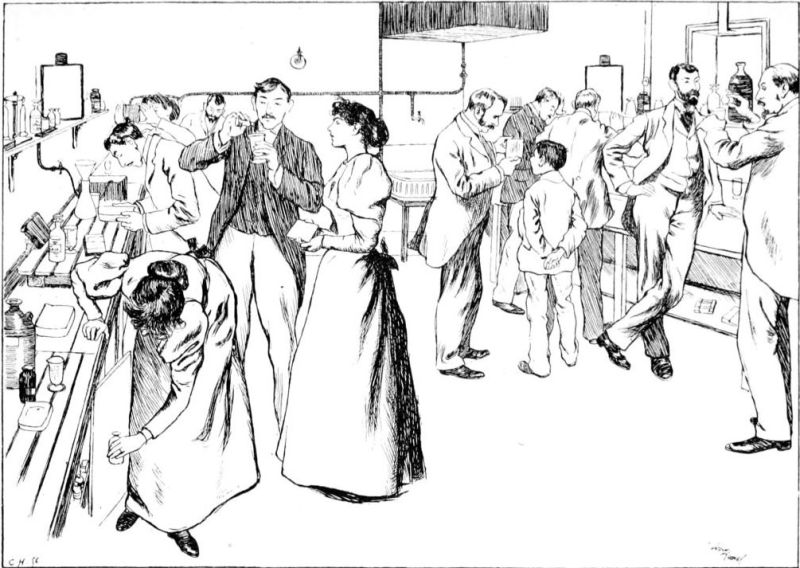
There are many others also whom I must thank. First of all Mr. Austin Dobson, who, when he learned I was making a study of the subject, took the trouble to put me on the track of the French illustrated books of the early part of this century, giving me a most helpful start. Without his assistance, and that of M. Beraldi, I might never have even been able to trace the true birth, development, and growth of modern illustration, which springs from Goya, the Spaniard, as draughtsman,[1] and Bewick, the Englishman, as en[Pg xv]graver; spreading, spontaneously but quite independently, to France; thence to Germany, back again to England, and finally to America, whence it has been diffused again all over the world. Though in all its component parts—drawing, engraving, and printing—illustration is more advanced in the United States than anywhere else; still to-day, despite the excellence of much of the work done there, remarkable results are being obtained in other countries. Yet this latter-day excellence is so marked in American work that in many ways it has overshadowed that of England, France, Germany, and Spain, from the artists and engravers of which countries we Americans have derived our inspiration.
Once again I must thank the authorities at South Kensington and the British Museum, Mr. E. F. Strange and the assistants; Mr. A. W. Pollard, who, though the editor of a rival series, helped me as though the book was to appear in his own collection; Professor Colvin and Mr. Lionel Cust, the latter of whom, during his stay in the Print Room of the British Museum, I bothered persistently; his transfer to a more important post is a great loss to students at the Museum; Dr. Hans Singer of Dresden, and many others.
Artists, especially those of the older generation, the men who gave illustration in this country thirty-five years ago a position it does not hold to-day, have been untiring in their interest in the book, and most helpful in every way; it has been a delight and a pleasure to meet Frederick Sandys, Birket Foster, Harrison Weir, Frederick[Pg xvi] Shields, and W. H. Hooper, just as it is an undying proof of the artistic blindness of a generation which has not the intelligence to use the work of its masters. Mr. Hooper has told me that he does not believe the Bewick blocks could be printed any better than they originally were; this is an interesting problem, but one which can never be solved; from my point of view they were badly printed. He also thinks that Bewick used overlays.
Mr. Hooper is the English master of facsimile wood-engraving; and some day, when this fact is generally discovered (as Mr. William Morris has found out, for Mr. Hooper has engraved the greater part, if not all, of Sir Edward Burne-Jones's and Mr. Morris's designs), there will be a wild and fruitless discussion among bibliographers as to the engravers of the wonderful blocks in Morris's books, and of much of the best work of 1860 to 1870, signed with the name of a firm, or a tiny mark in the most obscure corner.
Mr. Laurence Housman's article on A. Boyd Houghton in "Bibliographica" I wish I had seen before the English chapter was written, and I wish I had had the benefit of his researches concerning this master, as well as the advice of Mr. A. Strahan, which would have been invaluable.
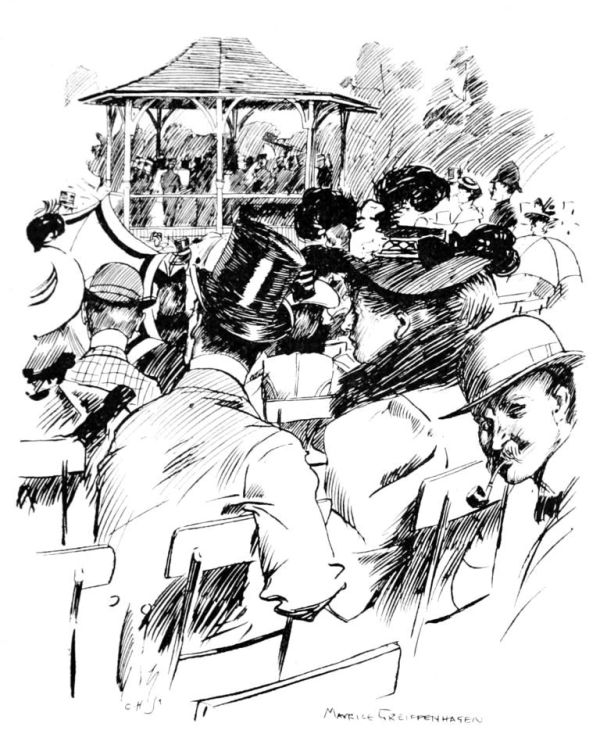
Mr. W. J. Hennessy has given much help in the American chapter, and I must thank Mr. Emery Walker, Mr. Horace Townsend, Mr. H. Orrinsmith, Mr. C. T. Jacobi, Mr. W. E. Henley, and I cannot remember how many more. Mr. Edmund Gosse kindly allowed [Pg xvii] us to reproduce his Rossetti, one of the strongest pieces of work, I think, that artist ever did in pen and ink. The other drawings not contributed directly by artists, or not obtained as electros, etc., are mainly from my own collection, for strange as it may seem, the collection of original drawings is one of my hobbies; others may collect bad prints, I prefer good originals. The proprietors of "The Daily Chronicle" allowed us to reproduce a number of designs made for that paper, and published in it during February, 1895. That no drawings are included from many of the artists of "Fliegende Blätter" is because the proprietors refused to allow them to be reproduced or used; no doubt the publishers have daily applications of the same sort, but as a book like this is not intended as a rival to a comic paper, I think their refusal in this case rather uncalled for. Still, I have not allowed their decision to influence me, nor yet the refusal of one or two artists, who evidently prefer the advertisement of the vulgar type of weekly to being included with their equals or masters. No doubt these confessions will be greeted with applause, especially in that paper whose boast it was once to be "written by gentlemen for gentlemen." No doubt I shall be censured for leaving out the work of every man who ever happened to make an illustration or even a sketch, especially if it was privately published. No doubt the omission of Miss Alexander and other Ruskin-boomed amateurs will be noted, but I have no collection of their works which I should like to unload on[Pg xviii] the dear public. And as for the misplaced energy contained in these drawings, I am sorry that their authors wasted so much time over them. No doubt for making these confessions, unknown or anonymous nobodies will shriek out that I have stolen everything in the book from an authority of whom I never heard. And, finally, no doubt an ordinarily rational paper like the "Spectator" will remark of certain of the drawings, "they make us sick."
As to the text, it is in no sense an attempt at a complete history of modern illustration; such a subject would fill volumes, and take a lifetime to prepare. It is but a sketch, and a very slight one, of what I think is the most important work of this century; from which I know I shall be told I have omitted almost all that I should have included, and inserted much that should have been omitted.
But I should like to point out that there are no works that I have been able to consult on modern illustration, that is on drawing, engraving and printing as practised to-day in Europe and America; there are a few excellent books notably a "Chapter on English Illustration," by Mr. Dobson, in Mr. Lang's "The Library," and Mr. Linton's works on engraving; Mason Jackson's "Pictorial Press;" a few good monographs on the great illustrators, Champfleury's "Vignettes Romantiques," for example; many excellent scattered articles, and an ocean of rubbish. But I am the unfortunate who will be sacrificed for attempting to write the first book on a subject he loves. There is another most serious, really insurmountable difficulty, for[Pg xix] me or anyone else who attempts to write of modern illustration: no illustrations are catalogued to any extent; only the most important illustrators find a place in either the catalogues of South Kensington Art Library or the British Museum; therefore a few years, even a few weeks, after an illustrated book is published, if it has already passed through several editions, it may require hours to find the edition one wants. And as for a special illustration, that necessitates almost always turning over thousands of pages—unless one knows exactly where to find it. I know of but one magazine—"Once a Week"—in the bound volumes of which the artist's work is properly indexed, and even here the engraver's name is omitted.[2] In Harper's most excellently conducted magazine, for some unknown reason artists and engravers are ignored in the index. Even "The Century" leaves much to be desired in this way. Again, it is almost impossible to obtain the date or the name of the work in which many an important illustration first appeared. Illustrations are used over and over again, this has always been done; even a publisher at times cannot help one: for this reason it is very difficult to tell when one is consulting a first edition of an illustrated book. Sometimes I fancy this carelessness is not altogether unassociated with the author's or publisher's desire to palm off old blocks as new. It is by no means uncommon to omit the name of the artist altogether from the work he has illustrated; rarely indeed is it that the engraver's name [Pg xx]is given; sometimes no mention that the work is illustrated is even made on the title page, or only that it contains so many illustrations; usually if an attempt is made to describe the method by which the designs have been reproduced, it is wrong; in rare cases, I am glad to say, this is intentional—photogravures being called etchings, for example—but it is mainly the result of sheer ignorance on the part of publisher, author, or at times, the illustrator.
Hence there are two matters to which I should like to call attention; that all library catalogues give the name of artist and engraver whenever these are printed in the book being catalogued; naturally in a work like this or a magazine, such a course would be impossible, but at least the number of illustrations might be given. The name of the illustrator should always appear on the title page when possible; if his work is worth printing he should have a decent amount of attention drawn to it. This matter is not so difficult, nor would it entail in new catalogues so much work as librarians might think, for I may say in the British Museum and South Kensington I find that Menzel's work is so catalogued already.
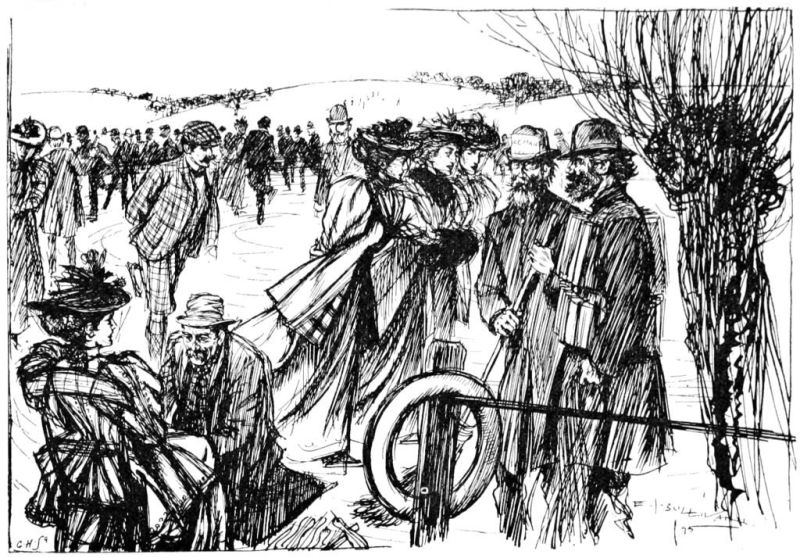
Secondly, that bibliographers everywhere should turn their attention more to modern illustrated works, even if from the bibliographer of the future it removed much of that pleasant uncertainty which enhances, for some, the work of to-day. There is scarce an illustrated book of the fifteenth or sixteenth century, in which we are absolutely sure of the artist and engraver; but the bibliographers of [Pg xxi]the future will have a far bigger puzzle to solve, unless we pay some attention to the work of to-day, when they come to catalogue and describe the books of this century.
Most illustrators, it is true, now sign their drawings, but I should not care to attempt a catalogue of my own work.
I have no doubt that I have omitted to mention some really important books, but they have been omitted because I have never seen them; with no good catalogue, no guide, many of the artists dead, and the books dead too, how is one to find them? I have done what I could to make a start; I only hope some one will carry it on; certainly I am sure some of my sincere flatterers will imitate me, as they always do.
But to-day the output of illustration is overwhelming; to study the subject properly one must see all the books, magazines, and papers published all over the world. No one man has a chance to do this, and, if he had, the mere looking at such a mass of material would take up all his time. Yet one must get some idea of what is being done, for in the most unexpected places the best work often appears; originality is barred in many, so-called, high-class journals, and has to struggle, in the cheapest publications, with the printing-press, ink, and paper.
What magazine, for example, has eclipsed "The Daily Chronicle's" experiment in illustration? Within the same short period no such distinguished band of contributors ever appeared.
Again, in this book it is repeatedly stated that[Pg xxii] certain artists are at work on certain publications; these have since appeared; I can only say that the book was not made in a day, and the artists, engravers, and printers to whom I have referred, have worked faster than I have. Even the "Yellow Book" has come into existence, and been artistically eclipsed—I hope but for a short while—since I have been working at this volume. Temporarily, the shrieking brother and sisterhood have hurt the pockets of a few artists; but illustrators may be consoled by remembering that from the time of Dürer to the pre-Raphaelites, from Whistler to Eternity, Art never has been and never will be understanded of the people; but they no longer dare to burn our productions, they only write to the newspapers about them. Art can stand that—even though it, for the moment, is hard on the artist.
It is now no longer necessary for me to insist on the importance of illustration; it is acknowledged, and, save that academic honours are denied him in this country, the illustrator ranks with any other practitioner of the fine or applied arts.
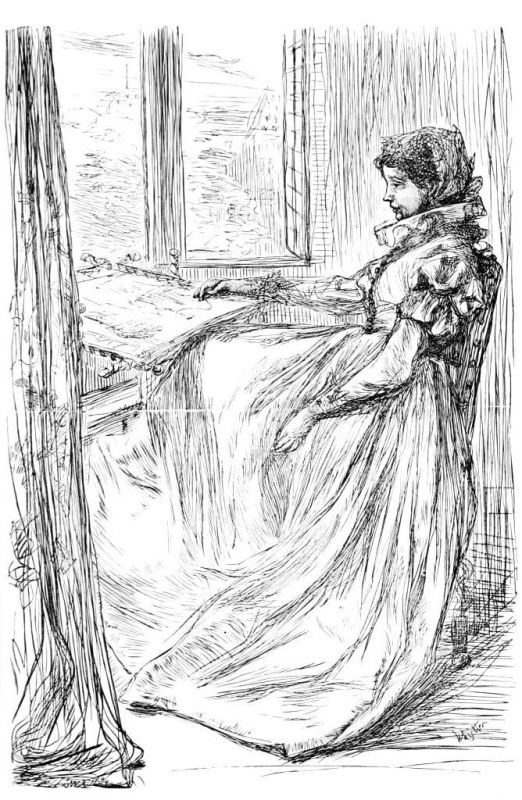
Nor do I propose to contradict the statement that one can see too much good art; well, the Elgin marbles stood for centuries where only the blind could avoid them, and I have not heard that the Athenians were injured in consequence; now they are shut up in boxes, and only visible at certain times, hence the British taste has been so elevated, that the ha'penny comic and the photograph have become its ideal. Still, if people could see every day, as they had the chance of [Pg xxiii]seeing this year in the "Chronicle," illustrations by Whistler and Burne-Jones, I do not think they would be harmed, even if they did not happen to have to travel in a penny 'bus to the British Museum, or take a Cook's ticket and a shilling Ruskin in order to walk in Florence. My opinion is, the better the art around us, even in the penny paper, the better shall we be able to appreciate the work we must travel to see.
As for the people who would vulgarize art and literature, bringing everything down to their own low level, we have them always with us. And they and their hangers-on are the ones against whom the present puritans should level their attacks—not against men whose art they do not understand, even if they do object to their personality. Still here it will be always impossible to separate a man from his work; yet good art will live, and good illustration is good art. The world may or may not appreciate it, still "there never was an artistic period, there never was an art-loving nation."
Since this preface was written much has happened, and I hope I have learned a little. A show of wood-engravings was held in March, 1895, in Stationers' Hall, which demonstrated clearly that there are many capable artists in this branch of illustration, though at present they have but[Pg xxiv] little encouragement to practise their art; in that exhibition one saw much good work, and I must at least record the names of H. Harral and C. Roberts among English engravers on wood who have done notable large blocks—while excellent engraving has been recently accomplished by Messrs. M. Stainforth, O. Lacour, J. D. Cooper, R. Paterson, A. Worf, F. Babbage, J. M. Johnstone, and W. Spielmeyer, the latter of whom was good enough to give me much help in the German chapter of this book. Edmund Evans, the engraver and colour-printer, loaned me the original drawings on the wood by Birket Foster, William Harvey, and Harrison Weir, now for the first time reproduced, while William Archer allowed us to reproduce the Tegner on page 72.
Among artists too I should have noted the work of G. H. Thomas and Samuel Palmer, who made some designs for Sacred Allegories, mainly engraved by W. T. Green, 1856. One of the earliest and best of modern illustrated books, "Poets of the Nineteenth Century," 1857, and Wilmott's "Sacred Poetry," 1863, are worth preservation for their illustrations. The more I see of this illustration of twenty or thirty years ago, the better and more interesting I find it. Arthur Hughes' work grows on one; certainly his illustrations to Christina Rossetti's "Sing Song," are very charming. I have made no mention scarcely of the splendid work Charles Green, Luke Fildes, and [Pg xxv] Fred. Barnard did for Charles Dickens. My only excuse is that till yesterday I never saw it. Griset's grotesques, too, I have but just come [Pg xxvi] across—but while one is looking up the work of a few years ago, that of the present is unseen. I have said nothing of many interesting illustrators who have come to the front almost within a few months, illustrators are being made almost daily, one cannot keep track of them, good as their work is much of it is like journalism, bound to perish, only the best will live; but when one is right in the midst of it, difficult indeed is the task of picking out the good from the almost good, the clever from the distinguished.
London,
September 30th, 1895.
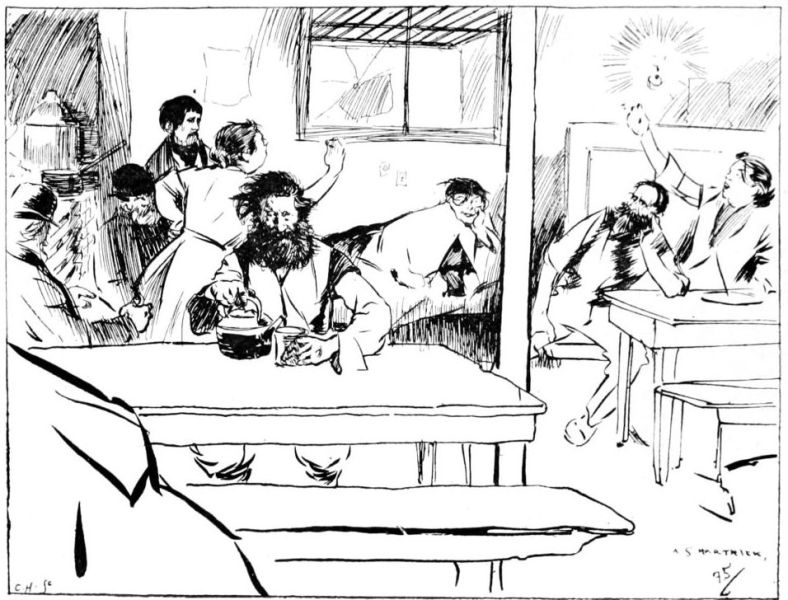
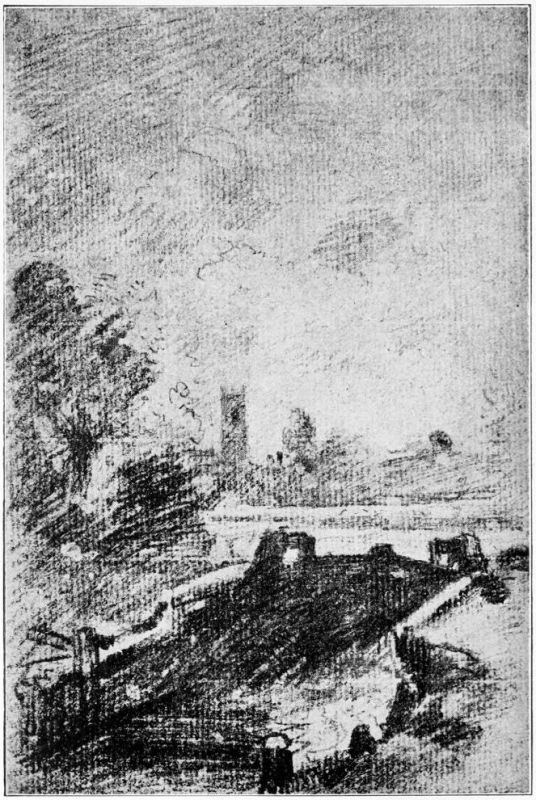
Illustration is not only the oldest, but the only form of artistic expression which graphic artists have ever been able to employ. For that matter, every expression of the artist, whether conveyed by means of monochrome or colour, even the work of the plastic artist, is but an illustration.
For an illustration is the recording, by means of some artistic medium, either of something seen by the artist which he wishes to convey to—that is, illustrate for—others; or else the direct interpretation by some artistic means of a written description, or the chronicling of an historical event; or, it is a composition which has been suggested to him by some occurrence in nature; or, again, his impression of some phase of nature or life. Therefore all art is illustration, though it rather seems to follow that all illustration is not art.
In the past, the great illustrators were employed by the great patrons of art in the church and at court. The church, by means of graphic or plastic[Pg 2] illustration, warned or encouraged her followers, terrifying them by endless purgatories and infernos, more gruesome and ghastly than the British idea of the Salon picture; turning their thoughts towards heaven mainly by cloying sweetness, which the typical member of the Royal Academy finds much difficulty in approaching. Though such illustration, in a certain sense, was made for the people, it was not given into their possession as modern illustration is to-day; it was meant not for their pleasure, but for their instruction.
The old illustrator in his work was simply nothing if not a moralist, though he himself may have been a most amusing person, while his treatment of even the most sacred subjects was frequently the broadest and most suggestive. Still, he was commissioned solely to "point a moral and adorn a tale." As for the court painters, their work was never seen by the people at all, any more than it is now, often luckily. But what were the portraits of Velasquez, the groups of Rembrandt, the feasts of Veronese, the processions of Carpaccio? The work of all court and portrait painters is but the recording, that is, the illustration, of human vanity; and the work of all subject painters is but the recording, that is, the illustration, of great and important events; while landscape painting, a modern invention, is only more or less glorified topography.
With the writing and illustrating of manuscripts, however, there had been developed a school of minor artists and craftsmen: illuminators and scribes who—mainly taking for their subjects[Pg 3] either a portion of some painting by a master, but usually the mere mechanical part of the early painters' backgrounds, the mechanical gold punch design of the primitives, the elaborate, but mannered and conventional, foregrounds of Botticelli, and the entire compositions, more or less altered, of Fra Angelico and Pinturicchio—by "lifting" these things judiciously, evolved the art of illumination. It must be borne in mind that this illumination, in its detail and accessories often very beautiful and conventionally decorative, in its main subject almost always as realistic as possible, was the work, with two or three most notable exceptions, of second- and third-rate clever technicians, but in no sense great creative artists at all. Only a few well-known painters were ever employed to illuminate important manuscripts.
After the introduction of printing, the same state of affairs continued. Although the most beautiful books which came from the early German press appeared during the lifetime of Dürer, his contributions as an illustrator are curiously limited, considering the amount of black-and-white work which he produced. He illustrated not more than three or four books, and of these only the Missal of the Emperor Maximilian was worked out completely.[3] The great Italians never did anything of any importance, if we except Botticelli's designs for Dante which were never completed. Velasquez has left nothing behind him; nor has Rembrandt. A [Pg 4]few of Rubens' sketches for title-pages exist in Antwerp, and Dürer's monograms and various decorative designs have proved a veritable mine for the minor artists, or greatest thieves—I mean the decorators—who are with us still. With the exception of Hans Holbein, there never was in the past a great artist who devoted himself to illustration. The glorification of these minor craftsmen into great illustrators is unjust, incorrect, and absurd, when one seriously considers it. Dürer's designs were really published and sold as portfolios of engravings, or separately, although there was a little text with them, but not as illustrated books. So, too, were those of Rubens; while Rembrandt's etchings were altogether published separately. It was the same with the work of the early Italians. Holbein is almost the only exception proving the rule that great artists in the past were not illustrators of books. Still, one can never be absolutely certain on this point, since on some of the finest books, like the "Hypnerotomachia," a great artist was employed whose name has never been recorded.
Although it is impossible now to give with absolute certainty the true reasons why the best-known artists did not illustrate the important publications of their own day, there seem to be three very good ones. First, because it is almost certain that the wood-cutter, when he was known at all, and this implied his being reasonably successful, was the head of a large shop in which the artist and the actual engraver were mere necessary evils; the proprietor, I do not doubt, taking not only all[Pg 5] the credit, as we know, but most likely the bulk of the cash as well. Secondly, we have Dürer's own testimony that his wood-cutters were incompetent, and careless, and the much belauded line of Dürer which one is bidden to admire in the wood-block to-day, he himself, it is almost certain, did not cut.[4] But he sketched freely on paper, his design was then copied by another person on the block, and the third man cut it. That Dürer did work on the wood, correcting his designs and criticising his wood-cutters, there can be little doubt, simply from the improvement in this method of reproduction which began with him. But the reason that a great artist like Dürer did not contribute illustrations to books most probably is because he was not decently paid for them, and because his designs were all cut to pieces. Finally, not only was almost all the engraving, except work done under the direct supervision, or influence, of Dürer, absolutely characterless so far as the quality of the line went, but there is not a single early printed book to be found in which the illustrations are decently printed. There is scarcely a solid black in any of them.[5]
When one considers these facts, which have been carefully ignored by a small set of artists, and, of course, are absolutely unknown to the ordinary critic and authority on the early printed book, two things become evident. First, that the great artists of the past did not illustrate; and, [Pg 6] second, that the reason they did not was because they could be neither decently engraved nor printed.
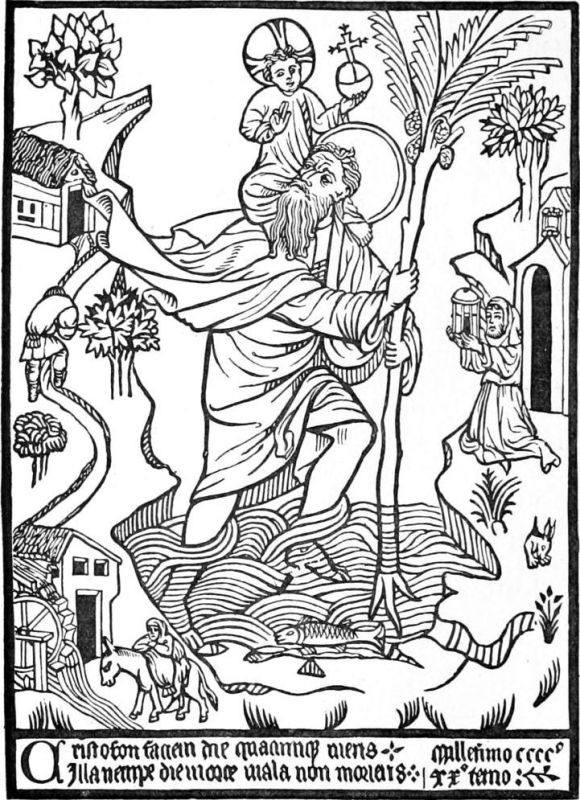
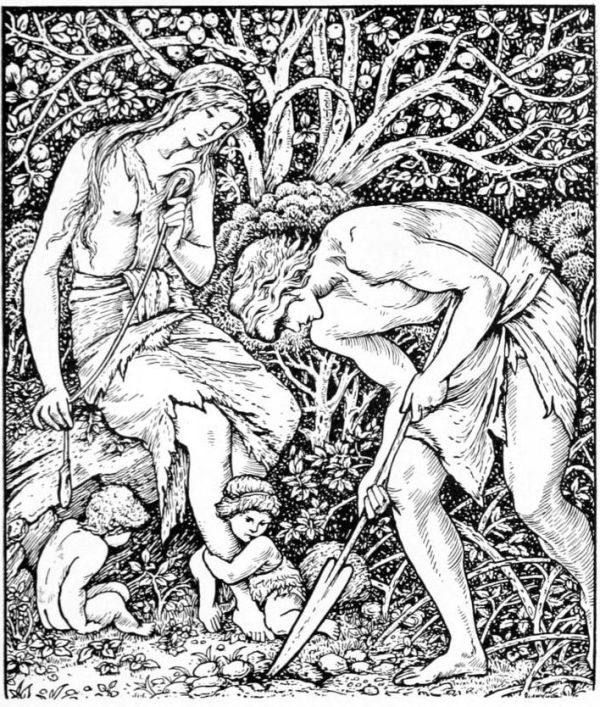
With the introduction of steel and copper-plate engraving and etching, the paintings and sculptures [Pg 7] of great artists were not infrequently used as the subjects of book illustrations, but they were seldom made expressly for the books they illustrate. And as the steel or copper engraving must be printed separately, and as the best proofs of these engravings were almost always sold as separate works of art, it hardly seems to me that engravings on metal or on stone, like lithographs, properly come under the head of illustration for printed books.
The use of what we call now clichés and stock blocks was almost universal, even from the very invention of printing, when the illustrations to the block-books were cut up for this purpose; and not only this: the same map was made to do duty for as many countries as were required, and one and the same portrait or town served for as many characters and places as happened to figure in the book. While, under the heading of appropriateness of decoration and fitness, it may be remarked that most of the old printers only had one set of initials, and if they did possess two sets of borders, they usually chopped them up, and, by judicious mixing, obtained a variety apparently pleasing to their patrons.
It is not until the eighteenth century that one finds artists of note illustrating books, always with the exception of Holbein. Even then the illustrations were usually steel or copper-plate engravings made very freely from other men's drawings, although the artists were beginning to be commissioned to produce designs themselves. One might devote much space to the work of Piranesi, Canaletto, Watteau, Greuze, Hogarth, Chodowiecki, [Pg 8]and the illustrators of La Fontaine. But this does not come really within my subject, since the making of modern illustration, that is, the employment of great artists to produce great works of art to appear with letterpress in printed books, dates entirely from this century, and is due altogether to the genius of four men: Meissonier in France, Menzel in Germany, Goya in Spain, and Bewick in England. It is to these four that modern illustration is solely and entirely due; though a word—and a strong one—of praise should be given to the patrons and publishers who employed and encouraged them.
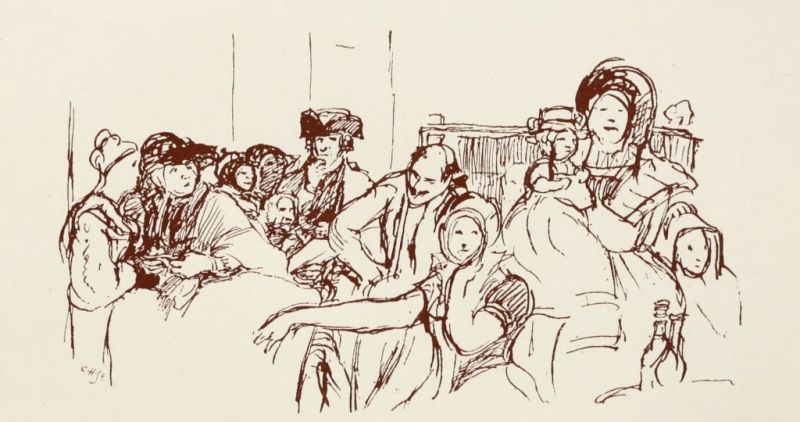 BY SIR DAVID WILKIE. FROM AN ORIGINAL DRAWING IN THE POSSESSION OF THE AUTHOR.
BY SIR DAVID WILKIE. FROM AN ORIGINAL DRAWING IN THE POSSESSION OF THE AUTHOR.
 WOOD-ENGRAVING BY THOMAS BEWICK. FROM WALTON’S
“COMPLETE ANGLER” (BOHN).
WOOD-ENGRAVING BY THOMAS BEWICK. FROM WALTON’S
“COMPLETE ANGLER” (BOHN).
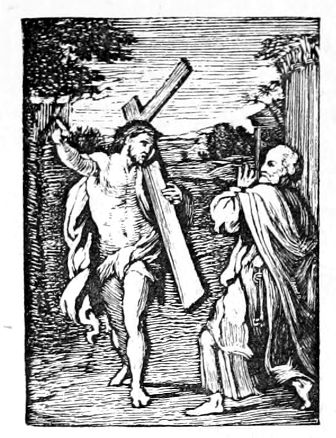
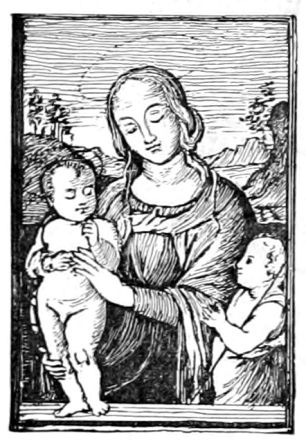
Nowhere were the conditions of illustration more deplorable than in England when Bewick, and Stothard, and Blake appeared upon the scene. There was a decided revolution when Gay's "Fables," the "General History of Quadrupeds," "British Land and Water Birds," all illustrated by Bewick's wood-engravings, were issued. Bewick, as has been said before, and cannot be repeated too often, was an artist who happened to engrave his designs on wood, instead of drawing them on paper or painting them on canvas; he was not a mere wood-engraver, interpreting other men's work which he only half understood or appreciated; and this is a distinction to be borne in mind. Bewick, virtually, did for himself what the new mechanical processes almost succeed in doing for contemporary illustrators. For him were none of the difficulties [Pg 10]and miseries of the draughtsman who made his designs on the block, saw them ruthlessly ruined by an incompetent, or unscrupulous engraver, and then had but the print, which could not prove the reproduction to be the wretched caricature of the original that it really was. This was the chief reason for Bewick's success. He invented wood-engraving; he showed what good work ought to be; in a word, he revolutionized the art of illustration in England.[6]
Whatever may have brought about this sudden activity and revival of excellence, Bewick's books were far from being its sole outcome. "The Songs of Innocence and Experience," the "Inventions to the Book of Job," Blair's "Grave," Mary Wollstonecraft's stories, with Blake's illustrations, belong to the same period, though this was but a chance. The illustrations were mostly done on metal, and Blake had his own peculiar methods. He belongs to no special time or group.


Book after book with Stothard's illustrations, [Pg 11] the "Pilgrim's Progress," Richardson's novels, tales now forgotten, above all, Rogers' "Poems," with the engravings by Clennell, helped to prove the possibilities of good illustration, and emphasize, by force of contrast, the inappropriateness of work done by some of the most popular Academi[Pg 12]cians of the day for Boydell's "Shakespeare," immortalized by Thackeray as that "black and ghastly gallery of murky Opies, glum Northcotes, straddling Fuselis."
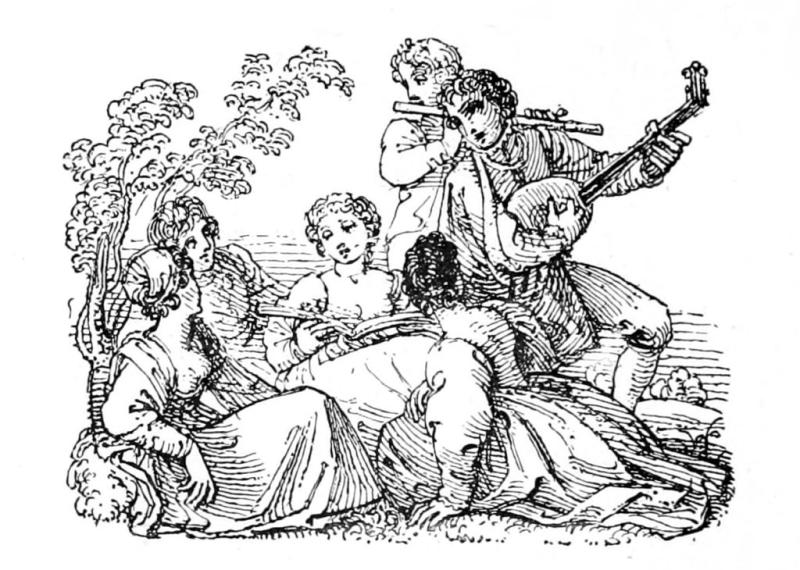
But the most important outcome of Bewick's work was the appearance of an excellent school of wood-engravers in England: Clennell, Branston, Harvey and Nesbit, the Thompsons, the Williamses, and Orrinsmith. These engravers tried, in the beginning, to produce exactly the same sort of work that is being done by the so-called school of American wood-engravers to-day. One has only to look at Stothard's illustrations to Rogers' "Poems," engraved by Clennell, to see an example of facsimile engraving after pen drawing. [Pg 13] But, as a general thing, these men all endeavoured to imitate the qualities of steel engraving or etching. First, because steel or metal engraving was the prevailing form of illustration, enjoying, for a while, tremendous popularity in the long series of "Keepsakes," "Forget-Me-Nots," and "Albums;" and, secondly, because they were forced mainly to copy old metal engravings, since scarcely any artist, always excepting Stothard and a few others, knew how to draw on the wood. So great was the rage for popularizing engravings on metal, that John Thompson projected an edition of Hogarth on wood, about two inches by three, showing that, instead of being able to produce new work done specially for the wood, engravers were continually thrown back upon the copying of steel or copper-plates, or the work of their predecessors. Another notable instance, though published much later, is[Pg 14] that of the first illustrated catalogue of the National Gallery by the Linnells.[7]
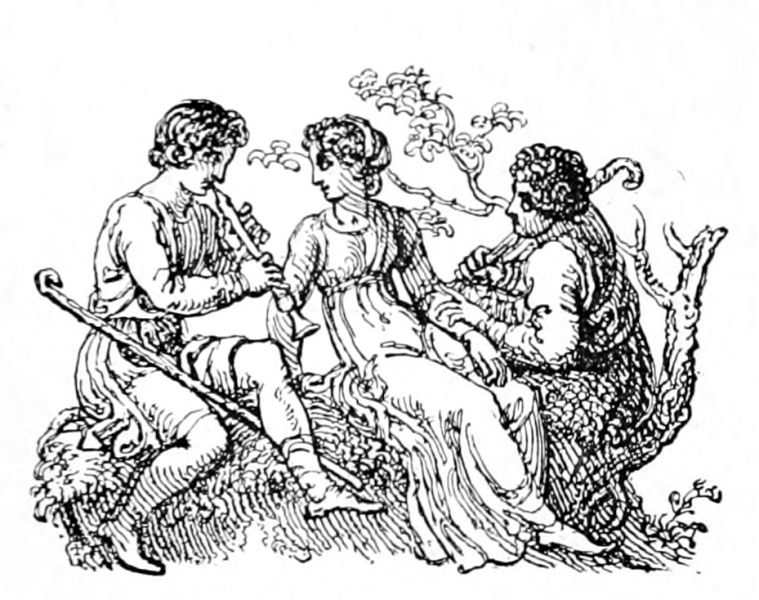
In France, however, there were plenty of artists, willing to draw on the wood, who could not get their designs engraved, at the very time that in England there were plenty of engravers who could find no artists to draw for them.
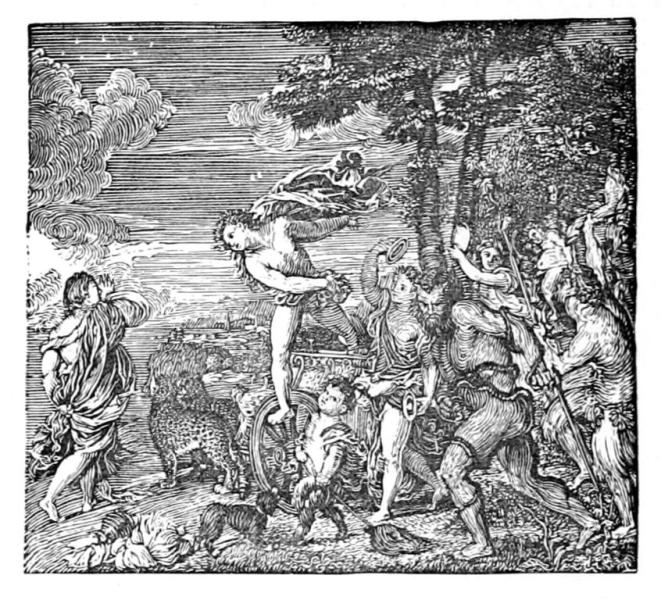
In 1816 Charles Thompson went to Paris, partly for pleasure and partly in search of work. He was at once successful. He arrived at the right moment: already a Society for the Encouragement of National Industry in France had offered a prize of two thousand francs for wood-engravings done in that country, so impressed had French[Pg 15]men been with the excellence of the work produced in England.
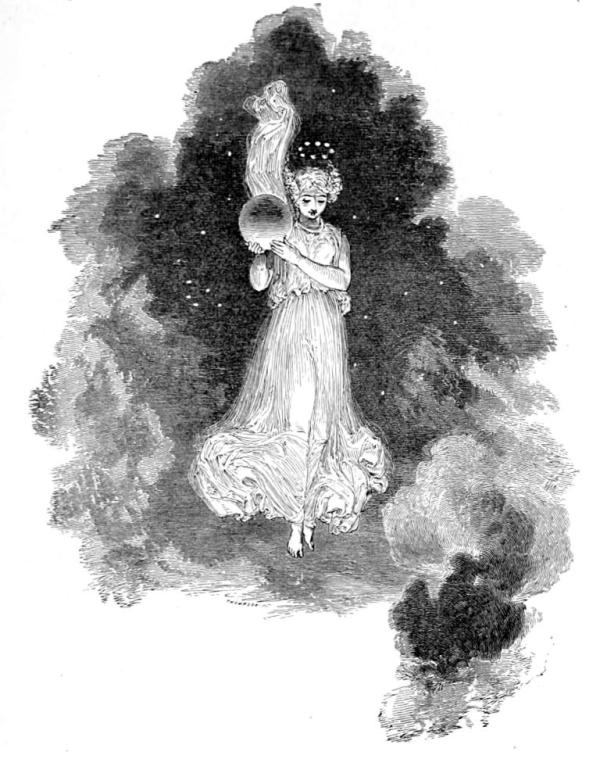
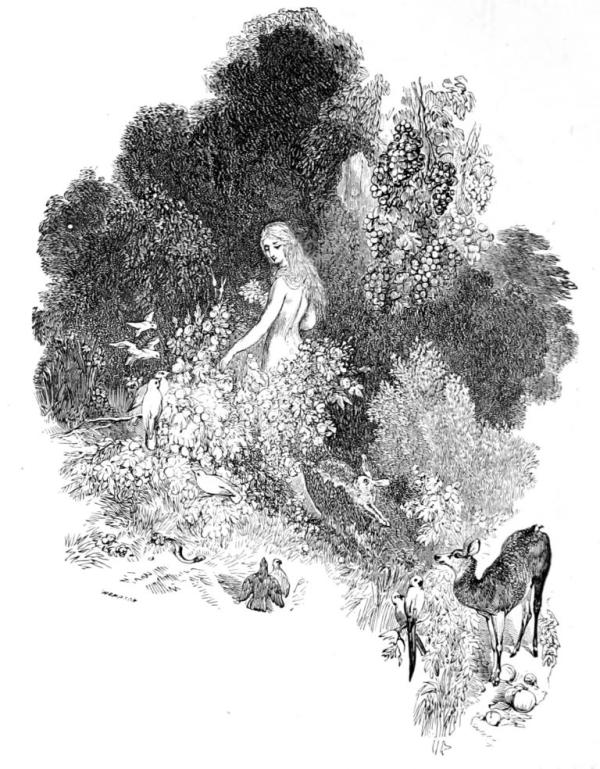
A little later on, Lavoignat and other engravers came over and worked in London with the Williamses. The result was, that, within ten years [Pg 16] of their return, a school of wood-engravers, nearly as good as the English, arose in France, together with a number of draughtsmen, greatly superior to those of England. Among the engravers who should be mentioned are Best, Brévière, Leveille,[Pg 17] Lavoignat, Piaud, Pisan, and Poirret. They worked after Gigoux, the Johannots, Isabey, Paul Huet, Jacque, Meissonier, Charlet, Daubigny, Daumier, Gavarni, Monnier, and Raffet.
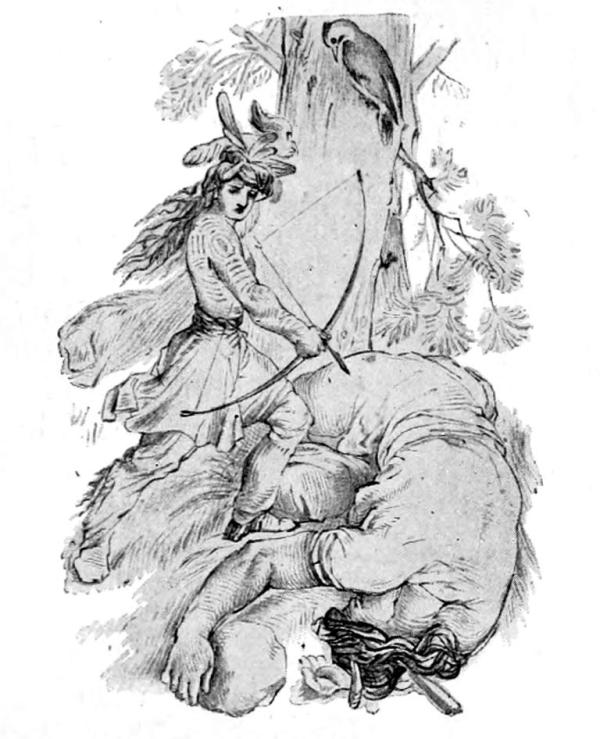

In both countries this new illustration began to make its mark about 1835. Although, in its own way, Bewick's engraving was unsurpassed, still a refinement, a freedom, was introduced by the French artists, and a faithfulness of facsimile by their engravers, many of whom, as I have said, were English, quite unknown at that time in work[Pg 18] published in England. So great was the reputation of these illustrators, artists and engravers both, that two Germans, Braun and Roehle, came to Paris to work with Brévière. This international exchange of engravers has kept up, in a measure, till the present time; M. Lepère, for instance, studied in England with Smeeton, while it is well known that the director of the "Graphic" was working in Paris almost up to 1870.
In 1830 I think one may safely say that the first really important modern illustrated book, in which wood was substituted for metal engraving, appeared in France. This was the "Histoire du Roi de Bohème," by Johannot. Though published twenty years later than Rogers' "Poems," with Stothard's illustrations, as an example of engraving it was scarcely any better. But the designs—little head and tail-pieces—were so good that they were used over and over again by "L'Artiste," the[Pg 19] organ of the Romanticists, in which they were accepted as the perfection of illustration.
At this date there is to be noted in England, among the best work done, the beautiful alphabet by Stothard, published by Pickering.
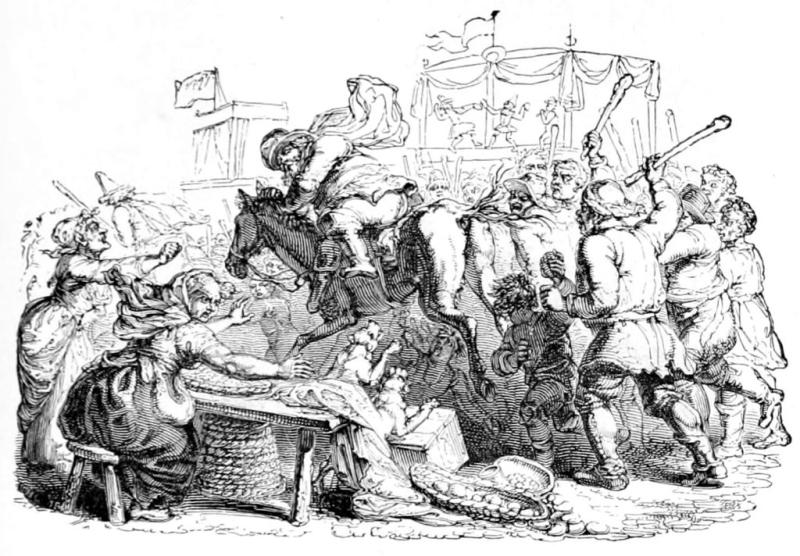
If, up to 1830, England and France were in equal rank, so far as illustration went, for the next ten or fifteen years France utterly eclipsed her earlier rival. In 1833 appeared the "Gil Blas"[8] of Gigoux, containing hundreds of drawings, which all Frenchmen, I believe, consider to be the illustrated book of the period. To Gigoux, Daniel Vierge owes more probably than he would care to acknowledge; while Gigoux himself is founded [Pg 20] on Goya. In 1838, however, was issued a book which, in drawing, engraving, and printing, completely outdistanced anything that had heretofore appeared in England or in France: Curmer's edition of "Paul et Virginie," dedicated by a grateful publisher, "Aux artistes qui ont élevé ce monument typographique à la mémoire de J. H. Bernardin de Saint-Pierre." These artists include the names of nearly everyone who was then, or soon became famous in French art. The book contains marines by Isabey, beautiful landscapes by Paul Huet, animals and figures by Jacque, and, above all, drawings by Meissonier, who contributed over a hundred to this story and to the "Chaumière Indienne," published under the same cover. All the best French and English engravers collaborated. Even the printing was excellent, for the use of overlays, made by Aristide Derniame,[Pg 21] had begun to be fully understood.[9] The printers' name deserves to be remembered: Everal et Cie.

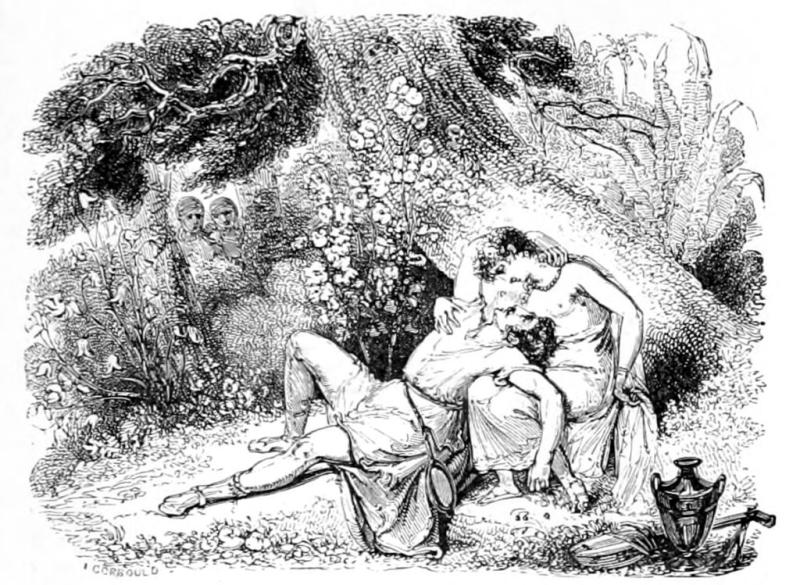
After this, for some ten years, there was a perfect deluge of finely illustrated books. The "Vicar of Wakefield," with Jacque's drawings, Molière, "Don Quixote," "Le Diable Boiteux." Magazines, too, were brought out; the "Magazin Pittoresque," which had started in 1833, published in 1848 Meissonier's "Deux Joueurs," engraved by Lavoignat; in many ways this remains, even to-day, [Pg 22] one of the best pieces of facsimile wood-engraving ever made. At that time it was simply unapproached anywhere. In "L'Artiste" and "Gazette des Entants," 1840, will be found many remarkable lithographs by Gavarni; but most of Daumier's works must be looked for in the cheaper prints, notably in "La Caricature," where also may[Pg 23] be found, from 1830, in lithography the work of Delacroix, Monnier, Lami, and others.
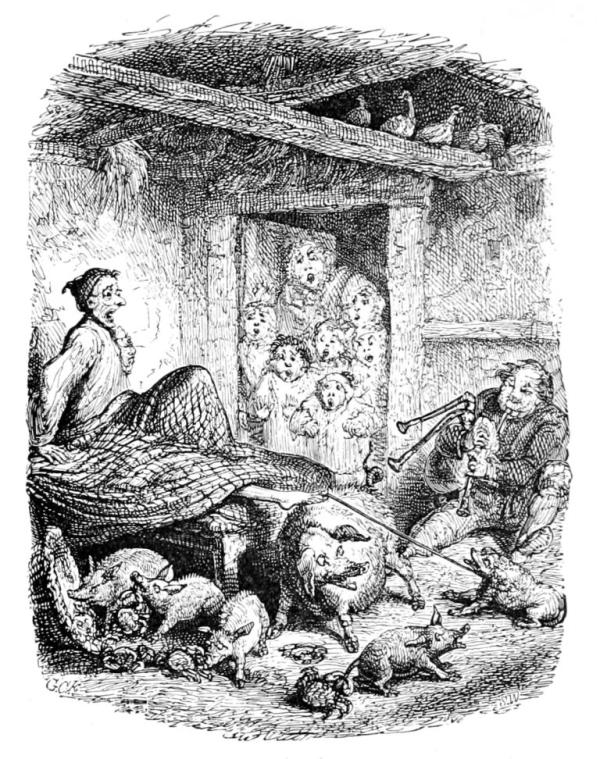
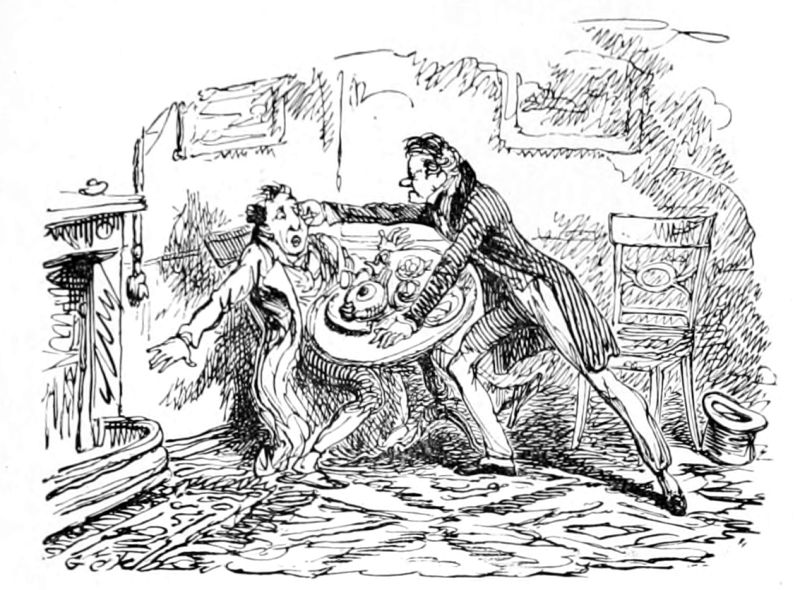
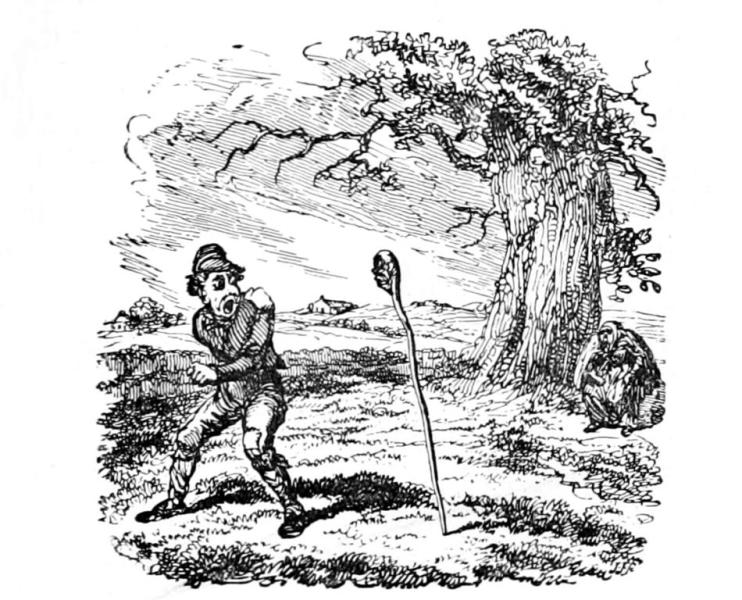
In England, too, very good work was being done, though it was not so absolutely artistic as the[Pg 24] French. Among the men who were working were Thurston, Stothard, Harvey, Landseer, Wilkie, Calcott, and Mulready. The "Penny Magazine" was started in 1832 by Charles Knight. Gray's "Elegy" appeared in 1836, the "Arabian Nights" in 1838, and, about the same time the "Solace of Song," both containing much of Harvey's best work; while later came those drawings by Cruikshank, which mainly owe their claim to notice to the marvellous interpretations of them made by the Thompsons and the Williamses. In England, however, the engravers were seeking more and more to imitate steel, the artist's simplest washes being turned into the most elaborate cross-hatching, which made each block look as if it were a mass of pen-and-ink or pencil detail, when no such work was ever put on it by the draughtsman. The artist was ignored by the engraver, until finally the latter became absolutely supreme, that is to say, his shop became supreme, while the artist who, when he had the chance, could give on a piece of wood an inch or two square, most beautiful, even great, effects of landscape, was subordinated wholly to his interpreter. For an accurate account of this inartistic triumph I would recommend the works of Mr. W. J. Linton.
In France the art of illustration continued to improve. It culminated in 1858 in the "Contes Rémois," with Meissonier for draughtsman and Lavoignat and Leveille for engravers. These illustrations are absolutely equal to Menzel's best work, and are by far the finest ever produced in France.
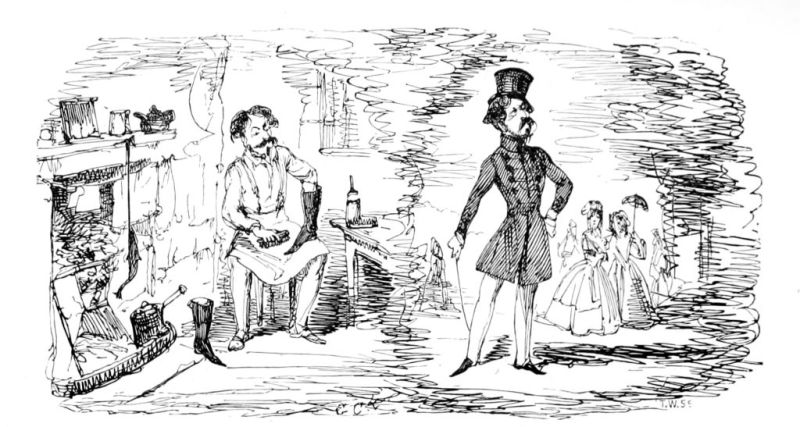
I had always supposed Menzel to occupy a position quite as original as Bewick's. But I find that he was really a follower of Meissonier. His "Life of Frederick the Great" was not published until 1842, while the "Paul et Virginie" had appeared in 1835. Besides, the first of his drawings for the "Frederick" Menzel confided to French engravers,[10] especially to the men who had reproduced Tony Johannot. But this artist's illustrations, though in point of size the most important, in point of excellence are the worst in the French book, being not unlike characterless steel engravings. It is therefore not surprising that Menzel was dissatisfied with the results, and that he proceeded at once to train a number of Germans to produce engravings of his work in facsimile. The best of these men were Bentworth, Unzelmann, the Vogels, Kreitzschmar, who engraved the drawings for the "Works of Frederick the Great," and the "Heroes of War and Peace," those monuments to Menzel's art and German illustration. Indeed, it seems to me that, until the introduction of photography, there is little to be said of German illustration that does not relate entirely to Menzel and Dietz, and some of the artists on "Fliegende Blätter," which was founded in 1844.
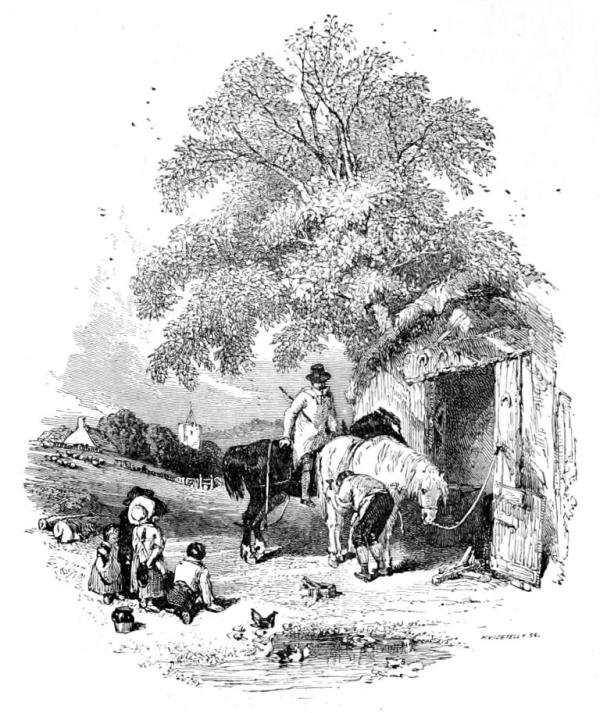
But in England it is just before the invention of photographing on wood that some of the most marvellous drawings were produced; really the most marvellous that have ever been done in the [Pg 26] country. It is true that Sir John Gilbert had been making his striking and powerful designs, Mr. Birket Foster his exquisite drawings, while much good facsimile work was done after Mr. Harrison Weir; the Abbotsford edition of Scott was [Pg 27] appearing, and the "Liber Studiorum;" true, also, that the "Illustrated London News," started in 1842, had done much to raise the general standard; "Punch," also, was commenced in 1842; much, too, had been accomplished in lithography. Still, it is with the appearance of Frederick Sandys, Rossetti, Walker, Pinwell, A. Boyd Houghton, Small,[Pg 28] Du Maurier, Keene, Crane, Leighton, Millais, and Tenniel, with the publication of the "Cornhill," "Once a Week," "Good Words," the "Shilling Magazine," and such books as Moxon's "Tennyson," that the best period of English illustration begins. Mr. Ruskin's own drawings for his books must not be forgotten.
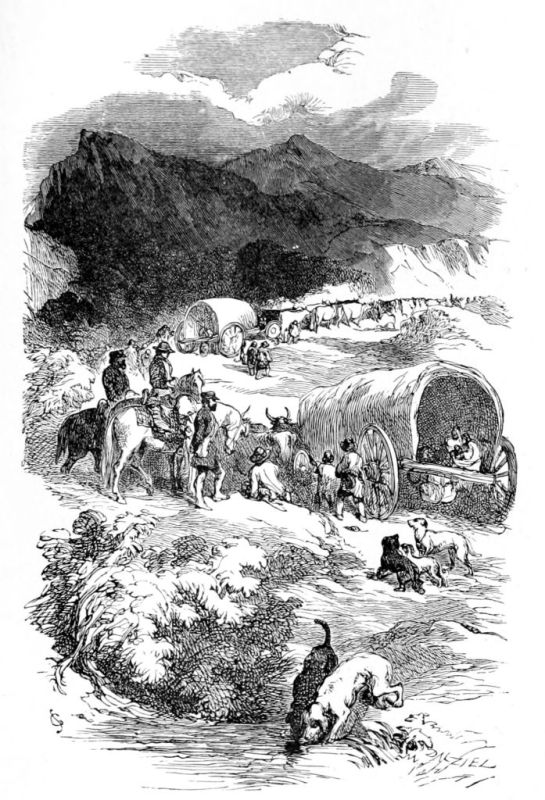
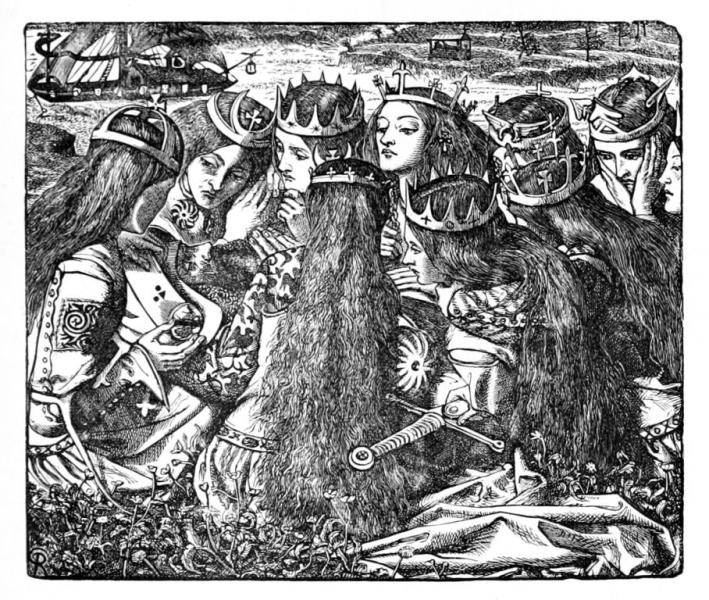
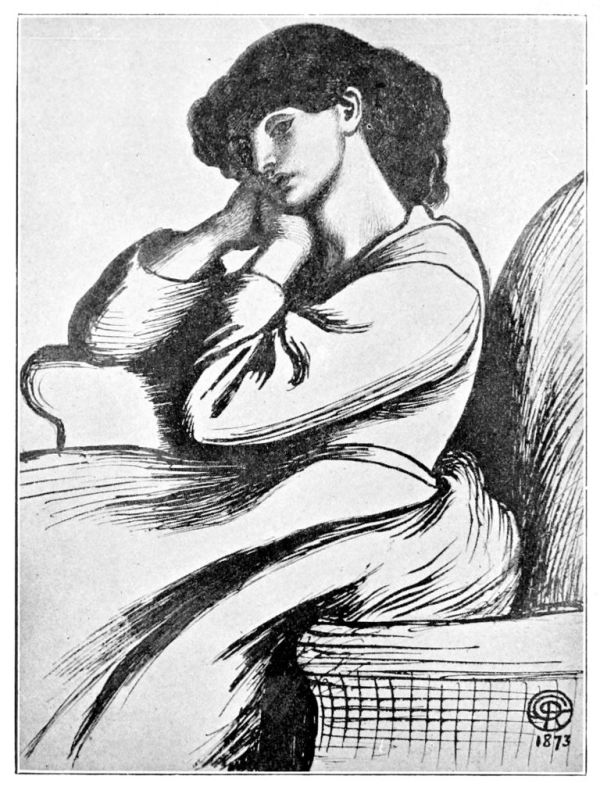
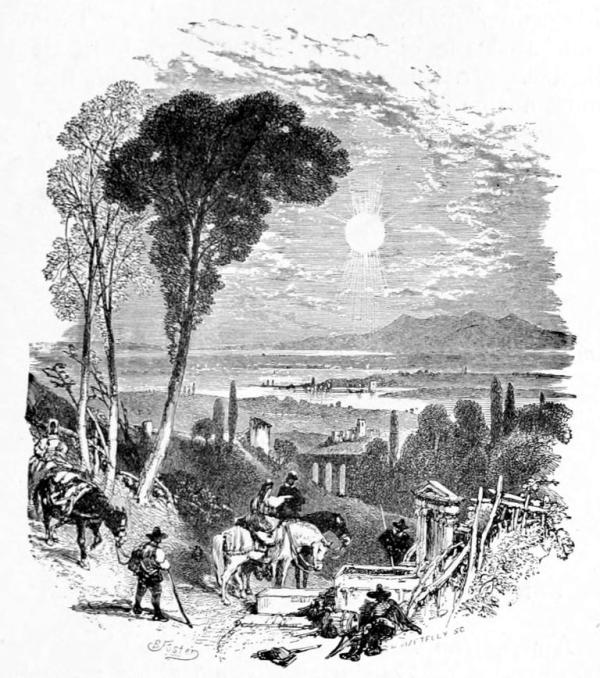
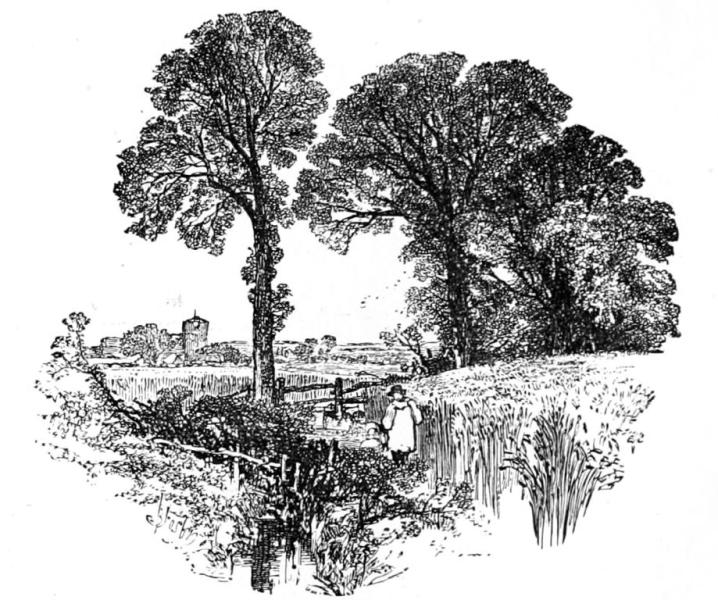
Among the English engravers, outside of the large shops of Dalziel and Swain, there are only two names that stand out conspicuously: W. J. Linton and W. H. Hooper. The excellent work of the latter, unfortunately, has been overshadowed by that of Mr. Linton, who, however, cannot be considered his equal as an engraver.
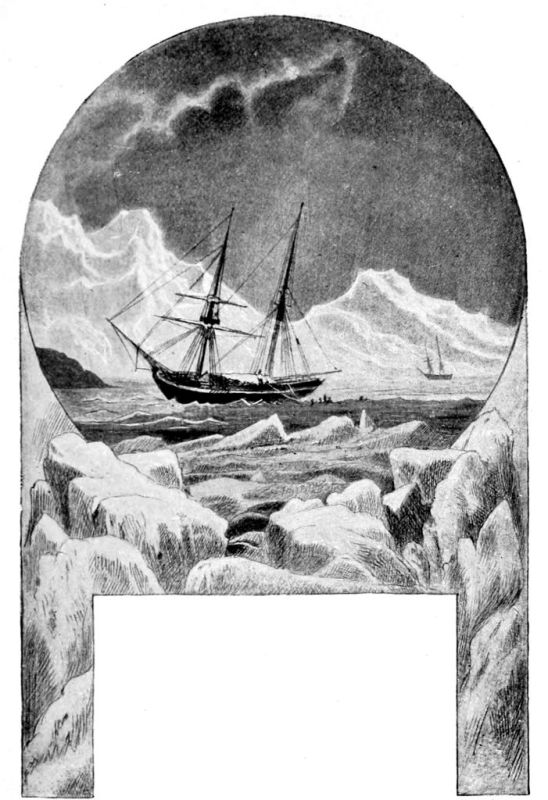
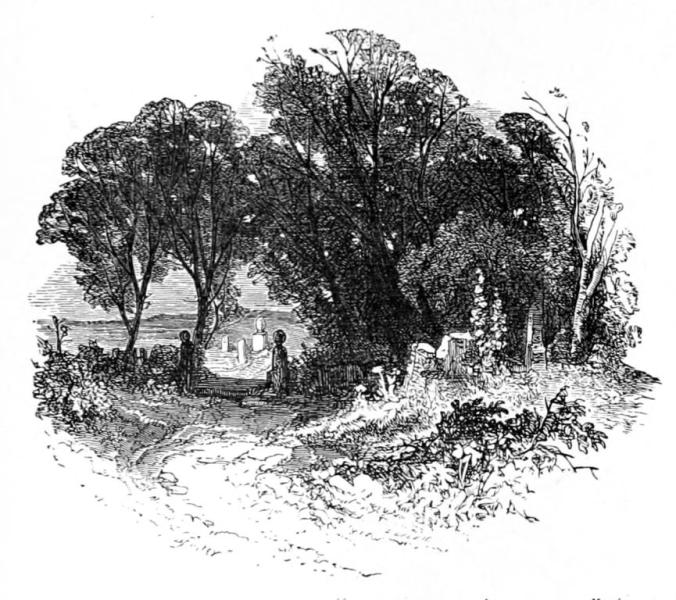
In America F. O. C. Darley was certainly the [Pg 29] first illustrator, while the French tradition was carried on for years in "Harper's Magazine" by C. E. Dœpler, who produced some very excellent little blocks. Harper's "Illuminated Bible," with more than fourteen hundred drawings by J. G. Chapman, engraved by J. A. Adams, was begun in 1837, and finished in 1843. But the greatest number of the better American drawings were either borrowed from English sources, or, as in the case of the American Tract Society, English artists, like Sir John Gilbert, were commissioned to make them. After the Civil War, the first man to appear prominently was Winslow Homer. Contemporary with him, and later, were John La Farge, Thomas[Pg 30] and Peter Moran, Alfred Fredericks, W. L. Shepherd, and the older of the men working to-day. Among the caricaturists, Thomas Nast was preeminent.
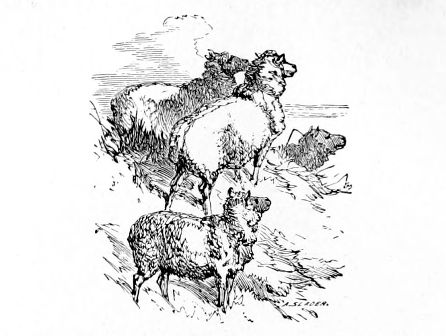
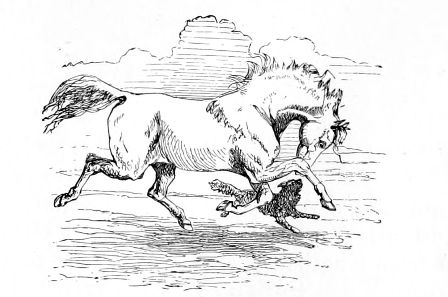
There is one American book, however, which deserves special mention. This is Harris's "Insects Injurious [Pg 31] to Vegetation," the drawings for which were the work of Sourel and Burckhardt. It is one of the most artistic books of the sort ever published in America or elsewhere. Then, too, amid a flood of other things, appeared, in 1872, "Picturesque America," and later "Picturesque Europe," which then reached really the high-water mark of American publishing enterprise in the United States, just as surely as Doré at the same time in France and England was the most exploited of all illustrators. The greater number of drawings for these books were made by Harry Fenn and J. D. Woodward. The profession of illustration at this period must have been almost equal to that of gold-mining. Everything the artist chose to produce was accepted. It would be more accurate to say everything he half produced, for the school of Turner being then superseded by that[Pg 32] of Doré, wood-engravers, like Pannemacker, for instance, had been specially trained by the artist to carry out the ideas which he merely suggested on the block.

But a change was coming; the incessant output of illustration killed not only the artists themselves, but the process. In its stead arose a better, truer method, a more artistic method, which we are even now, only developing. This later American illustration may be said to have had its beginning in the year 1876.
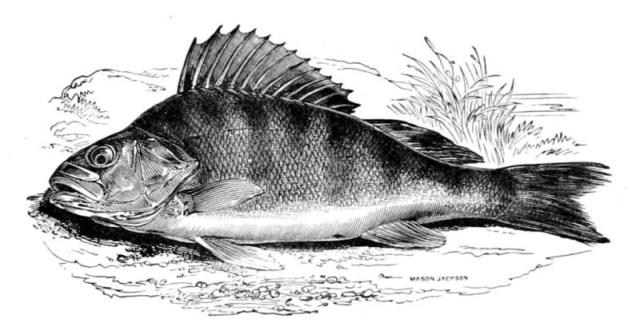
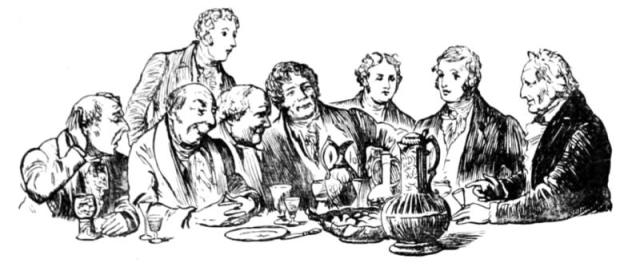
Modern illustration belongs essentially to our own times, to our own generation. To the last quarter of the eighteenth century several writers on the subject have traced its beginning. But in a measure only is this theory justified by fact. All dates are difficult and elusive. It is not easy to point to the exact year when the old came to an end and the new began. Even in cases when a certain date, 1830 for example, seems to mark a positive barrier, it does so only because, with constant use, it has become the symbol of a certain change.
But the cause of this modern development is not hard to discover. It was the application of photography to the illustration of books and papers which established the art on a new basis. As the invention of printing gave the first great impetus to illustration, so surely has it received its second[Pg 34] and more important from the invention of photography. The gulf between primitive illuminated manuscripts and Holbein's "Dance of Death" is not wider than that which separates the antiquated "Keepsakes" and "Forget-Me-Nots" from the "Century Magazine" and the "Graphic." The conditions have entirely altered.
Greater ease of reproduction, greater speed, greater economy of labour have been secured, as well as greater freedom for the artist, and greater justice in the reproduction of his design. As a consequence, illustration has increased in popularity, the comparative cheapness of production placing it within reach of the people who have ever taken pleasure in the art, since the days when all writing was but picture-making; it has gained artistically, since the fidelity of the facsimile now obtained has induced many an artist of genius, or distinction, to devote himself wholly to black and white. If, on the one hand, this popularity threatens its degradation (foolish editors and grasping publishers flooding the world with cheap and nasty illustrated books and periodicals), on the other, the artistic gain promises to be its salvation, for not in the days of Dürer himself was so large a proportion of genuinely good work published.
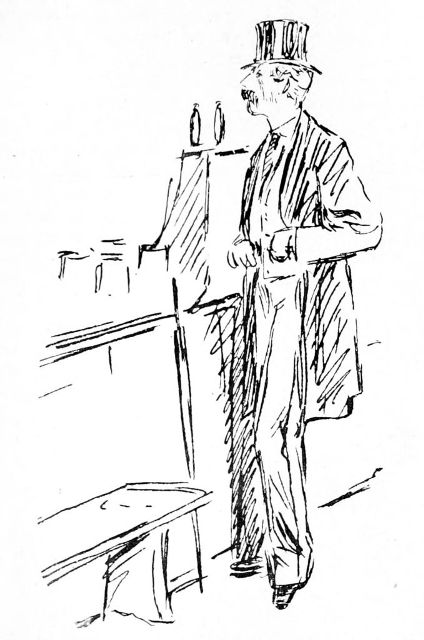 BY CHARLES KEENE. FROM A PEN DRAWING IN THE
POSSESSION OF THE AUTHOR.
BY CHARLES KEENE. FROM A PEN DRAWING IN THE
POSSESSION OF THE AUTHOR.
The first attempt to photograph a drawing on the block for the purpose of engraving, is said to have been made in England, in 1851 or 1852, by Mr. Langton, an engraver in Manchester, assisted by a photographer whose name unfortunately has not been preserved. It may be granted that this was the first attempt. But artistically it was of small [Pg 35] importance, as nothing, so far as I know, directly came of it. That the process was well enough known in 1865 is proved by the following extracts from the "Art Student" of that year: "The picture is obtained in the usual way, and the film of collodion afterwards removed by using a pledget of cotton moistened in ether. A block so prepared works as well under the graver as an ordinary drawing." But I do not believe that even this process of photographing on the block was very practically used.[11] To take one case in point, the "Amor Mundi" by Sandys, published in the "Shilling Magazine" for April, 1865, which I reproduced by photogravure in "Pen Drawing and Pen Draughtsmen:"[12] the plate was made from a negative taken from this design after it had been drawn on the block. Mr. Swain has told me that he photographed the drawing, because he was so delighted with the original (which he was about to cut to pieces) that he wanted to preserve an exact copy. Now, had the art of photographing drawings on wood been generally known, Mr. Swain would have photographed the drawing on to another block, reversing the negative, and kept the original. Instead, he simply photographed the original before it was engraved. The same thing is said to have been done with some of Rossetti's illustrations for Tennyson; while Messrs. Dalziel kept back their "Bible Gallery" for many years, until drawings could be [Pg 36]decently photographed on the wood. But the practical application of photography to the transferring of drawings to wood blocks, although probably known about as long ago as 1850, in a few offices is scarcely practised to-day. I think, however, one may safely say that about the year 1876 this practice became fairly general; one may therefore, for the sake of convenience, take the year 1876 as the date of the beginning of modern illustration.
As this change is probably the most important in the whole history of the art, I think it may be well to explain shortly how drawings were produced before the introduction of photography, and how they are made now.
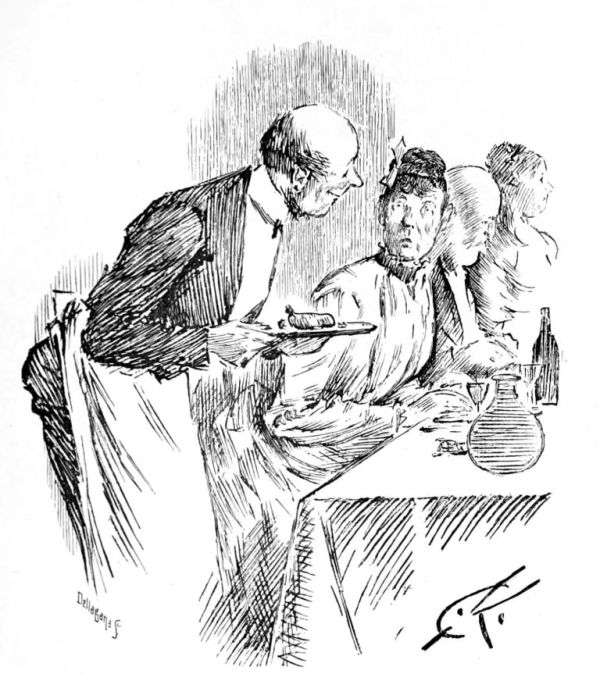
Before the time of Dürer and Holbein, the artist was of small importance; indeed, so too was the engraver, though we hear much about him. The artist made his drawing either on a piece of paper or on the block. Judging from some of the work in the Plantin Museum (the sole place where we can obtain any actual data[13]), the design was made in rather a free manner; the argument against this conclusion, of course, is that comparatively few originals exist. There is, however, in the British Museum a drawing of an Apollo by Dürer[14] on which are the marks of a hard lead pencil, or metal point leaving a mark, used to trace it, while the word "Apollo" in the mirror is written [Pg 37] backwards. On the other hand, in the old Herbals are cuts of the artist making his drawing from nature, the draughtsman putting it on the block, and the wood-cutter cutting it. When we come to engraving on metal, we find that, though the wood-cutter need not have been an artist, he only having to follow lines given him, or to make certain mechanical ones to suit himself, the metal engraver was obliged to be an artist, because he had to be able to copy the picture or design entrusted to him. But mechanical aids were found for him too, with the result that the later engravings on metals, as well as the old woodcuts, became the productions of shops, in which certain parts were done by certain men, and the real artist, whether he were draughtsman or engraver, had a small share in the actual reproduction. The next stage was the entire disappearance of the wood-cutter, when finally all books were illustrated by means of steel and copper. With Bewick who, with a graver, engraved his own designs on the end of the block, instead of cutting them with a knife on the side of a plank, as everyone had previously done,[15] there was introduced a new phase—the possibility of drawing with a pen, or pencil, or brush, or wash, upon the whitened surface of box-wood, a good medium, a design which should be absolutely facsimiled by the engraver. The engravers of Bewick's time and until about 1835 or 1840, being true artists and craftsmen, knew that their business was to engrave the artist's design as [Pg 38]accurately and carefully as they could, since what the latter wanted was the absolute facsimile of his work and none of their suggestions. But by the fifties, the artist either had become wholly indifferent to the way in which his work was engraved, or else he was absolutely under the thumb of the engravers. His entire style, all his individuality, was sacrificed for the benefit of the engraving shop, from which blocks after him were turned out. The head of the firm whose signature they bore may never have done a stroke of work on them. Even a man strong as Charles Keene was completely broken up by this system, though he may not have realized it. Artists were told that they must draw in such a way that the engravers could engrave them with the least time, trouble, and expense. Two attempts were made to escape from the wood-engraver who was again endeavouring to reduce everything to a facsimile of steel: by the use of steel plates themselves, as in the case of the later editions of Rogers' "Italy;" and also, by the practice of aquatint and lithography, in France by such men as Gavarni and Daumier, and in England by Prout, Roberts, Harding, Nash, and Cotman. But lithography in this country, as a method of illustrating books and papers, never can be said to have become very popular, though in France for years its employment was general.
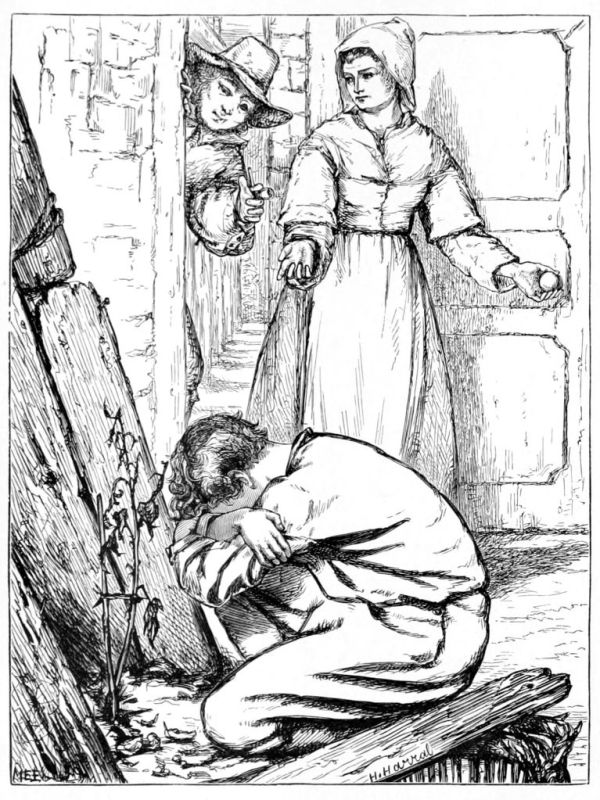
The art of wood-engraving was dying in the clutch of the engraver, when an artless process came to its aid. For, at this crisis it was discovered that a drawing made in any medium, upon any material, of any size (so long as proportion [Pg 39] was regarded), might be photographed upon the sensitized wood-block in reverse. The importance of the discovery will be appreciated when it is remembered that, before this, the poor artist, if he were drawing the portrait of a place directly on the block, was compelled to draw it the exact size it was to be engraved, to reverse it himself, and to have his actual drawing destroyed by engraving through it. Once photography was used, the drawing could be made of any size, it was mechanically reversed, the original was preserved, and the artist was free. Gone, however, according to the engraver, was the engraver's art. It is true that the wood-chopper disappeared: the man who could not draw a line himself, and yet would pretend that his mechanical lines, made with a graver or ruling machine, were more valuable than the artist's, and who had no hesitancy in changing the entire composition of a subject if he did not like it. But his disappearance was a great gain. In his place there arose the latest school of wood-engravers. Many of the new were perhaps no better than the old men, for not knowing how to draw, not being artists, they directed their energies often to the meaningless elaboration of unimportant detail. But at least this work could always be corrected, now that the original drawing was preserved and could be compared with the print from the engraved block.
In England, from 1860 to 1870 some very remarkable drawings were made and engraved upon the block. During the years just before the introduction of photography, Walker, Pinwell, Keene, Sandys, Shields, and Du Maurier were[Pg 40] illustrating. To a certain extent, they seem to have insisted upon their work being followed. Between 1870 and 1880, when the actual change was made from drawing on wood to drawing on paper, even a larger number of men were at work. The "Graphic" and the "Century" were founded, and enormous were the improvements in France and Germany. But between 1880 and 1890 came the greatest development of all. For these years saw the perfecting and successful practice of mechanical reproduction: that is, the photographing of drawings in line upon a metal plate or gelatine film, the biting of them in relief on this plate, or the mechanical growth of a plate on the gelatine, resulting in the production of a metal block which could be printed along with type. This method of replacing the wood-engraver by a chemical agent has, however, been the aim of every photographer since the time of Niepce, who made the first experiments, while the process was patented by Gillot on the 21st of March, 1850.[16] These ten years are also noted for the invention of what is now generally known as the half-tone process: that is the reproduction by mechanical means of drawings in wash, or in colour, worked out in Europe by the Meisenbach process, in America by the Ives method. In many ways wood-engraving as a trade or business has been, it may be only temporarily, seriously damaged. However, in the very short period [Pg 41] since mechanical reproduction has been introduced, those wood-engravers who really are artists have been doing better work, because they can now engrave, in their own fashion, the blocks they want to. The art of wood-engraving has progressed if the trade has languished.
BY G. DU MAURIER.
FROM A WOOD-ENGRAVING.
“THE ENGLISH ILLUSTRATED
MAGAZINE.”
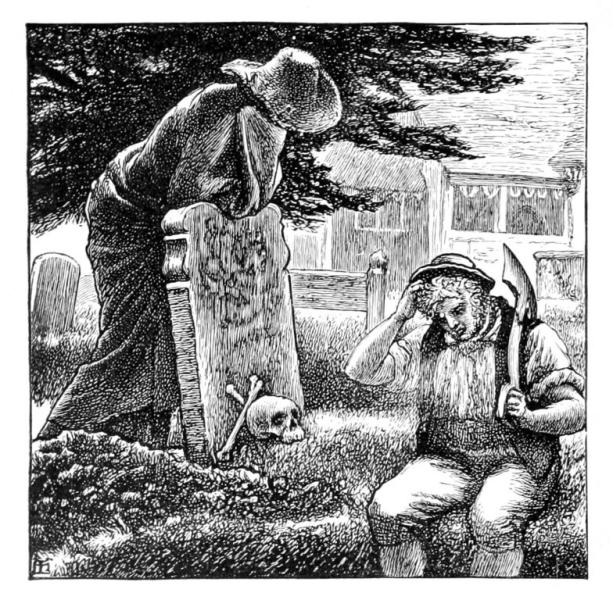 BY ARTHUR HUGHES. WOOD-ENGRAVING FROM
GORDON HAKE’S “PARABLES”
(CHAPMAN AND HALL).
BY ARTHUR HUGHES. WOOD-ENGRAVING FROM
GORDON HAKE’S “PARABLES”
(CHAPMAN AND HALL).
The most modern of these developments are worthy of special notice both in Europe and America. But before pointing out the changes and results that have come from them, it may be well to say something about process. Upon this subject there are two widely differing factions. It is not at all curious that the artists, the men who practise the art of illustration, should be found almost unanimously on one side, while the critics, whose business it is to preach about an art of which they know nothing in practice, are ranged upon the other. There are a few critics of intelligence, who understand the requirements and limitations of both process and wood-engraving, just as there are hack and superior illustrators who neither know nor care anything about any form of reproduction.
Many advantages are claimed for wood-engraving. The print from an engraving on wood gives, it is said, a softer, richer, fuller impression than the print from the mechanically engraved process block. But not in one case out of a hundred thousand is the wood block itself printed from: the illustration which delights the critics has, in reality, been printed from a cast of the block made of exactly the same metal as the cast from the process block, and the softness, the velvety[Pg 42] quality, is therefore due to the imagination of the critic who is unable to tell the difference. Indeed, to distinguish between a mechanically produced block and one engraved on wood, provided the subject of the drawing is reasonably simple, is so difficult, that when neither of the blocks is signed, no living expert on the subject would venture an off-hand opinion. Between good facsimile engraving and good process there is really no difference at all, excepting in a few particulars. For in the mechanically engraved process block, to use the ordinary term, the lines made by the artist on paper, are photographed directly on to the metal plate; these lines are protected by ink which is rolled upon them with an ordinary ink roller, the sticky ink adhering to the lines of the photograph, and nowhere else. This inked photograph is then placed in a bath of acid, and the exposed portions are eaten away; the zinc or other metal block is set up with a wooden back, type high, and is ready to print from. The process is so ridiculously simple that it can be done in a very few hours.
Process blocks for line work, and nearly always half-tone blocks, have to be finished by a clever engraver especially employed for the purpose. It is very hard for him, as it leaves him no chance for original work, but in course of time it is hoped that the process will be so perfected that the services of the engraver can be dispensed with. There are other methods, such as that of using swelled gelatine, to produce the same results, but the biting of zinc that I have described is the most popular.
In the case of the wood-engraving, the drawing is photographed in the same way on the wood block, but the engraver proceeds slowly, tediously, and laboriously with his tools to cut away the wood and leave the lines in relief. This requires an amount of devotion to painstaking drudgery which is appalling. As many days will be given to the production of a good wood-engraving, as hours are needed to produce a good process block. The results obtained by a first-class wood-engraver on the one hand, on the other by the first-class mechanical reproduction which is always watched by a first-class man, may be so close as to be indistinguishable. But there is no artistic gain in employing the wood-engraver, while great artistic loss is involved, since the latter, who can scarce enjoy doing this sort of thing, is compelled to waste his time in competing with a chemical and mechanical combination which does the work just as well; besides, there is as much difference in the cost as in the methods themselves, a process block being worth about as many shillings as the wood-engraving is pounds. As the results are equal, I see no reason why the publisher should be called upon to pay this large sum of money, unless he wishes to, simply for what is absolutely a fad. I admit, however, that facsimile engravings by the early Englishmen and Frenchmen, and some of the Americans and Danes of the present day, are worth quite as much money as is asked for them. But I am just as certain that mechanical engravers will go on improving their mechanical process until facsimile wood-engravers are left in the rear. Ordi[Pg 44]nary good process work, which can be printed with type, is, at the present moment, equal to any facsimile wood-engraving. The more elaborate methods, such as the photogravure of Amand Durand, are infinitely better, and only to be compared to etching.
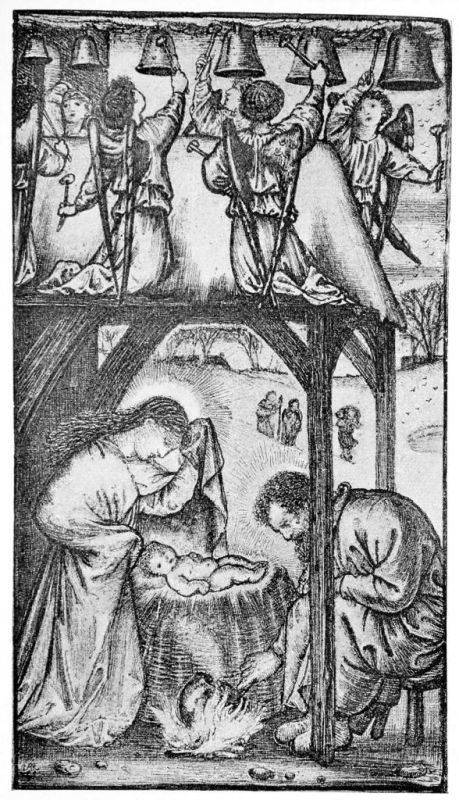
To contrast the mechanical reproductions of black and white wash, or colour drawings with wood-engravings after them is, however, another matter. Many drawings, owing to the medium in which they are done, will not as yet reproduce well mechanically. Indeed, to have one's drawings rendered satisfactorily, by the half-tone process, requires such an enormous experience and knowledge of the improvements continuously being made in the many different methods used by the different process men, that the artist, if he kept posted in all the developments and modifications, would have very little time left to produce works of art of his own. On the other hand, the artist may admire the work of a sympathetic wood-engraver whom he is delighted to trust with his drawings: it is always a pleasure to see the translation of a good drawing by a good wood-engraver. From the point of view of engraving, nothing is more hopelessly monotonous than process; for the aim of the process-man, as of some of the best wood-engravers, is to render the drawing in wash, or in colour, so well, that there should be no suggestion of the methods by which the results are obtained: to give the drawing itself, and this is exactly, in the majority of cases, what the artist wants. Naturally, he prefers an absolute reproduction [Pg 45] of his drawing, to somebody else's interpretation of it. He is not eager to have another person interpret his ideas for the public; he would rather the public should see what he has done himself with his own hands. This reasonable desire process now begins to realize. By the half-tone process, a photograph is made of a drawing with either a microscopically ruled glass plate or screen in front of it, which breaks up the flat tones into infinitesimal dots, or squares, or lozenges; or else, there is impressed into the inked photo, in some one of a dozen ways, a dotted plate which will give the same effect.[17] These dots, squares, or lozenges lend a grain to the flat washes, translating them into rectilinear relief, yielding a printing surface,—accomplishing, in a word, the same end as the wood-engraver's translation of flat washes into lines and dots. The great objection hitherto to half-tone process has been, especially in large reproductions, that the squares or lozenges produce a mechanical look which is entirely absent from a good wood-engraving, the very essence of engraving being variety and, therefore, interest in the lines drawn with the graver. The crucial point, however, is this: even the greatest wood-engraver, in reproducing a drawing made in tone, is forced to translate this tone by lines or dots; in fact, instead of the wash, to give lines which do not exist in the original drawing. Though he may be so clever as to succeed in reproducing the actual values of the original, which he rarely does, he has still entirely altered the original appearance of the [Pg 46]work. The object of the half-tone process is to give, not only these actual values, so often missed by the engraver, but also the brush-marks and the washy or painty look of the original, a result much further beyond the powers of any wood-engraver, than beyond the possibilities of process at the present day. It is said that process reproduction is but a mechanical makeshift, and this is a term of reproach against it. But it must be evident that wood-engraving, especially for the reproduction of wash, and, in a less degree, of line drawings, is a far more mechanical makeshift. There is no possible way in wood of representing the wash, while in reproducing line on the block, at least two cuts are required with the graver to get what the mechanical process gives at once. Moreover, as soon as the line drawing becomes at all complicated, it is impossible for the engraver to follow it on the wood block.
 BY WALTER CRANE. PROCESS BLOCK FROM A WOOD-ENGRAVING BY EDMUND EVANS,
IN COLOURS IN “BEAUTY AND THE BEAST”
(ROUTLEDGE).
BY WALTER CRANE. PROCESS BLOCK FROM A WOOD-ENGRAVING BY EDMUND EVANS,
IN COLOURS IN “BEAUTY AND THE BEAST”
(ROUTLEDGE).
Therefore, it seems to me that the strictures which have been applied to process are far more applicable to wood-engraving. Now that wood-engraving has become a medium for the reproduction of any and every sort of design, it has stepped quite outside its proper province. Almost anything can be done with a block of wood and a graver, but it must be evident to people of average intelligence that a very great gulf separates those things which possibly can be done, from those which rationally should be attempted. Still, to-day any subject that can be engraved on wood may be printed; and if one likes to try experiments, why should he be stopped? The wood-engraver of [Pg 47] to-day has been compelled to suppress and efface himself. When he proposes to reproduce another man's designs, if he is really a great wood-engraver, he recognizes that his sole function is to render the original, faithfully giving as much of the artist's handiwork as possible, and as little of his own. That this must be to many a most galling and annoying position is evident. But to rebel against it is absurd, and for the engraver to tamper with an artist's original design is as unwarrantable as for an editor to change an author's manuscript after the final proof has left the writer's hands.
There have been two, or perhaps three, great periods of producing works of art on the block. First, that of the old woodcuts, which were undoubtedly great, though what the draughtsmen thought of them we shall never really know. Secondly, the period of Bewick, who engraved his own designs, and therefore was his own master, doing what he wanted. And thirdly, to-day, the greatest revival of all. Mr. Timothy Cole, in his interpretations of the old masters (though some of the painters whom he has reproduced might object to certain things in his reproductions, they could but admit that never before have such beautiful pictures been made out of their own), has suggested one field for the artist who is a wood-engraver; the creation of masterpieces in his own medium of the painted masterpieces of other, or of his own time. Again, we have a man like Mr. Elbridge Kingsley working directly from nature, and producing the most amazing and interesting results; or M. Lepère, who is engraving his own designs[Pg 48] exactly as Bewick did, or else giving us those marvellous originals in colour, only equalled by the Japanese who, for ages, have been masters among wood-cutters; or Mr. Kreull, who is doing marvellous portraits on the block.
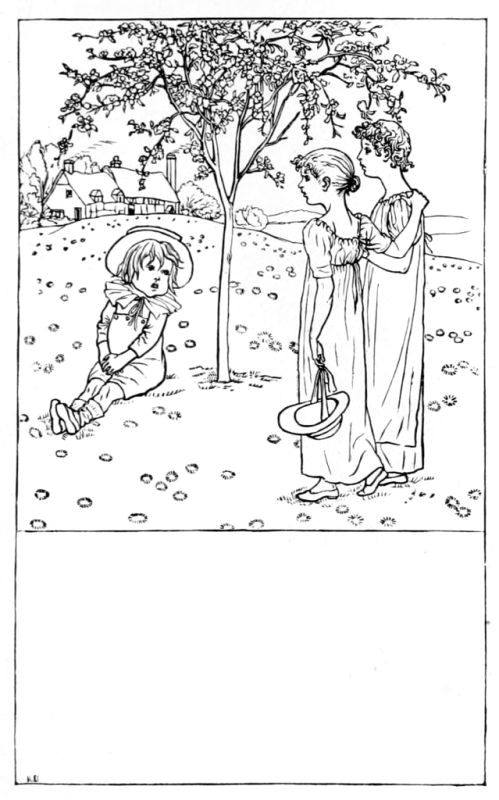
With so broad a scope at its service in the hands of artists, wood-engraving is not in the slightest danger. With the added possibilities of making new experiments, such as printing from lowered blocks, reviving chiaroscuro, and an infinitude of other processes open to the artistic wood-engraver, there is no probability of its becoming a lost art. I have nothing but the highest praise for the work of men like Cole, Kingsley, Gamm, French Jüngling, Baude, Kreull, Florian, Hendriksen, Bork, Hooper, and Biscombe Gardner. This modern facsimile wood-engraving is magnificent in its way, and is quite as legitimate and decorative as any of the old work, only process is bound to supersede the greater part of it. Wood-engraving has survived the mediæval mechanical limitations which were imposed upon it by the primitiveness of the printing-press, but which have been made into its chief merits. It has survived the ghastly period immediately succeeding Bewick, when the sole end of the engravers on wood was to imitate the engraver on steel or on copper. It has survived the stage of the shop run by a clever business-man who merged the individuality of all his artists and engravers into that of his own firm. It has survived the backing of Mr. Linton, which at one time threatened to kill it entirely. And the strain put upon it by magazine-editors and [Pg 49] book-publishers has been relieved by the intervention of mechanical process.
I believe that it will continue and flourish as an original art, side by side with process, until it runs against another of the snags or quicksands which every half century seem to imperil it. Still, at the present moment, its artistic outlook is very bright,—so also is that of process.
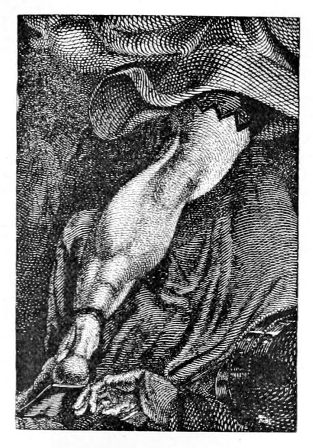
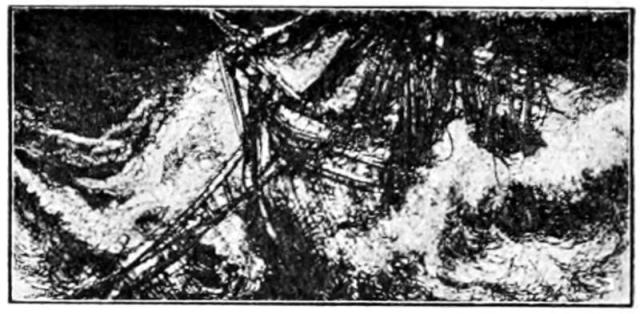
The nearer we approach our own time, the more difficult it becomes to write of illustration. For, although it is the duty of an editor, and even of an artist, to note all that is going on around him, at the present time this is almost impossible, so great is the output from the press, so varying are the fortunes of many artists. The man who, one day, promises to revolutionize all illustration, the next, disappears, or, worse still, becomes absolutely common-place. And process supersedes process with a rapidity that is perfectly bewildering.

But it seems best to begin with modern illustration in France, where the greatest activity has, until lately, existed. In the decade from 1875 to 1885, nowhere in the world were such big men working, or having their work so well reproduced. Fortuny and Rico, settled in Paris, were exhibiting their marvellous drawings. If Meissonier had[Pg 51] ceased to illustrate, Doré, Detaille, De Neuville, and Jacquemart were at the height of their powers. The first great book illustrated by process appeared in the midst of this period: Vierge's "Pablo de Ségovie," published in 1882; while the last years saw the appearance of the Guillaume series which, it was believed, would prove to be the final triumph of process. At the same time Baude, Leveille, Lepère, and Florian were busy producing their masterpieces of wood-engraving. Publishing houses were issuing the most artistic journals, probably, the world has ever seen: "La Vie Moderne," "L'Art," "La Gazette des Beaux-arts," "Paris Illustré," "La Revue Illustrée," "Le Monde Illustré," "L'Illustration," and "Le Courrier Français."
But from 1885 onward, there has been a change, and this change is not difficult to account for. There are too many illustrators and too few publishers—I mean publishers worthy of the name—and, most important, too few real artists.
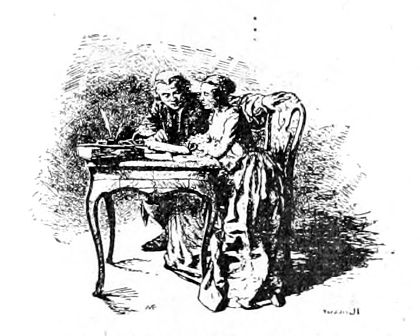
When, in 1879, the new process of "Gillotage," as all process is described in France, was reasonably perfected—Jacquemart's "Histoire de Mobilier," being one of the first important books to be reproduced [Pg 52] mechanically—every artist wished to try it. The consequence was that the catalogues of the Salon, the weekly papers and monthly magazines, were made bright and gay and charming with autographic artistic work; while wood-engravers, feeling that their art was in danger, were put upon their mettle and engraved a multitude of amazing blocks. Now that illustration has arrived, and by its aid many of the biggest men in France have arrived too, there has come a period of commonplaceness and content. The Frenchman, who is even more insular in his views of art than the Englishman,—unless his art is brought to him, when he proves himself catholic enough,—knows that bad work is being turned out in his own country, but believes that the same thing must be happening the world over, though he has heard vaguely of the American magazine, the German paper, and the English book. But since 1885, it may be said that every French periodical has fallen away in quality, if it has not ceased to appear altogether. The fine and expensive volumes, which in 1835 were published in France, have been succeeded by the three-franc-fifty Guillaume form, which, since the immortal "Tartarin," has degenerated steadily both in number and excellence of illustrations. Looking back on the original [Pg 53] series, it does not seem so very fine, but eight years ago it was an enormous advance on anything that had been done. Even then, however, there was a rumour that this excellence was obtained at the expense of the artist, and that most of the [Pg 54]clever work of Myrbach and of Rossi was more in the nature of an advertisement than anything else. It is perfectly well known that even Vierge had to await the generosity of an English publisher to recompense him for "Pablo de Ségovie." It will also be found that certain of the large French publishing houses and leading magazines have become limited companies, or "Sociétés Anonymes;" while men, who may be clever enough in business affairs, have been set to direct artistic matters of which they are entirely ignorant. If the standard of illustration is daily falling in France, this fall is owing mainly to the incompetence of editors and the rapacity of publishers. To-day, if one wishes to see the best work of French draughtsmen and engravers, one looks abroad for it, to America first and then to England and Germany, where French artists are forced to publish their drawings in order to obtain adequate pay or decent printing. It is pitiful, but the example is very contagious.
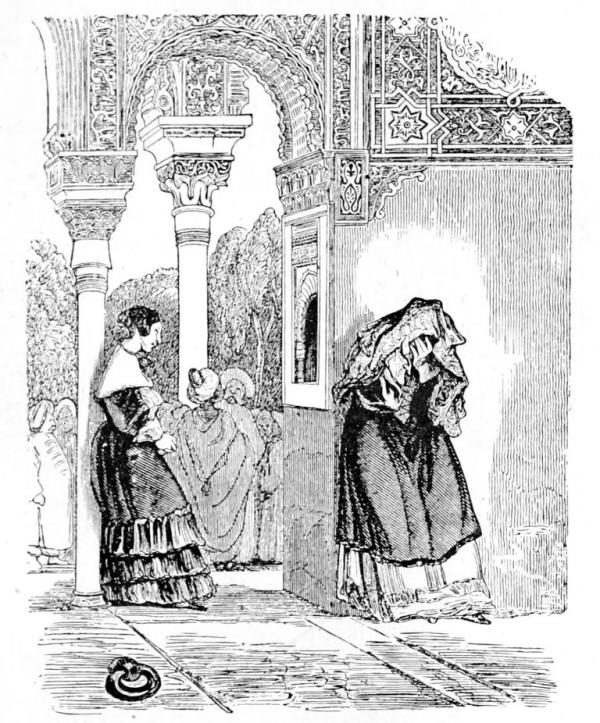 JEAN GIGOUX. FROM “GIL BLAS” (FRENCH).
JEAN GIGOUX. FROM “GIL BLAS” (FRENCH).
Another cause too has operated against the production of fine books and fine magazines. This is the "Supplément littéraire et artistique" given away each week with papers like "Gil Blas," "L'Echo de Paris," "La Lanterne," "Le Petit Journal," and occasionally "Le Figaro." It is especially in "Gil Blas" that the best French work is now to be found, usually printed in colour. But most of the others—there are notable exceptions—either publish the veriest drivel and dirt, both from the literary and artistic standpoint, or else the drawings of mere boys and girls just out of the art schools, who give their designs to the[Pg 55] publishers for little more than the sake of having their names in the papers. Under these circumstances, which actually exist, it is becoming well-nigh impossible for a draughtsman to live in France. Printing, too, has degenerated, until French printing now ranks with the worst.
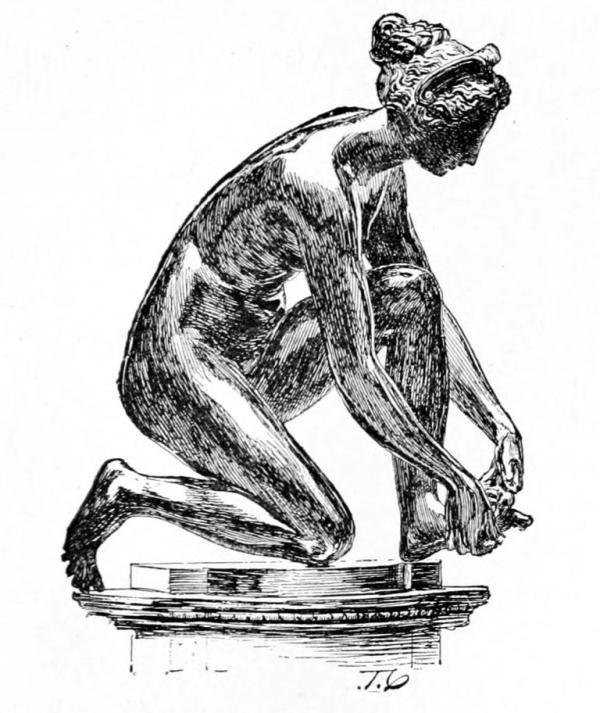 BY JACQUEMART. PEN DRAWING. FROM THE
“HISTORY
OF FURNITURE.”
BY JACQUEMART. PEN DRAWING. FROM THE
“HISTORY
OF FURNITURE.”
On the other hand, a few firms, like Goupils, are producing excellent colour work in the most expensive fashion, and good cheap prints as well.[Pg 56] The printing of Guillaume for Dentu's "Le Bambou"—most of the illustrations are on wood—is to be commended, as it shows off the work of artists and engravers to perfection. While one notes clever paper-cover designs on many new books.
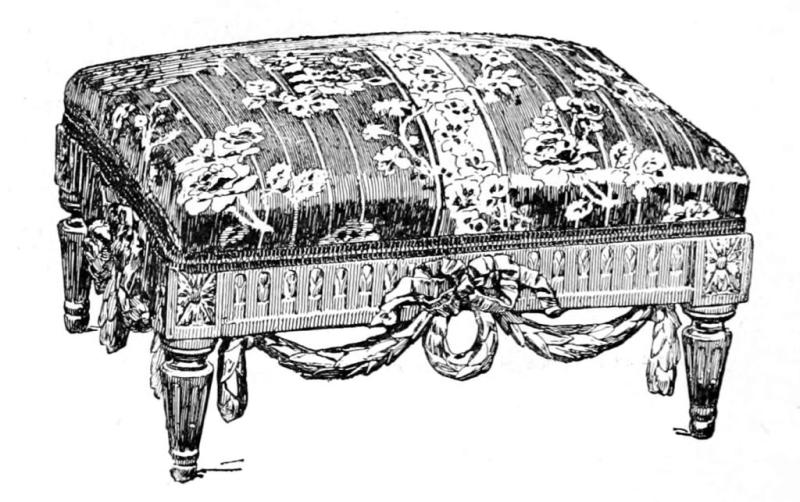 BY JACQUEMART. PEN DRAWING. FROM THE
“HISTORY
OF FURNITURE.”
BY JACQUEMART. PEN DRAWING. FROM THE
“HISTORY
OF FURNITURE.”

That bad or mediocre work is supreme in France at the present time is proven by the fact that two of the most artistic journals have ceased to appear; Goupil's "Les Lettres et les Arts," and Octave Uzanne's "L'Art et L'Idée." Neither of these magazines was very expensive to produce,—that is in comparison with many others. But it is a self-evident fact, to anyone who has studied illustration, that the art passes every few years through periods of great depression; in France, art of all sorts is at the present moment in the most disorganized[Pg 57] and unsettled state, and illustration is in as bad a way as any other branch. Nor is it for lack of illustrators, but because some of the publishers and editors of the country—and France is not solitary and alone in this matter—are a set of money-grubbing, ignorant fools, who have been able temporarily to impress their contemptible view of art, or rather their miserable failure to understand it from any other standpoint than that of their money-bags, upon a sufficient number of gullible people to make a fairly good living for themselves out of the public ignorance. And as for the rest of the world, why what of it? It is true Steinlein rivals Gavarni, and Marold, engraved by Florian, equals in certain ways Meissonier, engraved by Orrinsmith;—but in the majority of cases politics sit on art, and the photograph glares from the pages of the édition de luxe.
To-day an attempt is also being made to revive wood-engraving in France, and almost all over the world, except in England—where nothing would be known of any revival, or improvement, until long years after the whole matter had been settled and pigeon-holed everywhere else—and in America, where every endeavour now is made to perfect process. But the reason for this revival[Pg 58] in France, Germany, and the other countries of the Continent is not the advancement of the art of wood-engraving, or the benefit of the wood-engraver; it comes from the willingness of good wood-engravers to work very cheaply, simply to secure the chance of working at all, and also from the increase of the electrotype business. Although an enormous trade has been developed in the production of electrotypes from large wood-engravings for publication in different papers, I am informed that editors who wish to make use, at so much an inch, of the brains of other people, will not publish electros from process blocks, for some reason known to none but themselves, only buying clichés from wood blocks. However, it is quite possible that this revival of wood-engraving may encourage original work, and a new period of fine original engraving may be its result, little as those who are bringing this result about are interested in it.
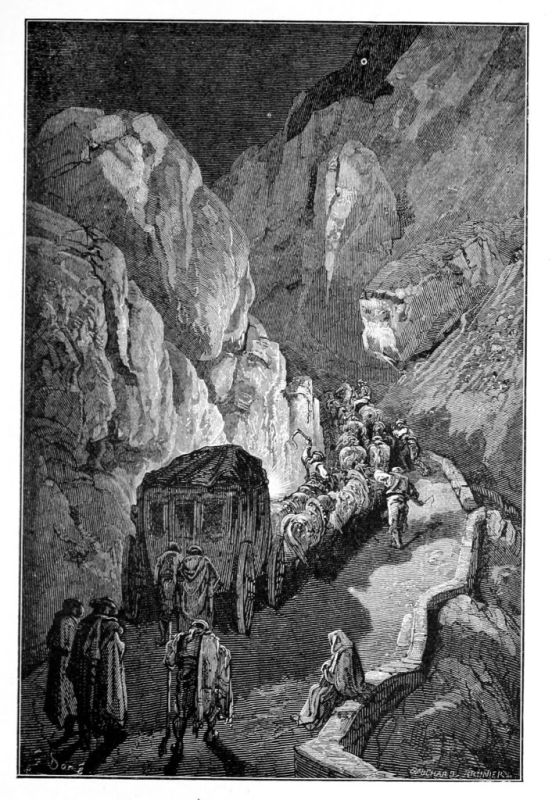

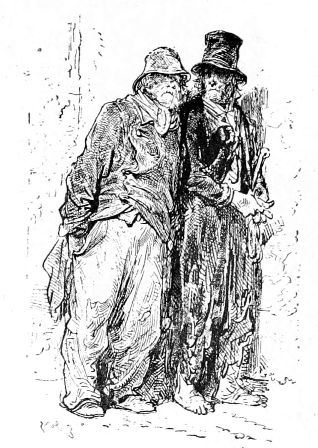
A few words as to the men, and the books they have illustrated. The artist who was most in evidence twenty years ago was Gustave Doré. The unceasing stream of books which continued for years to delight the provinces and to amaze his biographers was then at its flood. That Doré was a man of the most marvellous imagination, no one will doubt; that his imagination ran completely away with him is equally true. He has had no influence upon anything but the very cheapest form of wood-engraving. Though it is easy to understand his popularity, it is difficult, considering how much really good work he did, to explain [Pg 59] why he has been completely ignored as an artist. There is no question that some of his compositions were magnificent, even if every figure and type in them was mannered and hackneyed to a horrible degree. The only way in which we can account[Pg 60] for his utter failure as an artist, is the fact that he was ruined by the praise of his friends. Although Doré started as a lithographer, carrying on the traditions of his immediate predecessors and contemporaries, Daumier and Gavarni, Raffet and Charlet, he soon took to drawing on the block, and for years the world was inundated with his work. In popularity no one ever approached him, but his drawing on the block is no more to be compared to Meissonier's, than his lithographs to Gavarni's, who contributed some of the most exquisite designs to "L'Artiste" in its early days.
In Alphonse de Neuville's "Coups de Fusil," one will find most delightful renderings of the late war, while many of his illustrations to Guizot's "History of France," or "En Campagne" are superb. His rival and successor, Detaille, has carried on the military tradition very well in "L'Armée Française," which contains the best illustrations of any sort that he ever did. P. G. Jeanniot also has done excellent work in the same field, but his studies of Parisian [Pg 61] types are probably still more successful. The best work of all is probably contained in Dentu's edition of "Tartarin de Tarascon." L. Lhermitte, too, has made some striking drawings in charcoal, both for reproduction by photography and for engraving on wood, especially in "La Vie Rustique," where the designs were extraordinarily well engraved. Jean Paul Laurens heads a long list of painters who have made many pictures in black and white for the illustration of books, but most of them are duller as illustrators than painters. Maurice Leloir and V. A. Poirson have illustrated the "Sentimental Journey," the "Vicar of Wakefield," and some other English books, though their point of view is always that of the Frenchman who knows little about England; their drawings were reproduced mainly by photogravure, with small blocks printed in colour, or black and white process, interspersed. About 1880 an illustrated theatrical journal was started, "Les Premières Illustrées," and in this F. Lunel, Fernand Fau, L. Galice, G. Rochegrosse, and A. F. Gourget did remarkable work. Some of the painters, too, have allowed their sketch-books to be used, and from them books of travel have been manufactured, but these are hardly to be considered seriously as illustrations, as they were not specially made for the works which contain them.
 PEN DRAWING BY D. VIERGE. FROM
“PABLO DE SÉGOVIE”
(FISHER UNWIN).
PEN DRAWING BY D. VIERGE. FROM
“PABLO DE SÉGOVIE”
(FISHER UNWIN).
Daniel Vierge's "Pablo de Ségovie," though the work of a Spaniard, has for twelve years held its own as the best example of pen drawing for process reproduction published in France. Following, a long way behind, come men like Henri Pille and[Pg 62] Edouard Toudouze. The development of the Guillaume half-tone process produced the curious series of little books known under that title; and also the larger series which contained "Madame Chrysanthème" and "François le Champi," books which made tone-process in France, and also the reputation of Myrbach and Rossi.
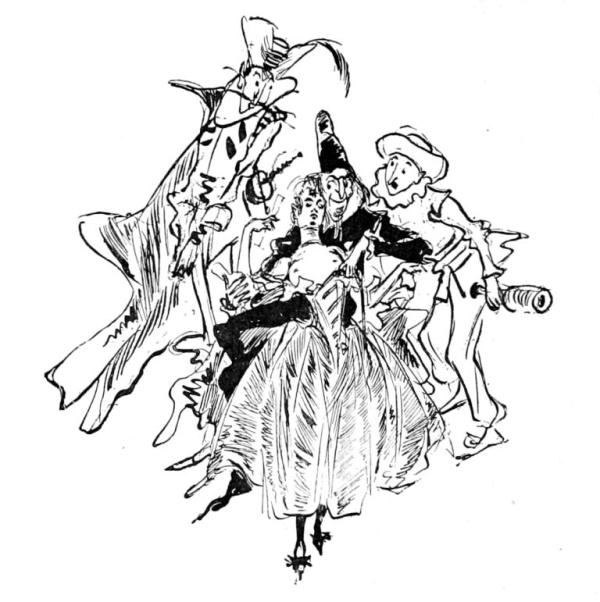
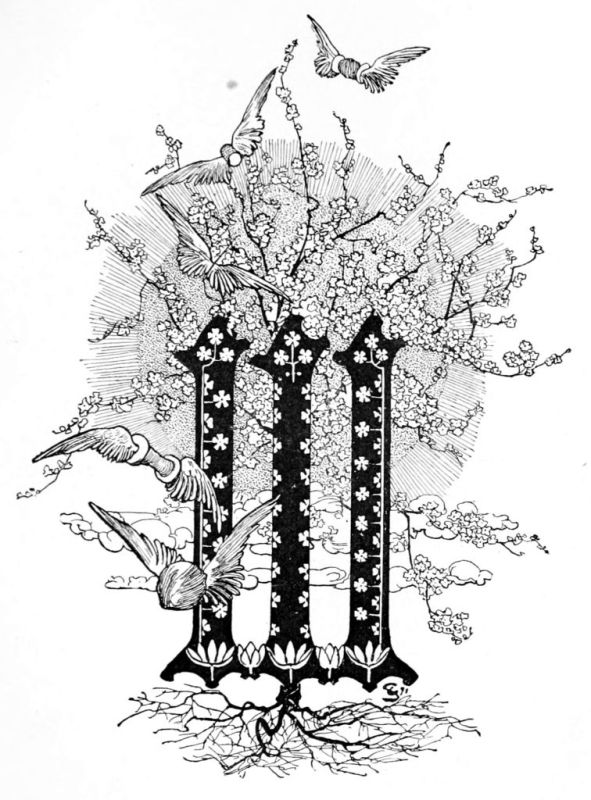
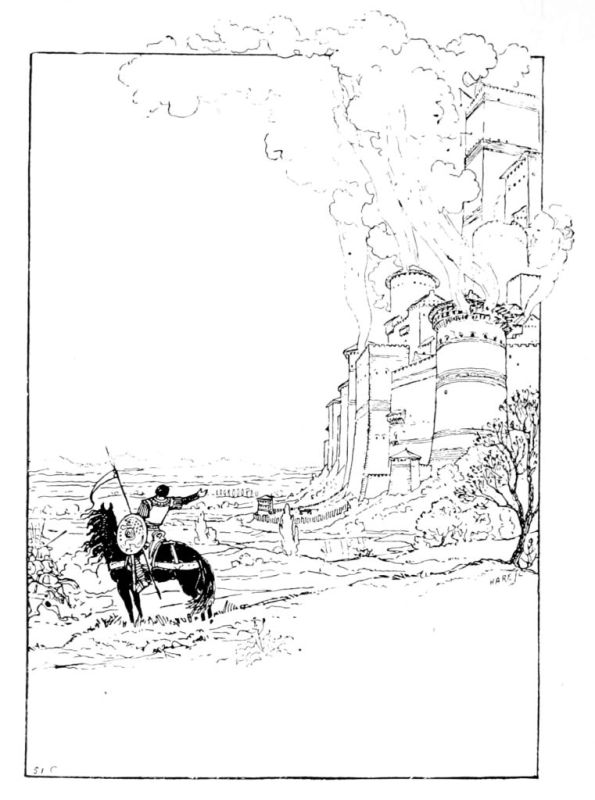
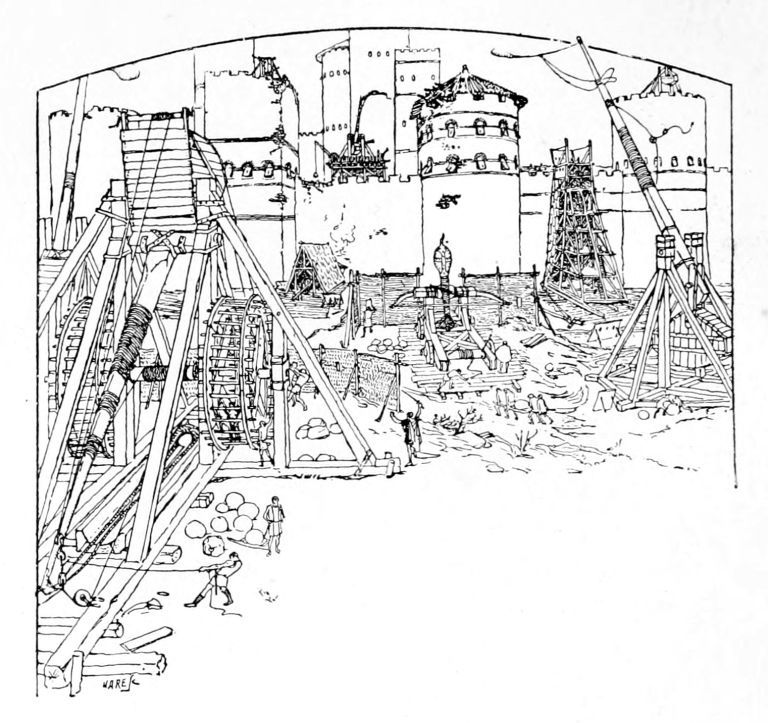
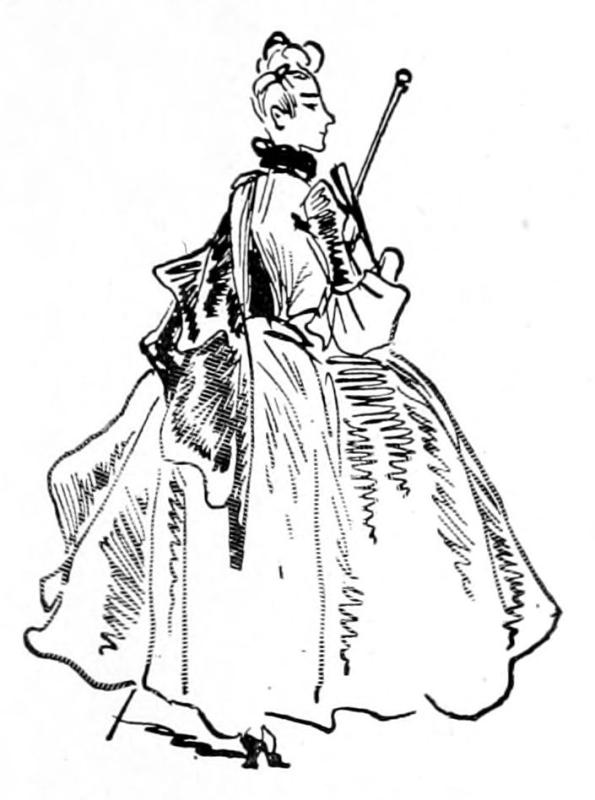
Several fine and limited editions have been published lately, illustrated by Albert Lynch, Mme. Lemaire, and Paul Avril, such as the "Dame aux Camélias;" while Octave Uzanne's series on [Pg 63] fans and fashions were a great success. So, too, are many of the books issued by Conquet. Robida's designs for Rabelais virtually superseded those of Doré, and he followed up the success of this book with a number of others which have gradually degenerated in quality. Louis Morin, who is author as well as artist; E. Grasset, who, not content with this, is an architect too, and whose "Quatre Fils d'Aymon" should be seen as a beautiful piece of colour-printing; and Georges Auriol have done extremely good work in their different ways. Félicien Rops is a man who stands apart from all other illustrators; he possesses a style and individuality so marked that, at times, it is not easy to obtain any of his books, so carefully are they watched by that Cerberus of the press: the social puritan, who never fails to see anything to which he can possibly find objection. From the mystic Rops, have sprung, one might almost say, even more mystic Rosicrucians, headed by Carlos Schwabe, who has produced, in "Le Rêve" of Zola, one of the most beautiful and refined books, despite its disgraceful printing, ever issued from the French press.

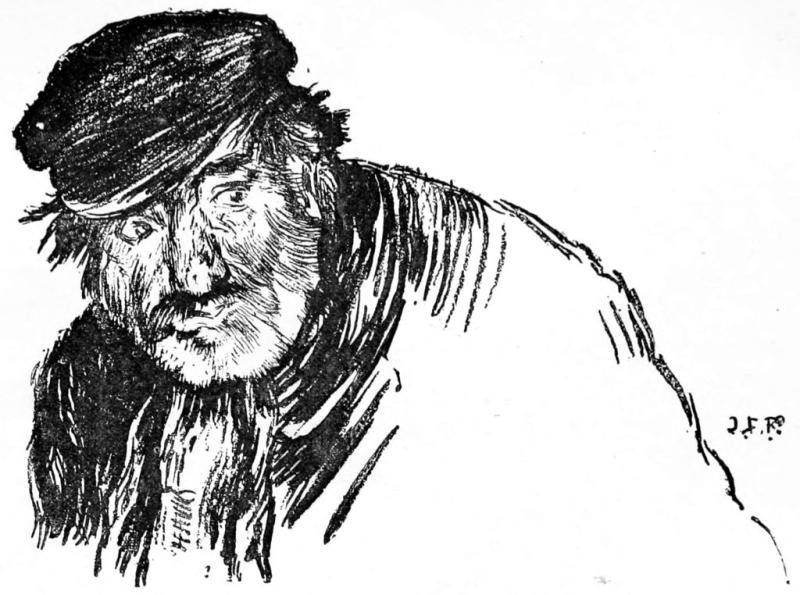

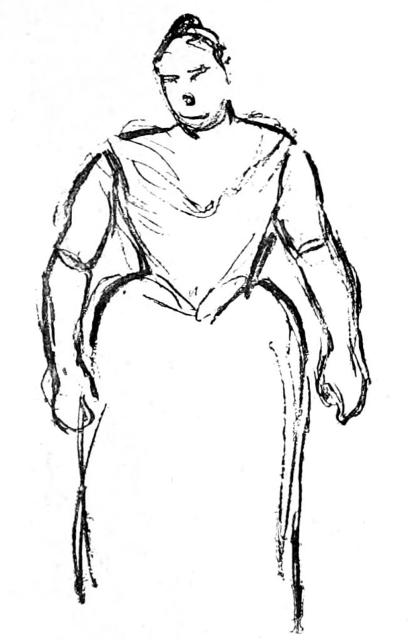
But less mystical, and, possibly, even more beautifully drawn, are some of Luc Ollivier Merson's designs, notably those for Victor Hugo's works: a charming series of drawings, etched, I think, by Lalauze—to the national edition of Hugo almost every French painter has contributed—and the more mystic but less accomplished Séon is another of the same group; while the latest and most advanced are the Vebers. The list of really clever men is long. Marchetti and Tofani, Italians, [Pg 65] whose work, continually seen in the supplements to "L'Illustration," is engraved with the greatest charm and distinction; Raffaëlli, who, though he draws but little now, has decorated during the last fifteen years some of the most notable French books. Giacomelli, Riou, Bayard, Haennen, Adrian Marie,[18] Metivet, who are willing, at a moment's notice, to make you a drawing, often distinguished, of any subject, no matter whether they have seen it or not, though Giacomelli is best known for his renderings of birds and flowers, often very charming; Habert Dys and Felix Régamey, who have adapted the methods of Japan to their own needs; Paul Renouard whose work is, as it should be, appreciated in England, and who has the distinction, when any important event is coming off in this country, to be commissioned by the "Graphic" to cross the Channel and "do" it; Boutet [Pg 66] de Monvel, whose books for children have gained him a world-wide reputation; the long list of delineators of character, costume, and caricature who weekly fill the lighter papers: Ibels, the decadent of decadents, Caran d'Ache, Willette, Steinlein, Mars, Legrand, Forain, Job, Guillaume, and Courboin, whose work can be seen more or [Pg 67] less badly reproduced every week in the comic papers to which they contribute. Caran d'Ache has made himself, one might almost predict, a lasting reputation with his "Courses dans l'Antiquité," his "Carnet de Chèques," and his various [Pg 68] other "Albums." A. Willette, when not playing at politics, is seriously working at his adventures of Pierrot. Steinlein, in his illustrations to Bruant's "Dans la Rue," probably did as much as the author to make known the life of Batignolles. Mars rules the fashions of the provinces, while if one were to take Forain's Albums as absolutely typical of French morals, France certainly would seem the most distressful country on the face of the earth. To Grasset and Chéret, Lautrec and Auriol have fallen the task of looking after the so-called decorative part of French work. But the fact that not only these men will do you a poster, a cover design, a head, or a tail-piece, but that almost all [Pg 69] others will too, is a positive proof that decoration cannot be separated from illustration, and also that all true artists are decorators.
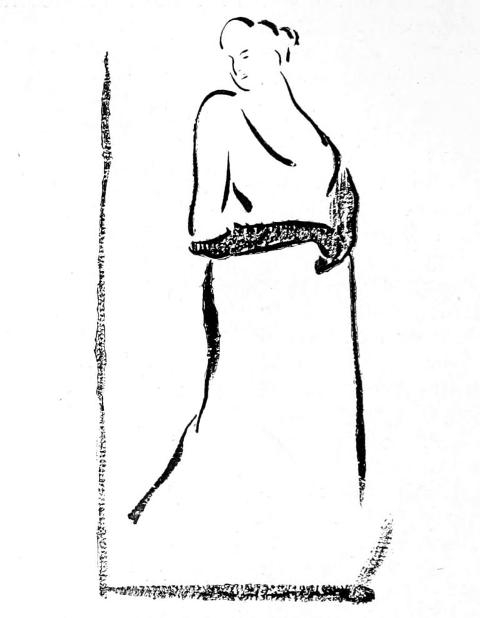
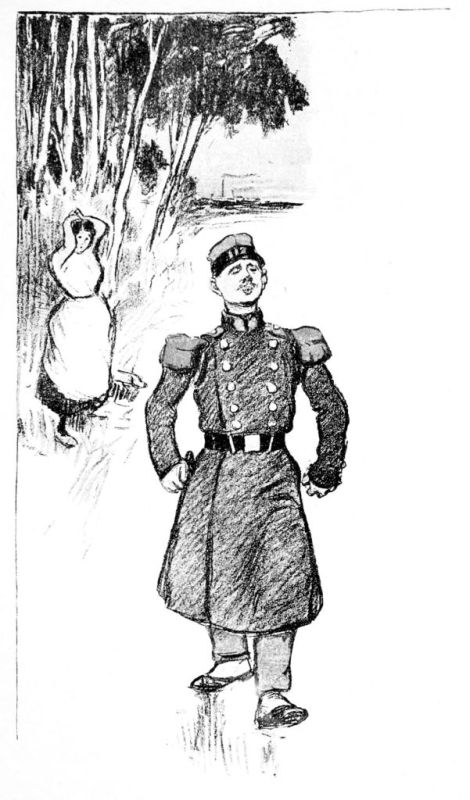
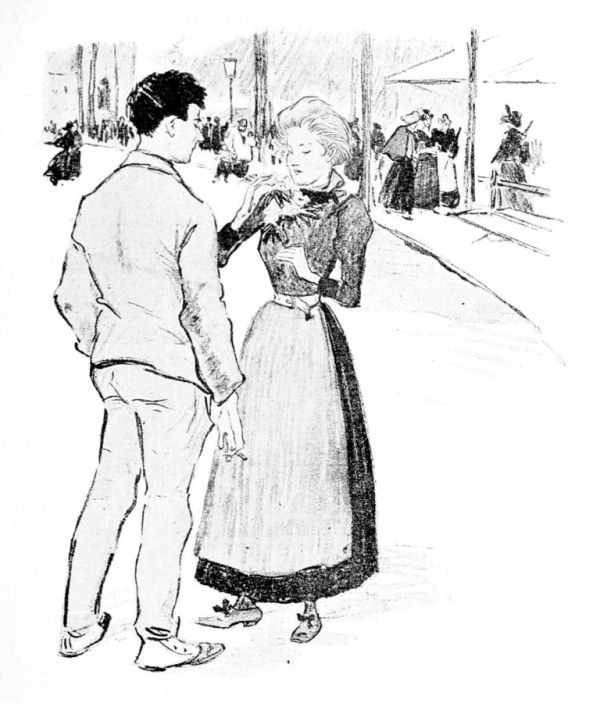
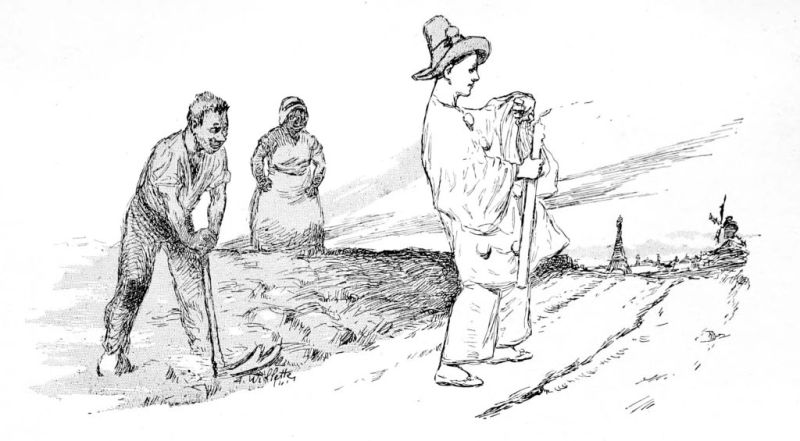
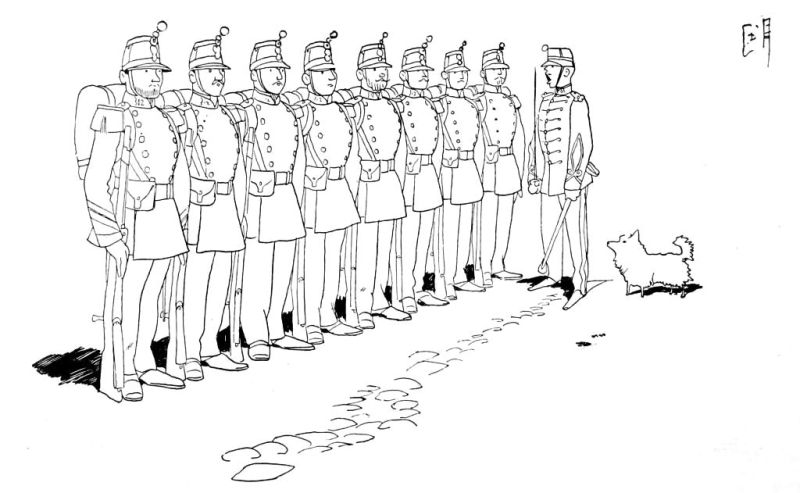
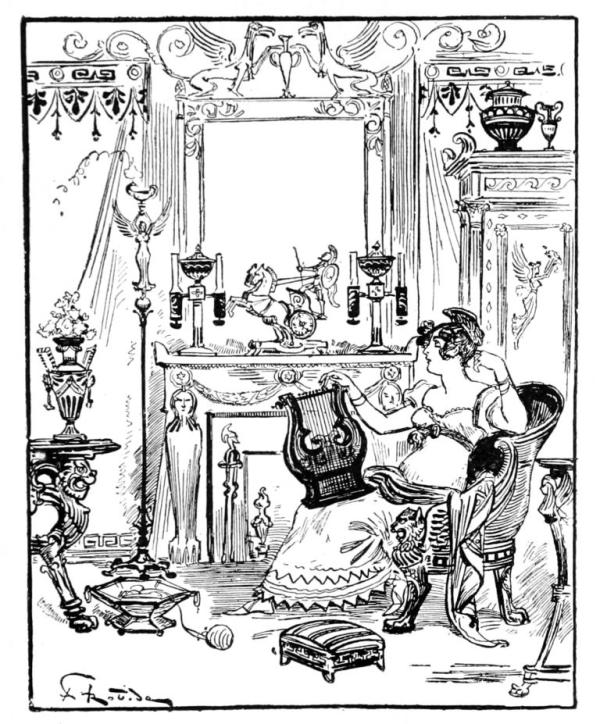
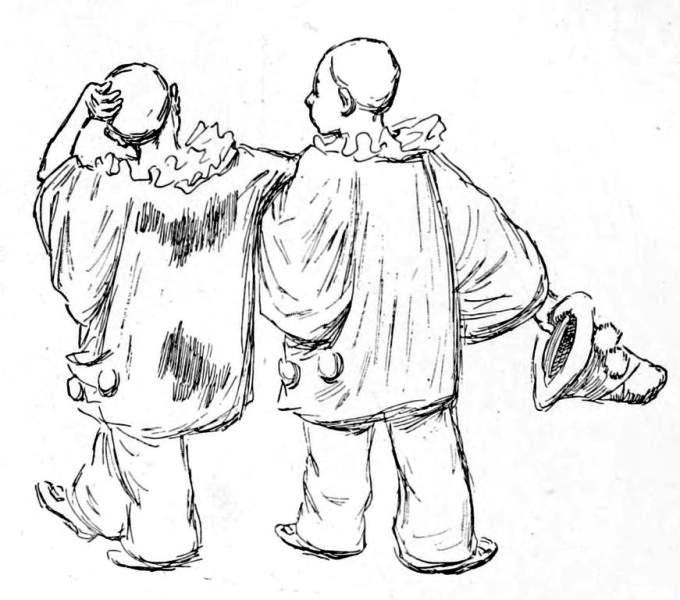
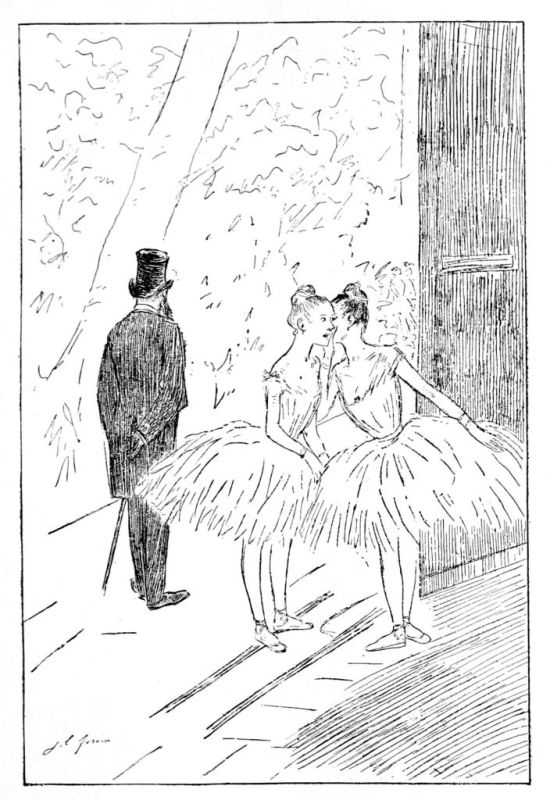
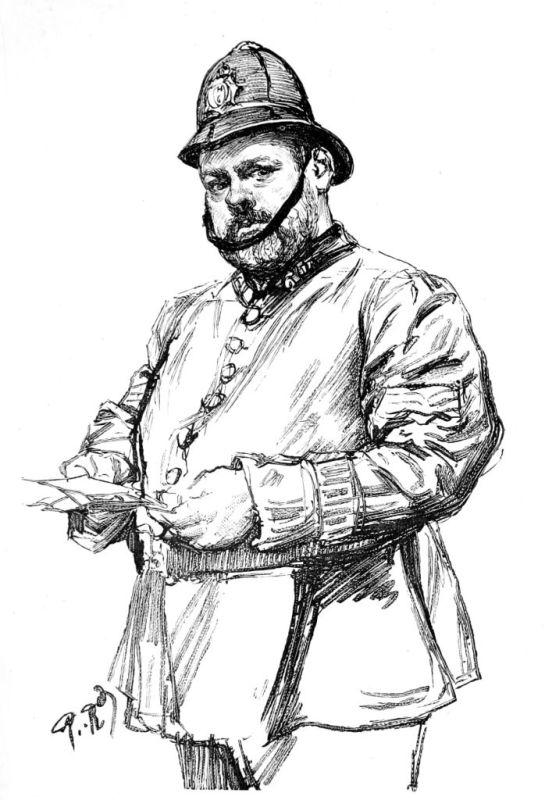
Among wood-engravers, Baude and Florian hold the foremost place as reproductive artists, while Lepère stands quite apart, a brilliant many-sided man, at once draughtsman, engraver, etcher, and painter, a true craftsman in the best sense. Another man, F. Valloton, is making an endeavour to revive original wood-cutting, and though but few of his cuts are anything like so good as "Entêrrement en Province," he is the leader of a movement which may result in the resurrection, or indeed the creation of an original art of wood-cutting. But this desire of artists to engrave and print their own work is growing in France, as may be seen in such a collection as "Estampe Originale." Pannemacker and his followers have been the most popular, and their influence has been felt, sometimes with distinction, in all cheap French wood-engraving.
After enumerating this long list, it seems as if I had contradicted my own rather pessimistic view of illustration in France. I do not think so. It is true that the artists, though few in number, are in the country, but to-day the opportunities for them to express their art are lacking: as a proof, the only book devoted solely to French illustration which has ever appeared has just been published in America.
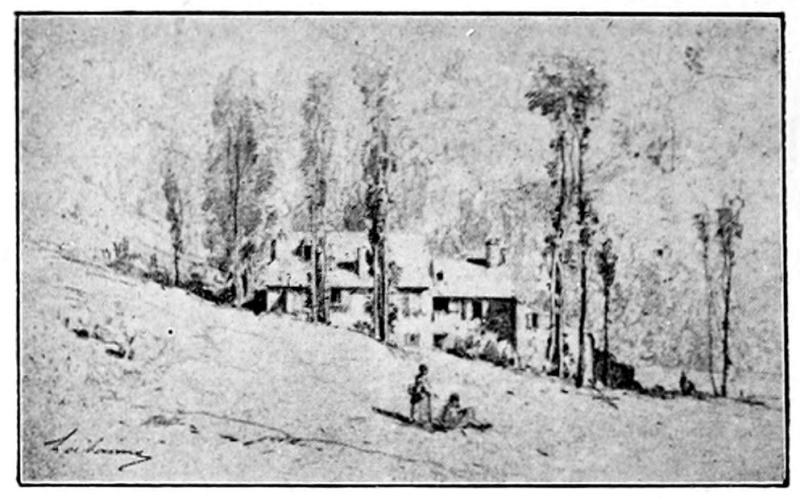 BY LALANNE. FROM A PENCIL DRAWING. (FRENCH.)
BY LALANNE. FROM A PENCIL DRAWING. (FRENCH.)
In writing upon drawing on the Continent, I have heretofore found it only necessary to classify illustrators under three nationalities. In discussing illustration it seems to me that this question of nationality can be even further simplified. Italy and Spain have not produced a single original illustrated book of real importance. Although several of the foremost illustrators of the day were born in one or the other of these countries and partially educated there, they have left their native land as quickly as possible, for France or for Germany.
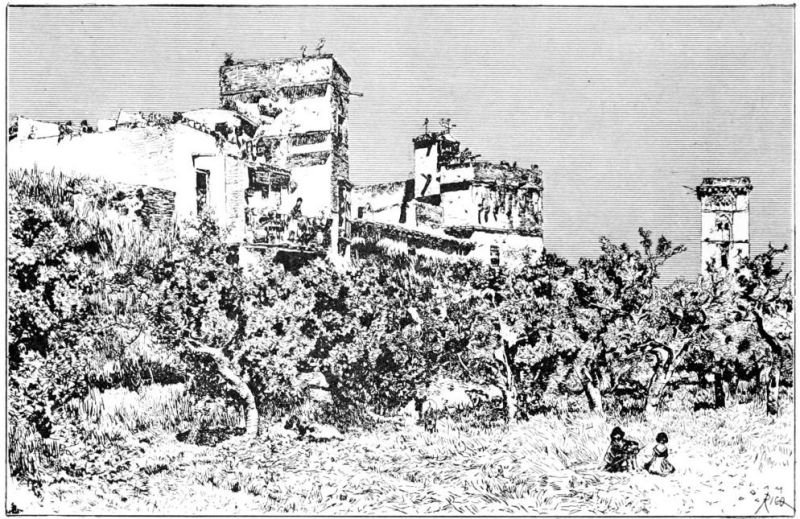 BY MARTIN RICO. FROM A PEN DRAWING.
BY MARTIN RICO. FROM A PEN DRAWING.
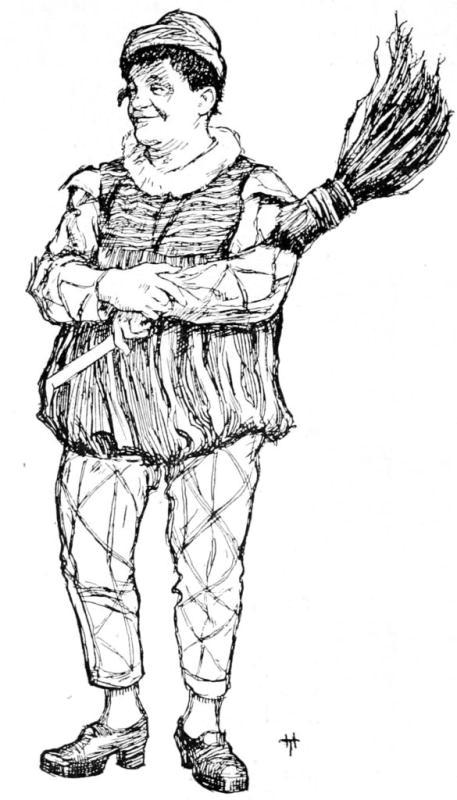
In Italy the important publishing house of the Fratelli Trevès, in Milan, has made many attempts to bring out fine books, the works of de Amicis being among their best-known productions, but this importance comes from their literary rather than artistic side; and I am not aware that the Fratelli Trevès have ever done anything to surpass [Pg 71] the "C'era una Volta" of Luigi Capuana, illustrated by Montalti, published in 1885, a most extraordinary example of the skilful use of papier Gillot, or scratch paper. The Fratelli Trevès issue a large number of magazines and papers, a certain amount of good newsy wood-engraving is seen in these, process having been almost entirely given up, especially in the leading illustrated Italian weekly, "L'Illustrazion Italiana." In Spain I know of no notable illustrated books published of late. I may be labouring under a mistake, but I must frankly admit that I have never heard of, or seen any.[19] If they do exist I should be only too glad to have them brought to my notice. But there are two very good illustrated papers, "Illustracion Espanola y Americana" and "Illustracion Artistica." To both, Fortuny, Rico, Vierge, and Casanova—especially Rico—have contributed important drawings. These journals are now almost entirely using wood-engravings, some of which are very good indeed. They are mainly, however, reproductions of the typical Spanish historical, or story-telling, machine which is turned out with such facility by a large number of Spaniards. But the bulk of the work is made up of clichés from American papers and magazines, in which matter I find that even I have proved a useful mine.
Dutch books are not remarkable. Here and there a good drawing may be found in a magazine called "Elsevir." Though in Holland there is an [Pg 72] artist, H. J. Icke, who, in his studies from the old masters in pen and ink, evinces a power and brilliancy only equalled by reproductive etchers like Mr. Hole, Mr. Macbeth, or Mr. Short. The same is true of Belgium. Austria and Hungary have little to show, their illustrators, like Myrbach, Marold, and Vogel, coming to Paris, or sending their work to Munich, for the publishers mainly ignore their own artists, and either send abroad for their designs, or borrow and adapt from other men's work with a recklessness which is charming. And yet, the only international black-and-white exhibition was held in Vienna a few years ago; while one of the best photo-engraving firms in the world, Messrs. Anderer and Göschl, are located there. Russia and Scandinavia are equally [Pg 73] unfortunate in the matter of illustrated books, all of the artists of these countries being in Paris, London, or New York, and their work only finds its way back to their native countries as clichés. Men like Chelminski, Edelfelt, Répine, Pranishnikoff really owe all their reputation, not to their native land, but to the country of their adoption.
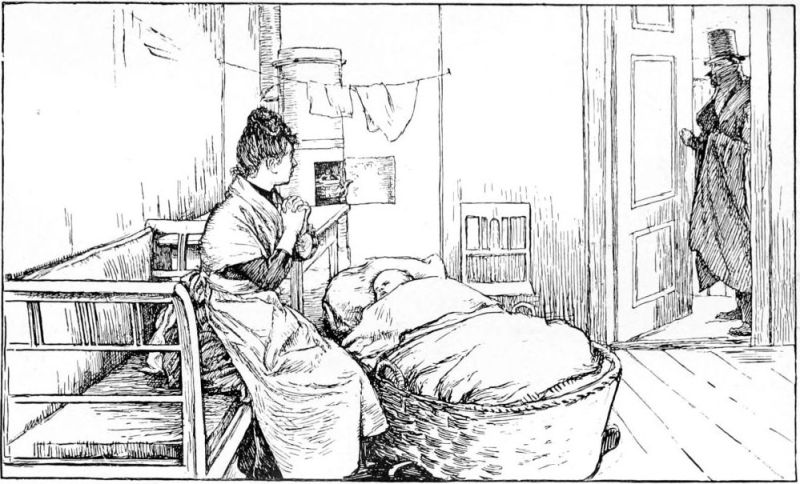 PEN DRAWING. BY HANS TEGNER. FROM “HOLBERG’S COMEDIES” (BOJESENS).
PEN DRAWING. BY HANS TEGNER. FROM “HOLBERG’S COMEDIES” (BOJESENS).
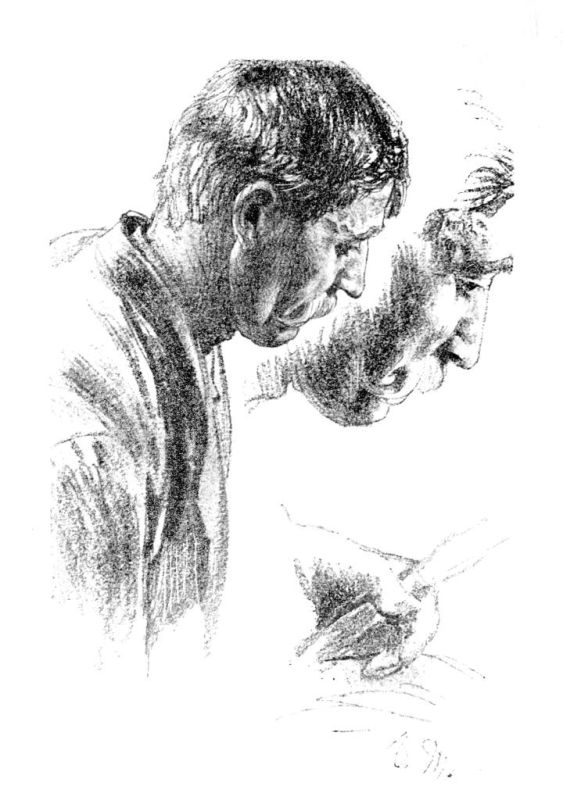 BY ADOLPH MENZEL. PROCESS BLOCK FROM ORIGINAL
DRAWING IN THE POSSESSION OF THE AUTHOR.
BY ADOLPH MENZEL. PROCESS BLOCK FROM ORIGINAL
DRAWING IN THE POSSESSION OF THE AUTHOR.
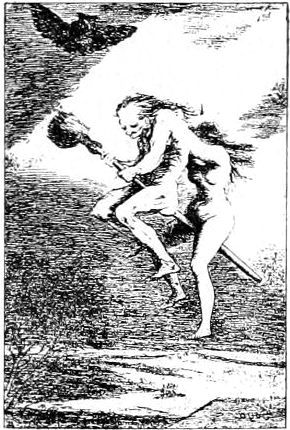
There is, however, one little country that deserves more than a word of mention, and this is Denmark. For it can boast an illustrator of individuality and character, Hans Tegner. His drawings for the jubilee edition of "Holberg's Comedies," published in Copenhagen in 1884 to 1888, must be ranked as masterpieces of graphic art. Though evidently based on the style of Menzel and Meissonier, they are quite individual; especially in the rendering of interiors crowded with people he has surpassed any living illustrator. This book is also interesting from the fact that while it was being produced the change was made from facsimile wood-engraving to process, and though the engraving of Hendricksen and Bork is excellent, the process blocks in some ways are even more interesting. The decorations to these volumes, head and tail-pieces, are as atrociously bad as Tegner's illustrations in the text are good. There are also a number of lesser artists, Danes and Norwegians, who have done good work, but to name them would merely be to make a catalogue, as their work is never seen here.
During the last three-quarters of a century German illustration has been absolutely dominated [Pg 74]by Menzel. Not only has he been the leading spirit in his own country, whether he was influenced originally by Meissonier or not, but he has himself influenced the entire world of illustrators, his drawings having been received with rapture and applause by artists wherever they have been shown. And, most interesting of all, he is a man who has been perfectly able, throughout his long life, to adapt himself to the various radical changes and developments which have been brought about in reproduction and printing. Commencing with lithography, he produced the amazing series of drawings of the uniforms of Frederick the Great. Next, taking up drawing on wood, he introduced exquisite facsimile work into his own country, educating his own engravers, Unzelmann, Bentworth and the Vogels, in his edition of the "Works of Frederick the Great." Later on he drew much more largely and boldly for the "Cruche Cassée," which was freely interpreted on wood. And now he has so arranged his beautiful drawings in pencil and chalk that they come perfectly by process. He is a man who recognizes fully that we have not got to the end of art, but that unless we are ever pushing onward, and striving for improvements, we may very easily get to the end of ourselves. He [Pg 75] looks backward for nothing but design; he looks forward to the perfection of everything.
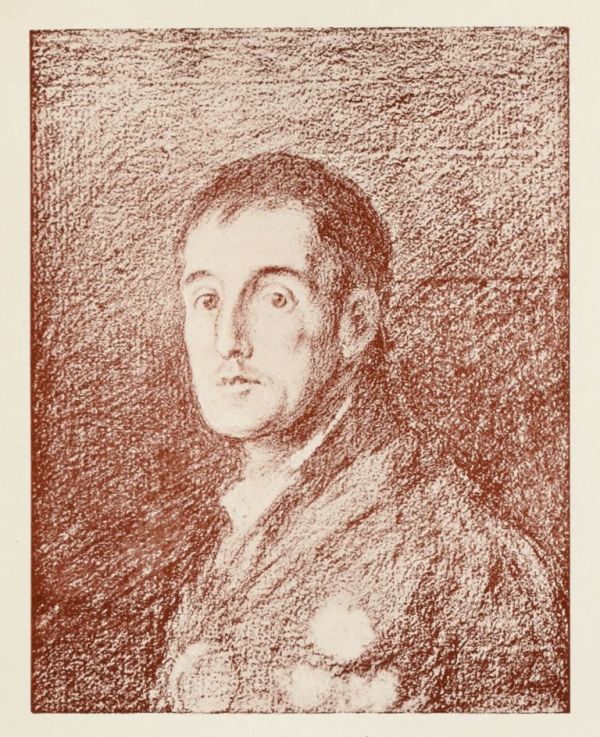 BY GOYA. FROM AN ORIGINAL DRAWING (A PORTRAIT OF THE DUKE
OF WELLINGTON) IN THE BRITISH MUSEUM.
BY GOYA. FROM AN ORIGINAL DRAWING (A PORTRAIT OF THE DUKE
OF WELLINGTON) IN THE BRITISH MUSEUM.
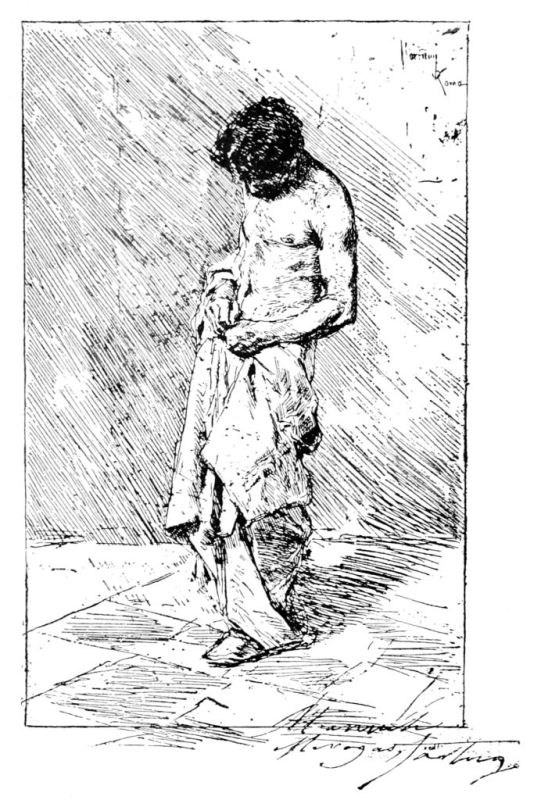
 BY JOSEPH SATTLER. FROM “THE DANCE OF DEATH” (GREVEL).
BY JOSEPH SATTLER. FROM “THE DANCE OF DEATH” (GREVEL).
Following Menzel, and encouraged by "Fliegende Blätter," which started in the early forties, came Wilhelm Dietz, whose studies of armies on the march, and of peasants at work or at play, are inimitable. He, too, has been followed by Robert Haug and Hermann Luders. Dietz was the mainstay for years of "Fliegende Blätter," the only weekly comic paper of which it can be said, that during the half century of its existence it has been not only at the head of its contemporaries, but has on the artistic side left far behind any pretended rival.
Germany has for the last half century, too, possessed a remarkable school of interpretative wood-engravers: men who have been able to take a large picture, which they have either drawn on the wood themselves or had drawn for them, and produce out of it an excellent rendering, which would print perfectly in black and white, under the rapid requirements of a steam-press. The work of these engravers can be seen any week in the "Illustrirte Zeitung," "Uber Land und Meer," and the other weeklies. Wood-engraving has been treated as a serious profession for years in Germany, as a Professorship of the art was held in the Berlin Academy before the beginning of this century by J. F. G. Unger, who died in 1804. Even in Vienna, a Professorship has been established for many years. The trouble with German wood-engravers, however, has been that most of the work, though signed by the name of one man, is[Pg 76] produced really by another. From one of these engraving shops, that of Braun and Schneider, issued a year after its establishment "Fliegende Blätter," in 1844. Save for Menzel, most of the work in the middle of the century was of that heavy, pompous, ponderous sort which we call German, and, though good in its way, is now well forgotten. The best-known of all these shops was that of Richard Brend'amour, who since 1856 has been established in Dusseldorf, though he has branches—an artist with branches!—in Berlin, Leipzig, Stuttgart, Munich, and Brunswick. Still, as he seems to have been able to get an extremely good set of apprentices and workmen, who were the real artists, a great amount of very interesting work has been turned out, and clichés from his excellent blocks have been used all over the world.
One sort of decorative design, developed by a German, or, I presume, a Pole, Paul Konewka, though his work, was, I believe, first published in Copenhagen, is the silhouette; Konewka has had imitators everywhere, but none of them have surpassed him. His edition of "Faust" is one of the best-known examples. Retche's outline drawings for Shakespeare are also good.
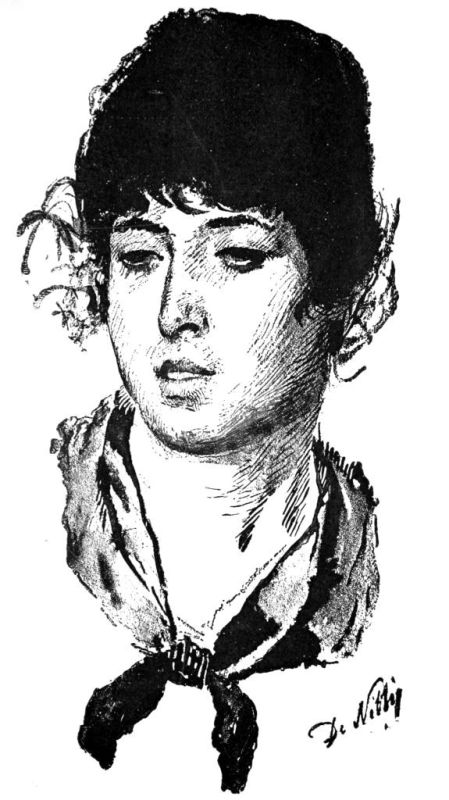 BY DE NITTIS. PEN DRAWING
FROM “PARIS ILLUSTRÉ.”
BY DE NITTIS. PEN DRAWING
FROM “PARIS ILLUSTRÉ.”
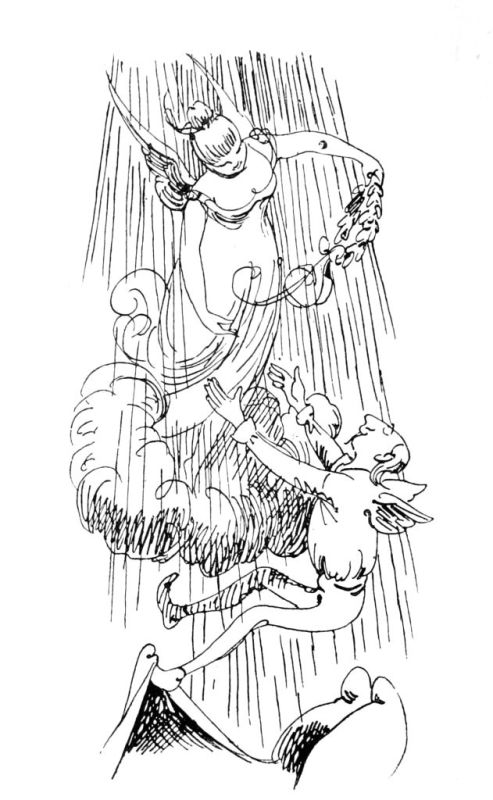

Following the classical tradition of Overbeck and Kaulbach, but changing it rather into mysticism and decadence through the influence of Böcklin, and probably the pre-Raphaelites in England, has been developed a school of mystical decorators who are unequalled, unappreciated and curiously unknown outside of their own country. The chief of these men is Max Klinger. Like [Pg 77] his master, Böcklin, and like Schwabe in France, he brings both his mysticism and his drawing up to date, and makes no attempt to bolster up faulty design and incomplete technique by primitiveness, or quaintness, or archaism. For his illustrations Klinger usually makes an elaborate series of pen drawings, and then etches from these. The only example which I know of in England available for study is a copy of the Apuleius which is in South Kensington, and this is not by any means one of his most successful books, as the etchings are hard and tight, and the inharmonious decorations which surround the small prints in the text are crude and unsatisfactory. To know Klinger's work one must visit the Print Rooms in the Museums of Berlin and Dresden. Another group have devoted themselves to lithography. H. Thoma in this has been probably the most successful, but in the exhibition held this year in Vienna he was closely followed by Otto Greiner, W. Steinhausen, and Max Dasio. Their work may be seen in "Neue Lithographem," by Max Lehers, published in Vienna. Whether there are two or three men of the name of Franz Stuck who draw, or whether it is the same Franz Stuck who produces the mystic arrangements and the burlesques of them, the decorative vignettes and the absurd caricatures in "Fliegende Blätter," I do not know. I only do know that it is all very well worth study, and very amusing and interesting.
Busch and Oberländer, Meggendorfer, and Hengler, are names so well known that their mere mention raises a laugh, and that, if anything, is[Pg 78] the mission of those artists: while Harburger's and Aller's marvellous studies of character, and René Reinecke's exquisite renderings in wash of fashionable life, marvellously engraved by Stroebel, can be seen every week printed in the pages of "Fliegende Blätter" and other papers. The works of Hackländer, published in Stuttgart, have been illustrated mainly by process by that clever band of artists of whom Schlittgen, Albrecht, Marold, Vogel, and others are so much in evidence. The German monthly magazines, like "Daheim," "Kunst für Alle," "Felz und Meer," "Die Graphischen Kunste," etc., are very notable, especially "Kunst für Alle," which seems to me to be about the best-conducted art magazine in the world. Altogether the arts of illustration and reproduction, and the business of publishing, in Germany are apparently in a most healthy condition. It could scarcely be otherwise, however, when we consider that one of the greatest illustrators in the world is still alive and at work there, as well as the most curious mystics, the most amusing comic draughtsmen, and the most conscientious and clever realists.
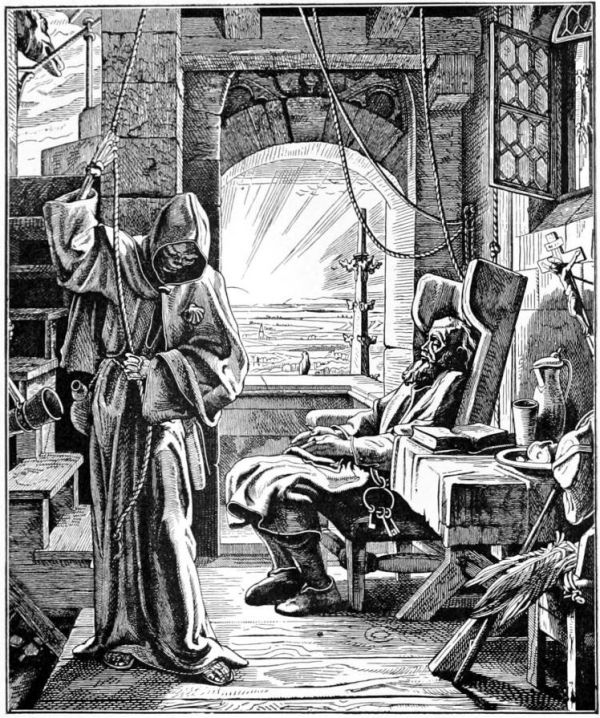
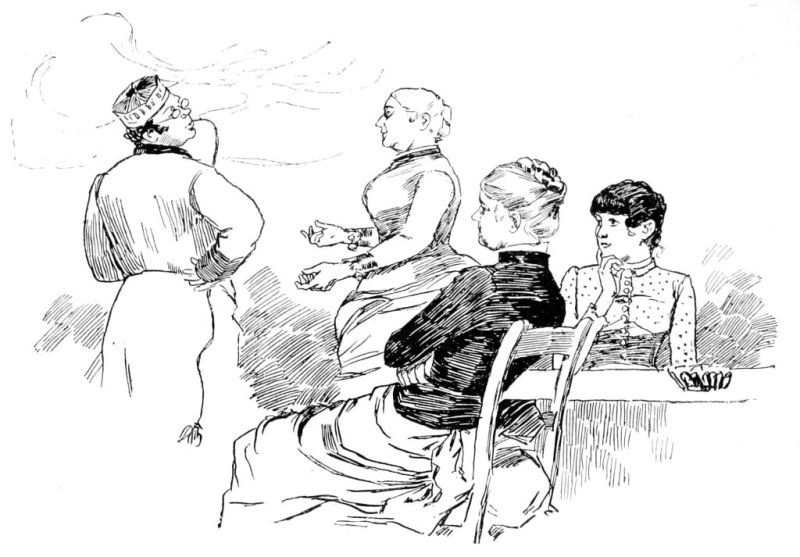 BY H. SCHLITTGEN. FROM “EIN ERSTER UND EIN LETZTER BALL”
(STUTTGART, KRABBE).
BY H. SCHLITTGEN. FROM “EIN ERSTER UND EIN LETZTER BALL”
(STUTTGART, KRABBE).
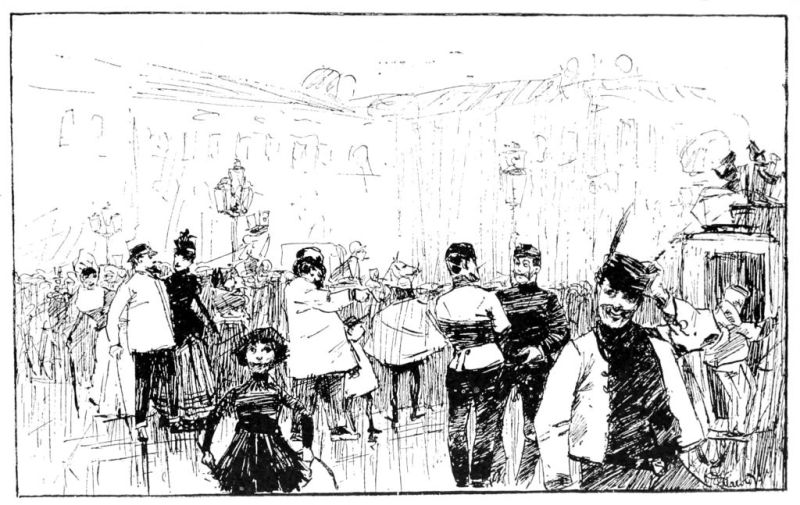 BY MAROLD. FROM “ZWISCHEN ZWEI REGEN”
(STUTTGART, KRABBE).
BY MAROLD. FROM “ZWISCHEN ZWEI REGEN”
(STUTTGART, KRABBE).
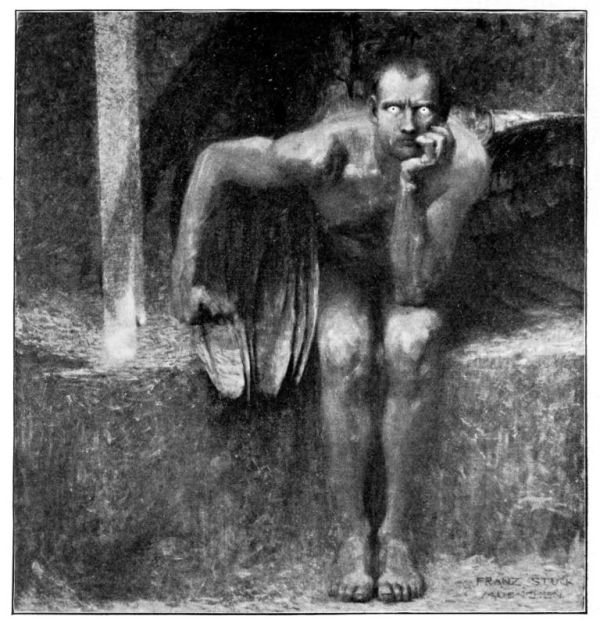 BY FRANZ STÜCK. FROM BIERBAUM’S “FRANZ STÜCK,” MUNICH
BY FRANZ STÜCK. FROM BIERBAUM’S “FRANZ STÜCK,” MUNICH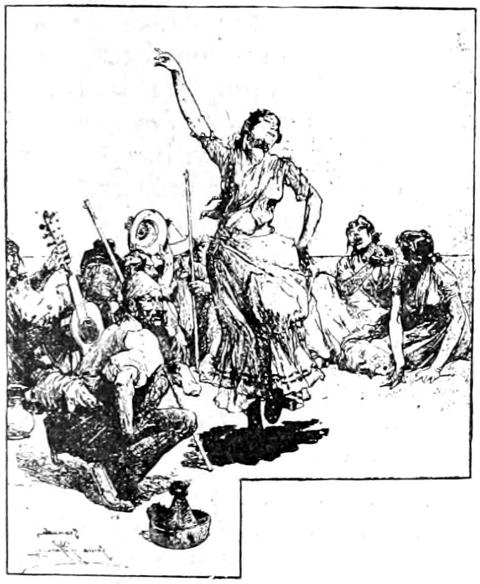
Process block, from pen and wash drawing.
Note.—A recent visit to Spain shows me to be quite mistaken in this matter. A very fine book has lately been published in Barcelona by a Seville artist, F. Garcia y Ramos, "La Tierra di Maria Santissima," and though Señor Garcia y Ramos is greatly indebted to Fortuny, Rico and Vierge, he has made a very notable series of designs; he has also contributed several drawings to a comparatively new Spanish paper,—"Blanco y Negro"—which has printed very good work by a group of young men in Madrid, the most distinguished of whom is Señor Huertas. Another artist on the staff is Jiminez Lucena; he is realistically decorative. The most popular man in Spain, after the artists of "La Lidia" (the organ of the Bull Ring), is Angel Pons, who, however, is but an echo of Caran d'Ache. "La Lidia" is illustrated entirely by lithography and in colour; the designs, often full of go and life, are the work of D. Perea. I find, too, that the French work of 1830 was seen and known in Spain, that some books were produced in the style of "Paul and Virginia," with drawings by Spaniards, though I imagine they were all engraved either in Paris, or by French engravers who went to Spain. The work, however, is but a reminiscence of the French, and simply curious as showing the power of the Romanticists, but more especially of Meissonier as an illustrator. The most interesting of these books is "Spanish Scenes," illustrated by Lameyer, engraved by G. Fernandez, rather in the manner of Gavarni. But there is one Spaniard who as an illustrator is unknown, at least to artists—for he only produced one set of designs for publication—but who is universally known in almost every other branch of art, F. Goya. The only widely published and generally [Pg 80]circulated publications, the bank-notes of Spain, are the work of this artist, and they reflect little credit on him. His etchings are to be found in all great galleries; but, interesting as they are, they give no idea of the amazing drawings in chalk, wash, and ink, in which mediums they were produced. Even in Madrid the originals are but little known; the greater number are in the Library of the Prado, the National Museum, inaccessible to the ordinary visitor: but a small selection, undescribed, and not even in the catalogue, are placed upon a revolving screen in the Room of Drawings; but as this is almost always closed, most people leave Madrid without even being aware of the existence of the greatest treasures possessed by the museum after the Velasquez. On this screen are the designs for the bull-fights, admirably described by T. Gautier, in his "Voyage en Espagne," from the literary artist's point of view, but from the artistic stand-point, they are quite the most uninteresting of all, and do not in the slightest express the great passion Goya is said to have always shown for the noblest sport in the world.
It is rather to the exquisite designs in red chalk for the "Scenes of Invasion," that one sees him at his best. Here he is the direct descendant of Callot, only there is a power in his work that Callot never possessed. It is, I am now certain, from these designs that Vierge obtained many of his ideas—although they are worked out in an entirely different fashion. The drawings for the "Caprices" are in pen and wash, and are as much finer than the aquatints made from them, as the aquatints are superior to the caricatures of any of his contemporaries. As Goya passed, an exile, the latter part of his life in France, his work must have been known to the men of 1830. He died in 1828, just as the few lithographs he has left show that he was aware of the work of Delacroix in that newly invented art.
Still, Goya cannot be called an illustrator, for none of his work was published as illustration; yet, at the same time, it is so well adapted to that end that it is perfectly incomprehensible that these drawings have not only never been published, but I am informed they have never even been photographed. The two that are in this book are from the "Caprices," those of the "Invasion" are too delicate to stand the necessary reduction. The portrait of Wellington in red chalk is in the British Museum.
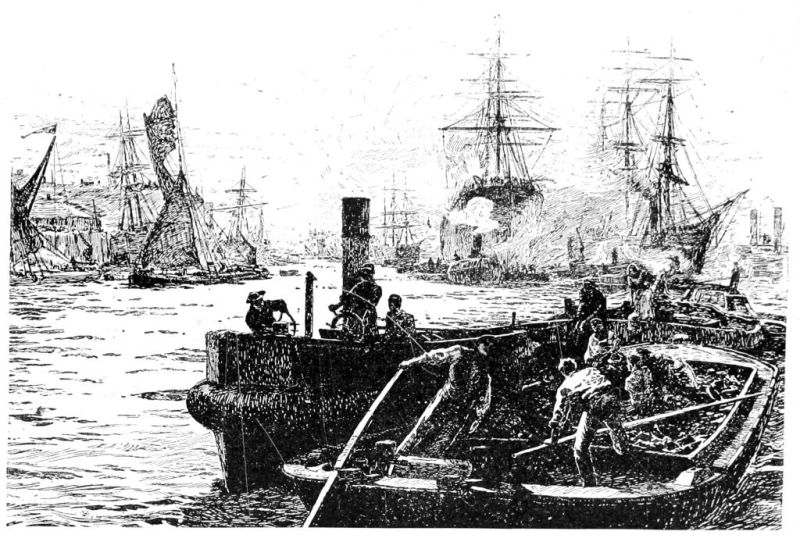 BY W. L. WYLLIE, A.R.A. PEN DRAWING FROM “THE MAGAZINE OF ART.”
BY W. L. WYLLIE, A.R.A. PEN DRAWING FROM “THE MAGAZINE OF ART.”
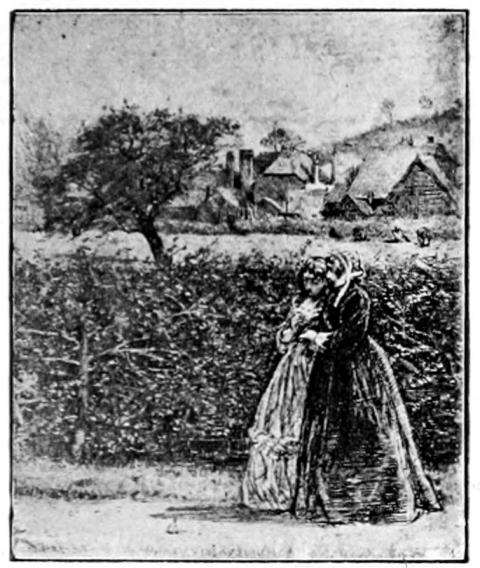
It is in England alone, that illustration, like many other things, has been taken seriously. Ponderous volumes have been written about it, as well as clever essays. It seemed at first sight rather unnecessary to repeat what has been said so well by Mr. Austin Dobson, for example, in his chapter on modern illustrated books in Mr. Lang's "Library," especially as he has added a postscript to the edition of 1892 which is supposed to bring his essay up to that date. But there are other ways of looking at the matter, and I have tried not to repeat what Mr. Dobson has said, nor yet to trench upon the preserves of Mr. C. G. Harper and Mr. Hamerton, or Mr. Blackburn.
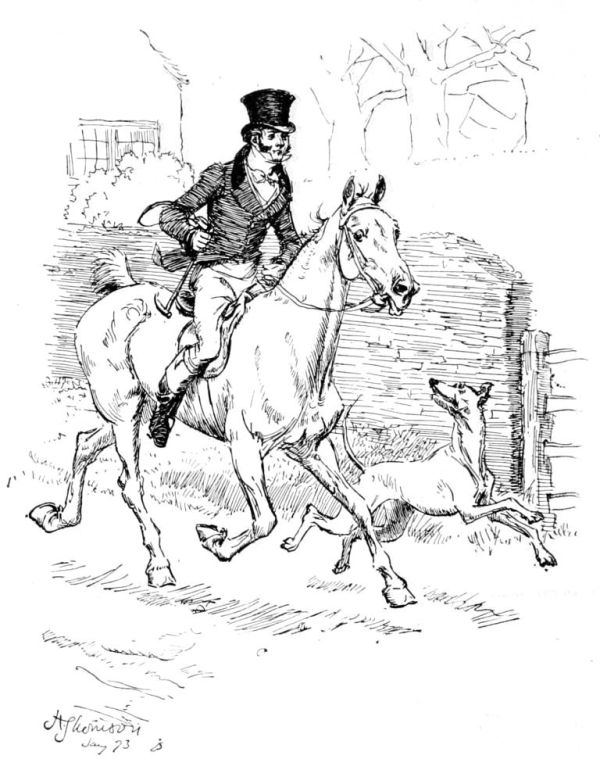

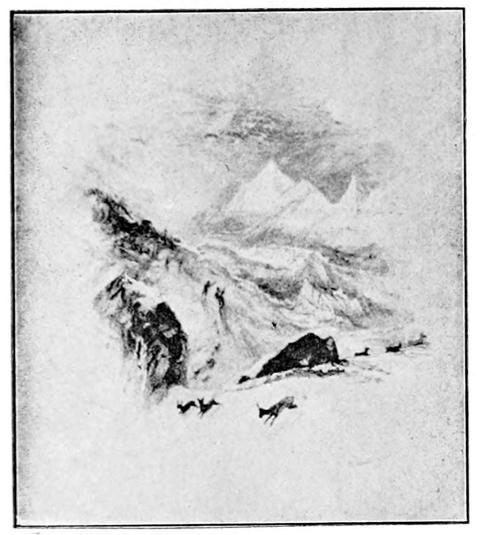
It appears to me, that before discussing the English [Pg 82] illustrators of to-day, it might be well to take a glance at the state of English illustration. English illustration has during the last twenty years suffered tremendously from over-writing [Pg 83] and indiscriminate praise and blame. I suppose that among artists and people of any artistic appreciation, it is generally admitted by this time that the greatest bulk of the works of "Phiz," Cruikshank, Doyle, and even many of Leech's designs are simply rubbish, and that the reputation of these men was made by critics whose names and works are absolutely forgotten, or else, by Thackeray, Dickens, and Tom Taylor, whose books they illustrated, and who had abso[Pg 84]lutely no intelligent knowledge of art, their one idea being to log-roll their friends and illustrators. It is true, however, that some of Doyle's designs, like those in "Brown, Jones, and Robinson," were extremely amusing, though too often his rendering of character was brutal, as, for example, in the "Dinner at Greenwich" in the "Cornhill" Series. Technically, there is little to study, even in his most successful drawings. Leech's fund of humour was no doubt inexhaustible, but one cannot help feeling to-day that his work cannot for a moment be compared to that of Charles Keene. Some of his best-known designs, the man in a hot bath for instance, praised by Mr. Dobson may be amusing, but the subject is quite as horrible as a Middle Age purgatory. Leech was the successor in this work of Gillray and Rowlandson, and though his designs appealed very strongly to the last generation, they do not equal those of Randolph Caldecott, done in much the same sort of way. Though some of the editions containing the engravings from these men's drawings sell for fabulous prices, on account of their rarity, one may purchase to-day for almost the price of old paper, lovely little engravings after Birket Foster, and the other followers of the Turner school; while drawings after Sir John Gilbert, and later, Whistler, Sandys, Boyd Houghton, Keene, Du Maurier, Small, Shields, and the other men who made "Once a Week," "Good Words," and the "Shilling Magazine," really the most important art journals England has ever seen, can be picked up in many old book-shops for comparatively nothing.[Pg 85] Of the best period of English illustration there are but few of the really good books that cannot be purchased for, at the present time, less than their original price. And only the works of one painter who did illustrate to any extent, Rossetti, command an appreciable value. For this, the fortunate possessors of his drawings have to thank Mr. Ruskin, who, himself, is by no means a poor illustrator. Some of his work in "Modern Painters," "Stones of Venice," "Examples of Venetian Architecture," is excellent, while his original drawings at Oxford are worth the most careful study. Many of Rossetti's designs are, it is true, very beautiful, and probably others were; one can see that from, the few which were never engraved. But the bulk of his drawings are certainly not so good as those which several people working in London are producing to-day.
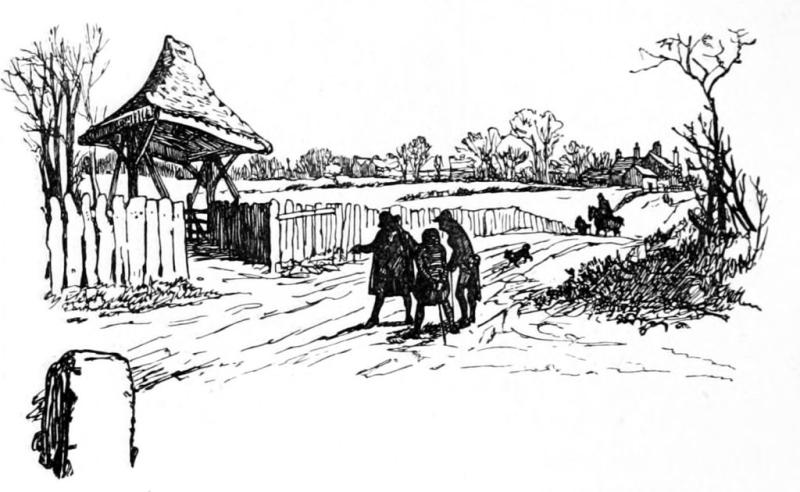
While the magazines I have mentioned were being published, the "Graphic" was started in 1870, taking on its staff most of the foremost artists of [Pg 86] the day, Fildes, Holl, Gregory, Houghton, Linton, Herkomer, Pinwell, Green, Woods, S. P. Hall; and about the same date Walter Crane made his far too little known designs for children's books—"King Luckieboy's Party," the "Baby's Opera," the "Baby's Bouquet," and the many others—which have been not half enough appreciated. In a measure, the same may be said of Randolph Caldecott's books for children,—the "House that Jack Built," the "Mad Dog," the "John Gilpin," which, though they contain his cleverest drawings, are usually given secondary rank to his "Bracebridge Hall" and "Old Christmas," of far less artistic importance. Miss Kate Greenaway has been more fortunate: her "Under the Window," and the long series that followed, have set the fashion for children, and have enjoyed a popularity[Pg 87] of which they are not by any means unworthy. A trifle mannered and affected, perhaps, her illustrations are full of refined drawing, charming colour, and pleasing sentiment. These artists, in conjunction with Mr. Edmund Evans, gave colour-printing for book illustration a standing in England, while every one of their books is stamped with a decided English character. A Frenchman, too, Ernest Griset, living here, made some notable drawings about this time.
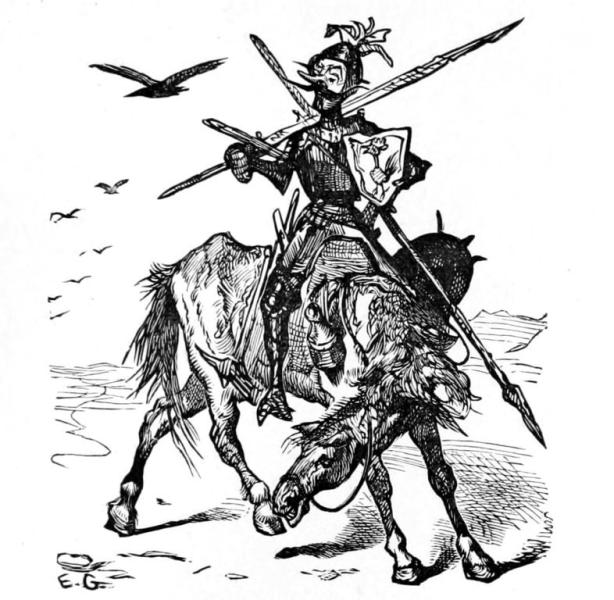
When I commenced this book I have no hesitation in admitting that my knowledge of the really[Pg 88] great period of English Illustration was of the vaguest possible description.
I knew of "Good Words," "Once a Week," and the "Shilling Magazine," "Dalziel's Bible Gallery," and a few other books, but I had never seen and never even heard of the great mass of work produced during those ten years; even now, I am only slowly beginning to learn about and see something of it.
But a day is coming when the books issued between 1860 and 1870, in this country, will be sought for and treasured up, when the few original drawings that are still in existence will be striven for by collectors, as they struggle for Rembrandt's etchings to-day.
The source from which the English illustrators of 1860 got their inspiration was Adolph Menzel's books; pre-Raphaelites and all came under the influence of this great artist. The change from the style of Harvey, Cruikshank, Kenny Meadows, Leech and S. Read, to Rossetti, Sandys, Houghton, Pinwell, Walker, Millais, was almost as great as from the characterless steel engraving of the beginning of the century to the vital work of Bewick. The first English book to appear after Menzel's work became known, was William Allingham's "The Music Master," 1855, illustrated by Arthur Hughes, Rossetti and Millais; the first book of that period which still lives is Moxon's edition of Tennyson published in 1857, containing Rossetti's drawings for "The Palace of Art" and "Sir Galahad"; Millais' "St. Agnes' Eve," and Holman Hunt's "Lady of Shalott." These drawings [Pg 89] and a few others have given to the book a fame, among illustrated volumes, which it has no right or claim to.
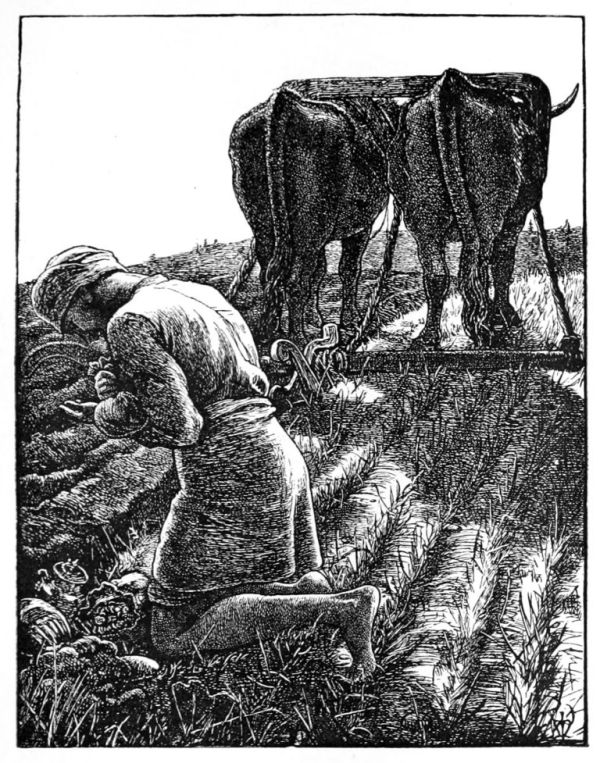
Far more important and more complete is Sir John Gilbert's edition of Shakespeare published by Routledge in three volumes, 1858 to 1860. This edition of Shakespeare has yet, as a whole, to be surpassed.
In 1859 "Once a Week" was started by Bradbury and Evans, and the first volume contained illustrations by H. K. Browne ("Phiz"), G. H. Bennett, W. Harvey, Charles Keene, W. J. Lawless, John Leech, Sir J. E. Millais, Sir John Tenniel, J. Wolf; this is the veritable connecting link between the work of the past as exemplified by Harvey, and of the present by Keene. The next year, 1860, the "Cornhill" appeared, for the first number of which Thackeray, more or less worked over by ghosts, and engravers, did the illustrations to "Lovel the Widower," but Millais was called in for the second or third number, and then George Sala. Frederick Sandys illustrated "The Legend of the Portent," and the volume ends with Millais' splendid design "Was it not a lie?" to "Framley Parsonage." It is curious to note that either Thackeray or the publishers refuse to mention the names of the artists in any way, only that Millais and Sala are allowed to sign their designs with their monograms. Leighton, I imagine, contributed the "Great God Pan" to the second volume, and Dicky Doyle began his "Bird's Eye Views of Society" in the third, but it is not until[Pg 90] one is more than half way through this volume that the initials F. W. appear on what are supposed to be Thackeray's drawings—or, rather, it is not until then that the great author acknowledged his failure as an illustrator; though, in the "Roundabout Papers," he admitted his indebtedness to Walker.
The first drawing signed by Walker faces p. 556, "Nurse and Doctor," and illustrates Thackeray's "Adventures of Philip;" this is in May, 1861. "Good Words" was also started in 1860; in it in 1863 Millais' "Parables" were printed, as well as work by Holman Hunt, Keene and Walker, while A. Boyd Houghton, Frederick Sandys, Pinwell, North, Pettie, Armstead, Graham, and many others began to come to the front in this magazine and "Once a Week." About 1865 nearly as many good illustrated magazines must have been issued as there are to-day; not only were the three I have mentioned continued, but "The Argosy," "The Sunday Magazine," and "The Shilling Magazine," among others, printed fine work by all these artists.
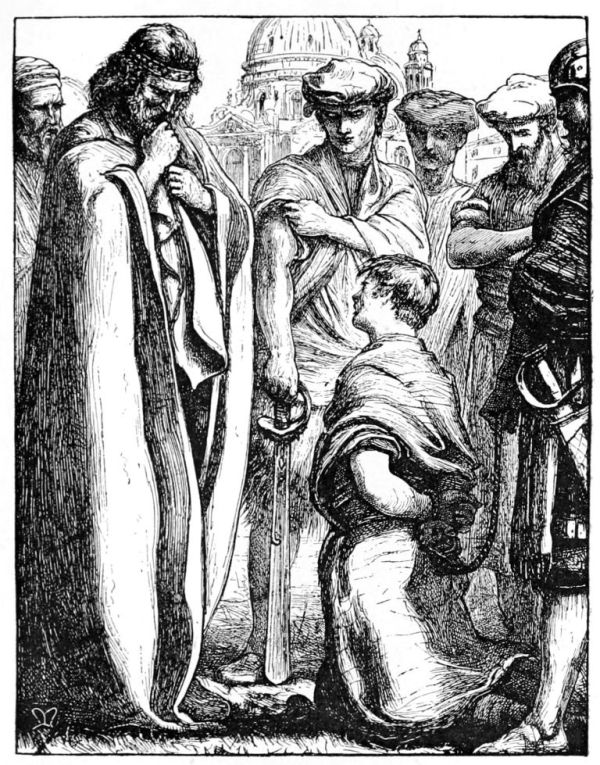
The illustration was done in a curious, but very interesting sort of way. The entire illustration began to be undertaken by two firms, Messrs. Dalziel and Swain—and I believe in the case of "Good Words" the same system is still carried on by Mr. Edward Whymper. These firms commissioned the drawings from the artists, and then engraved them. The method seems to have been so successful that the engravers, notably the Dalziels, began not only to employ artists to [Pg 91] draw for them, and to engrave their designs, but they became printers as well, and produced that set of books which are now the admiration and despair of the intelligent and artistic collector. When they were printed, they were sold to a publisher, who merely put his imprint on them. To this day they are known as Dalziel's Illustrated Editions. The first important book of this series that I have seen is Birket Foster's "Pictures of English Landscape," 1863 (Routledge), printed by Dalziel; with "Pictures in Words," by Tom Taylor, though this was preceded by a horrid tinted affair by the same artist, called "Odes and Sonnets." The binding is vile; the paper is spotting and losing colour, but the drawings must have been exquisite, and here and there the ink is spreading and giving a lovely tone, like an etching, to the prints on the page.
In 1864 Messrs. Dalziel, who had already engraved for "Good Words" in the previous year Millais' "Parables of Our Lord," published them through Routledge. This book, in an atrocious binding described as elaborate, and it truly is, bound up so badly that it has broken all to pieces printed with some text in red and black, contains much of the finest work Millais ever did. Nothing could exceed in dramatic power, in effect of light and shade, "The Enemy sowing Tares," to mention one block among so many that are good. But the whole book is excellent, and excessively rare in its first edition.
But 1865 is the most notable year of all; in this "Dalziel's Illustrated Arabian Nights' Entertain[Pg 92]ments" came out; originally published in parts, I believe, and later in two volumes, text and pictures within horrid borders. In this book A. Boyd Houghton first showed what a really great man he was. He clearly proves himself the English master of technique, as well as of imagination, although in this volume, issued by Ward and Lock, he has as fellow illustrators Sir J. E. Millais, J. D. Watson, Sir John Tenniel, G. J. Pinwell, and Thomas Dalziel—the latter of whom is a very big man, and for this, and some of the subsequent books, he made most remarkable drawings. But Houghton towers above them all, and Mr. Laurence Housman in an able article on him in "Bibliographica" well says:
"Among artists and those who care at all deeply for the great things of art, he cannot be forgotten: for them his work is too much an influence and a problem. And though officially the Academy shuts its mouth at him ... certain of its leading lights have been heard unofficially to declare that he was the greatest artist" who has appeared in England in black and white. In '65, also, his "Home Thoughts and Home Scenes" was published, much less imaginative than his later work, but containing more beauty; and after this, for ten years, he worked prodigiously, and yet excellently. His edition of "Don Quixote" (F. Warne and Co.), must be sought for in the most out-of-the-way places; easier to find are his "Kuloff's Fables," '69 (Strahan), and best known of all, the drawings in the early numbers of the "Graphic,"—the American series—which were not [Pg 93] all published, I think, before he died. If some of these are grotesque, even almost caricature, they are amazingly powerful—and being the largest engraved works left, show him fortunately at his best. His original drawings scarce exist at all. I happen to have one of the most beautiful, "Tom the Piper's Son," from Novello's "National Nursery Rhymes," 1871. I have not pretended to give a list of Houghton's drawings, it would be nearly impossible; but those books and magazines I have mentioned contain many of the most important. In '65 Pinwell did a "Goldsmith" for Ward and Lock, which revealed his surprising powers.
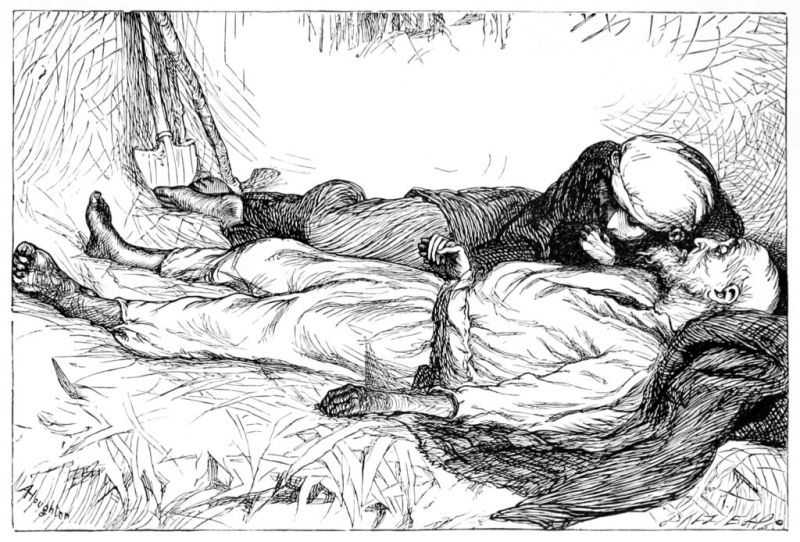
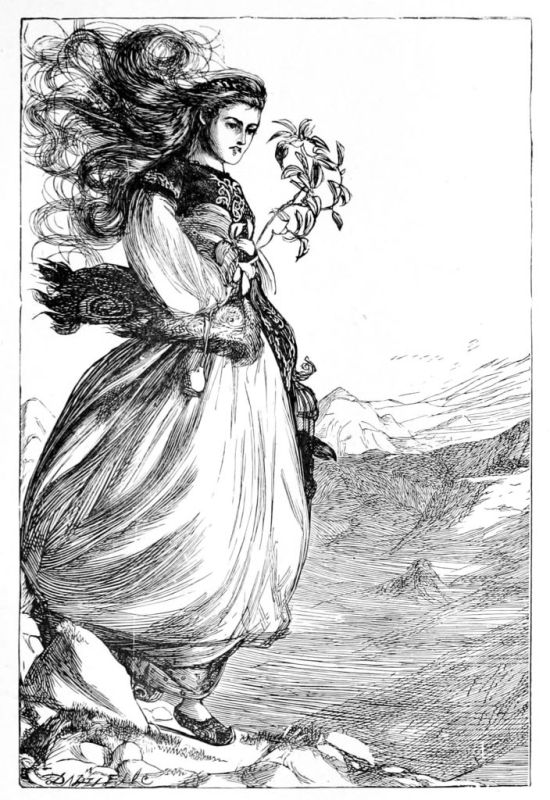
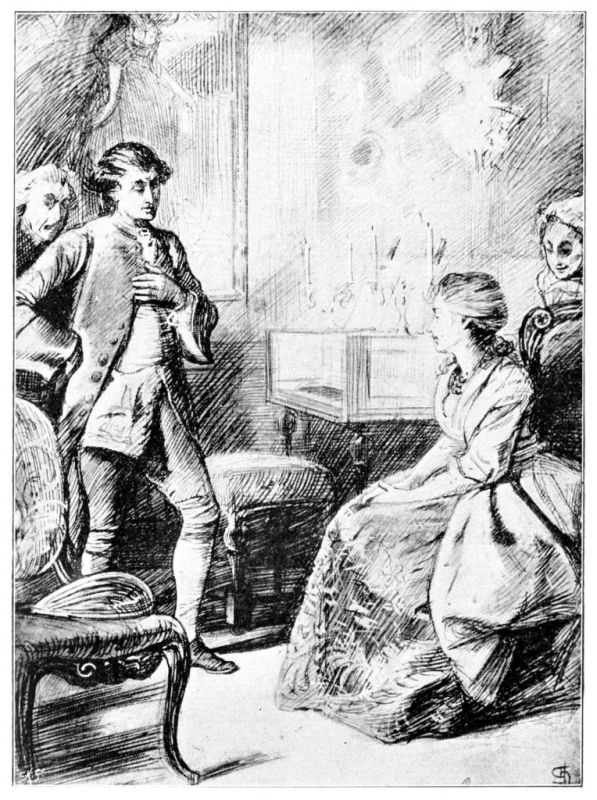
Cassells may have been the originators of this sort of illustrated book, or only the followers of a style which became immensely popular. They issued many works by Doré about the same time or later, and a "Gulliver," by T. Morten, among others, but as this volume is not dated, I am unable to say when it appeared—still to this day they keep up the system of publishing illustrated books in parts at a low rate. But soon expensive gift books, illustrated by Houghton, Pinwell, North, and Walker, began to appear, perfectly new unpublished works: in 1866 "A Round of Days" was issued by Routledge; Walker, North, Pinwell, and T. Dalziel, come off best in this gorgeous morocco covered volume, especially the last, who contributes a notable nocturne, the beauty of night, discovered by Whistler, being appreciated by artists, even while Ruskin was busy reviling or ignoring these illustrators. Houghton's edition of "Don Quixote" also belongs to this year. How[Pg 94] these men accomplished all this masterly work in such a short time, I do not pretend to understand.
In 1867, "Wayside Posies," and "Jean Ingelow's Poems" were published by Routledge and Longmans. These two books reach the high-water mark of English illustration, North and Pinwell surpass themselves, the one in landscape and the other in figures. T. Dalziel also did some amazing studies of mist, rain, and night, which I imagine were absolutely unnoticed by the critics. The drawings, however, must have been popular, for Smith and Elder reprinted the Walkers and Millais', among others, from the "Cornhill" in a "Gallery" (this also included Leightons and, I think, one Sandys), and Strahan the Millais drawings in another portfolio. The "Cornhill Gallery," printed, it is said, from the original blocks, came out in 1864, possibly as an atonement for the shabby way in which the artists were treated in the magazine originally.
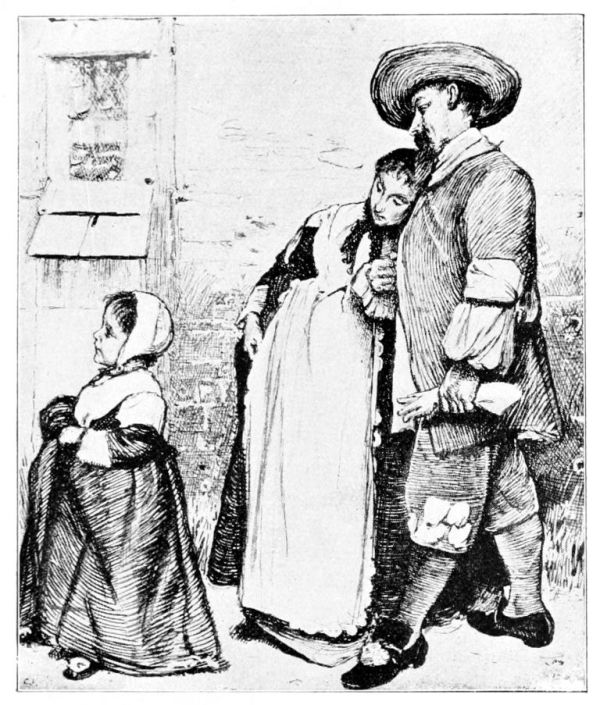
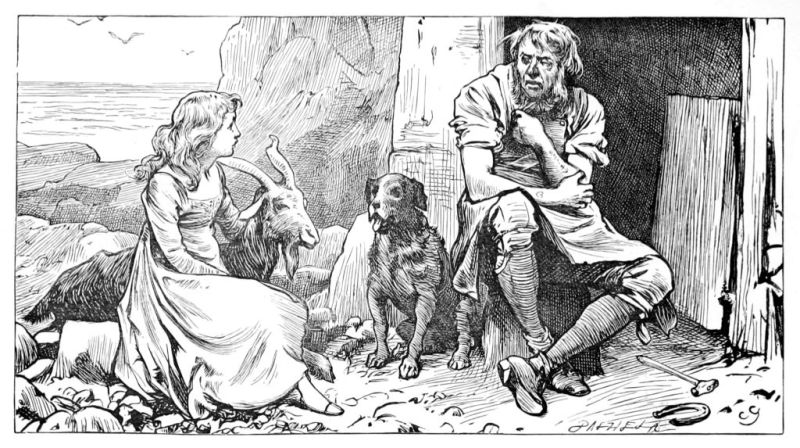
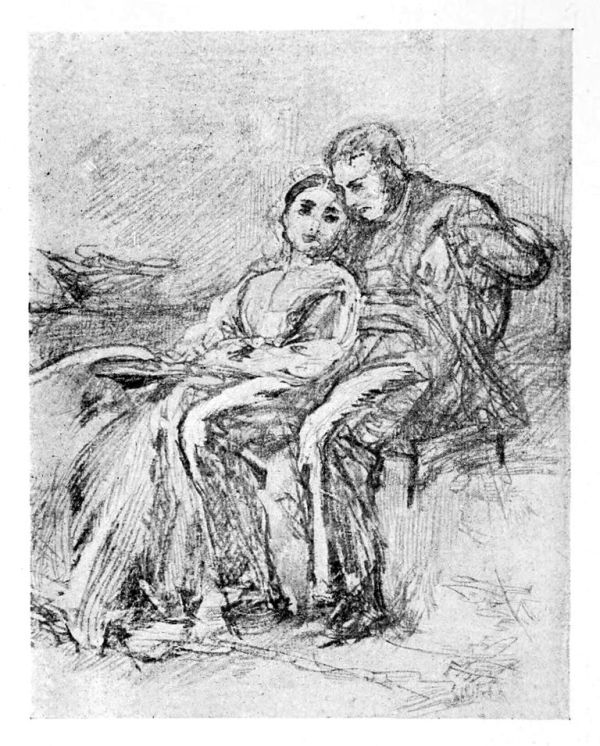
In 1868, "The North Coast," by Robert Buchanan, was issued by Routledge; it has much good work by Houghton hidden away in it. In the next year the "Graphic" started, and these books virtually ceased to appear—why, I know not. There were some spasmodic efforts, most notable of which were Whymper's magnificent "Scrambles amongst the Alps," 1871, containing T. Mahoney's best drawings and Whymper's best engraving; and "Historical and Legendary Ballads," Chatto and Windus, 1876; in this book, made up from the early numbers of the magazines, [Pg 95] one will find Whistler's and Sandys' rare drawings; it is almost the only volume which contains these men's work, although the drawings were not done originally for it, as the editor would like one to believe.
Whistler, it is true, illustrated a "Catalogue of Blue and White Nankin Porcelain," published by Ellis and White, 1878, a very interesting work, mainly in colours. But Sandys' drawings must be looked for in the magazines alone. I know of no book that he ever illustrated, a few volumes contain one or two, that is all; his drawings are separate distinct works of art, every print from them worthy of the portfolio of the collector. Dalziels issued at least two books later on, magnificent India proofs of "English Rustic Pictures," printed from the original blocks by Pinwell and Walker, done for the books I have mentioned, this volume is undated; and their Bible Gallery in 1881 (the drawings were made long before), to which all the best-known artists contributed, though the result was not altogether an artistic success; but most notable drawings by Ford Madox-Brown, Leighton, Sandys, Poynter, Burne-Jones, S. Solomon, Houghton, and T. Dalziel, are included in it.
This is the last great book illustrated by a band of artists and engravers working together in this country; whether the results are satisfactory or not, the fact remains that the engravers were most enthusiastic, and encouraged the artists as no one has done since in the making of books; and the artists were the most distinguished that have ever[Pg 96] appeared in England. Possibly, I should also have referred to the "British Workman," which was probably the first penny paper to publish good work of a large size. And I may have treated Mr. Arthur Hughes in a rather summary fashion. But I know his original drawings far better than the books in which they were printed; the only book which I really am acquainted with is "Tom Brown's School Days;" yet I know that he has made a very large number of illustrations, especially for Norman MacLeod's books among others. After twenty-five years illustration is again reviving in England, and one looks forward hopefully to the future of this branch of art.
Ten years later than the "Graphic" came the introduction of process, and process was employed in England mainly for one reason only: cheapness. Bad cheap process—which by the way is very little worse than cheap wood-engraving—has been responsible in this country for more vile work than in all the rest of the world put together. The development of process has brought with it not only truth of reproduction, which is its aim, but evils which its inventors did not anticipate.
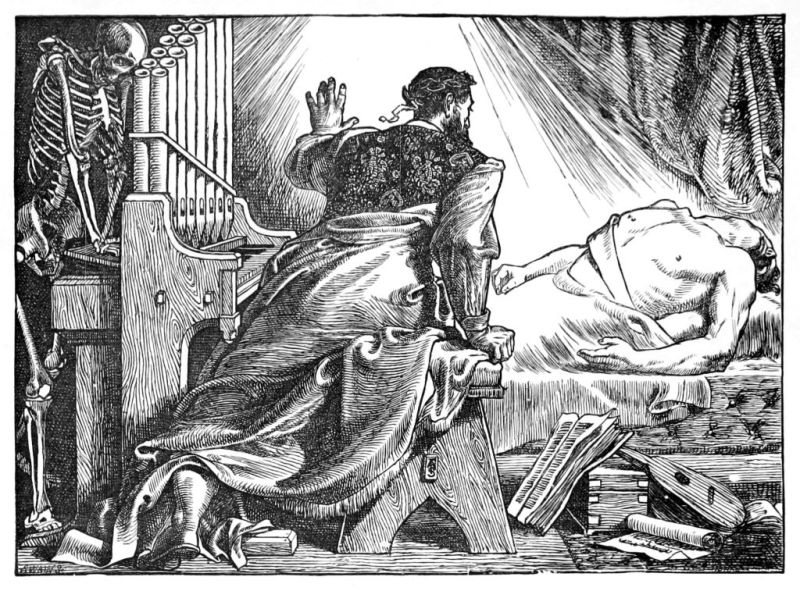
Too many process-engravers encourage the most commonplace, because it is the easiest, work. They know perfectly well that mechanical engraving will reproduce almost any drawings at the present moment, but then, good reproduction demands time and trouble and artistic intelligence. But it is no wonder that process-engravers are indifferent, when we remember the lamentable ignorance displayed by some editors, whose knowledge [Pg 97] of art—in fact, of all art work—is simply nil. They may have piles of taste, but all of it is bad. They know exactly what the public wants, for they themselves are the public they consider. The slightest attempt at the artistic rendering of a drawing, or the appearance of a new man with a new style, is enough to put them in a rage, because they cannot understand the one or the other. And the selection of "cuts which embellish"—I believe is the expression—their pages, is left to the process man, the photographer, and the cliché agent, who of course pick out the easiest they can supply. Their other duty is to edit their contributors, that is, if screwing and jewing an artist, and taking all life and soul for work out of him, can be described as editing. Lately has sprung up a species of illustrator who licks the boots of these editors and grovels before the process man. He turns out as much work as he can in the shortest space of time, knowing that he must make as many drawings as possible before some miserable creature, more contemptible than himself, comes along with an offer to do the work at half the price which he is paid.
I am happy to say that this state of affairs is by no means universal in England; but I regret that there seems to be a tendency in some quarters to prefer bad work because it is usually cheap. On the other hand, there are many notable exceptions: intelligent publishers, editors, artists, and process-engravers, who strive to do good work and expect to pay, or be paid, for it. But this state of things[Pg 98] has produced three classes of artists. First, the men who loudly declare they care nothing about their work, and who may therefore be dismissed with that contempt which they court. Second, those who rush absolutely to the other extreme, saying that all modern work is bad, and that there is nothing to do but to follow in the track of the fifteenth-century craftsman, not knowing, or more probably not wanting to know, that these same illustrators and engravers of the fifteenth century were, according to their time, as modern and up-to-date and fin-de-siècle as possible. Finally, there is a saving remnant, increasing as fast as good workmen do increase—and that is very slowly—who are going on, endeavouring to perfect themselves to the best of their ability, believing rightly that it is the business of engravers and printers to follow the artist, and not the artist's duty to become a slave to a mere mechanic, no matter how intelligent. The second of these classes has always existed in almost every profession in England; the class, in short, which is convinced that society and the world generally needs reforming, and that it is their little fad which is going to bring about this reformation.
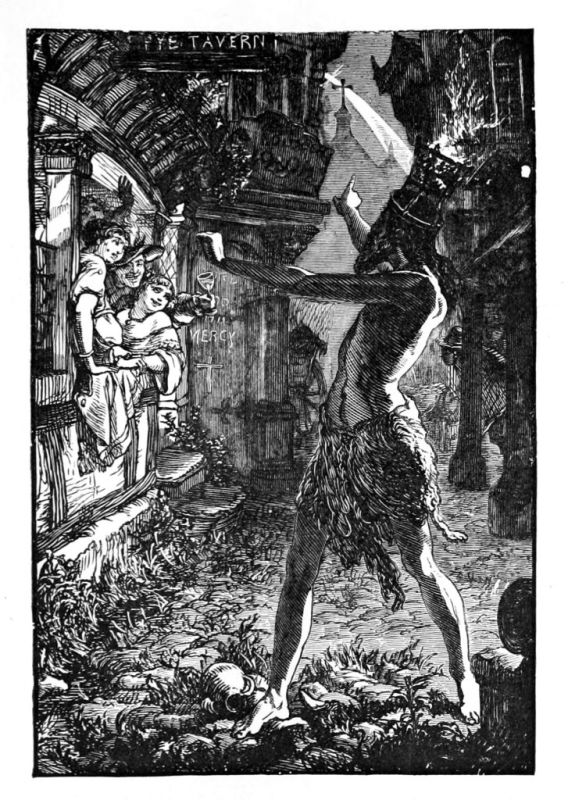
Now I do not hold for a moment that the man who is generally accepted as the leader of the pre-Raphaelite movement, Rossetti, had any desire to reform anybody, or improve anything. A certain form of art interested him, and he succeeded in reviving it for himself, though he put himself and his century into his drawings. It is the same with Sir Edward Burne-Jones, and Mr. William Morris, [Pg 99] and Mr. Walter Crane. But the praise which has been duly bestowed upon them has been unjustly lavished upon a set of people—or else, they, as they never weary of doing, have exploited themselves—who have neither the power to design nor the intelligence to appreciate a drawing when it is made, nor any technical understanding of how it was made. They will tell you, both by their work and in print, that there is nothing worth bothering about save the drawings of the Little Masters, and, to prove their appreciation of these drawings, they proceed at once not to copy the drawings, but the primitive woodcuts which were made out of them, not by the Masters at all. They will proceed to imitate painfully with pen and ink a woodcut, have it reproduced by a cheap process man, who, of course, is delighted to have work which gives him no trouble, entrust it to a printer buried in cellars into which the light of improvement has never made its way, that he may print it upon handmade paper, which the old men never would have used had they had anything better; and thus they succeed in perpetuating all the old faults and defects, adding to them absurdity of design which triumphs in the provinces, is the delight of Boston and the Western States of America, and the beloved of the Vicarage. Or, again, the young person, reeking with the School of Science and Art at South Kensington, will have none of process, and, painfully (for he usually cuts his finger), and simply (otherwise he should waste his time), endeavours, with halting execution but with perfect belief in his powers,[Pg 100] to cut his design upon the wood-block, not knowing that the master woodcutter, whom he essays to worship, spent almost as many years in learning his trade, as this person has spent minutes in knocking off a little illustration as a change from designing a stained-glass window, or writing a sonnet. This is the sort of work that exhausts first editions, is remembered for a few months, and produces leaders in the advanced organs of opinion. It is unfortunately true that the leaders have little influence, and that, later on, the first editions may be bought as old paper.
Ignorance of printing and of the improvements in that art is really in this country too awful to contemplate. The average critic will blame a competent artist for the imperfections of a process and the ignorance of a printer. It never occurs to this critic that he knows nothing practically about the subject. No attempt is made to surmount mechanical difficulties; no attempt is made to study improvements; one is simply told to work down to the lowest level and to copy the fads of an obsolete past.
Quaintness and eccentricity, too, have their followers, and though both are dangerous games to play, still they imply, if good, such an amount of research, study, and invention, whether original or not, that from them good work may often come. Still I no longer dare to prophesy. I know not what a man will do or will not. There is possibility in every one.
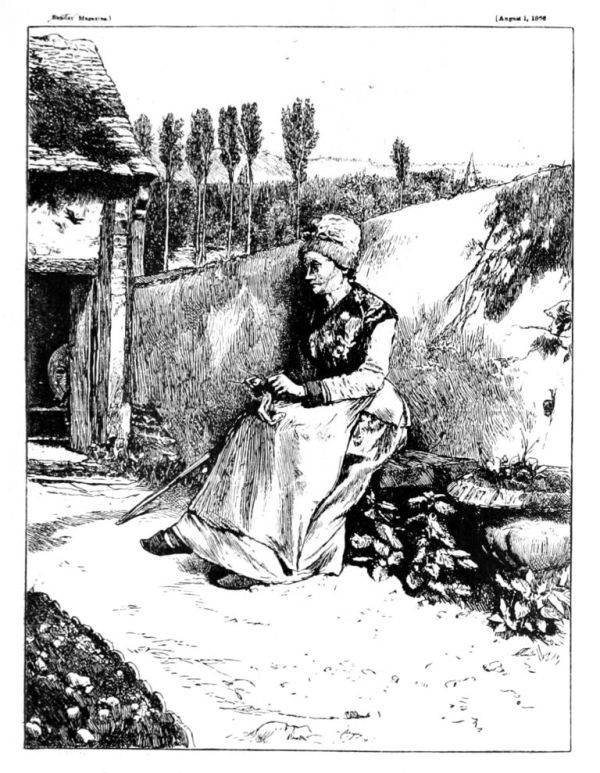
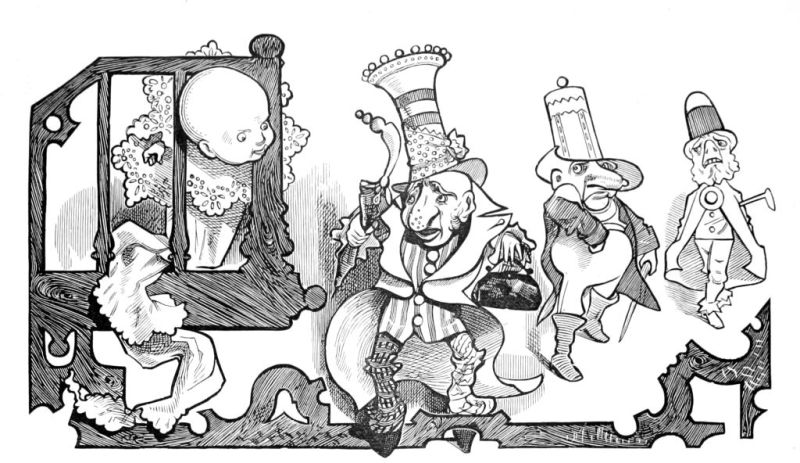
As for the other men who calmly go on doing their work in their own way, showing the process-engraver [Pg 101] what is wanted, instructing the printer on the subject of effects and colour, and dealing satisfactorily with intelligent publishers and editors, or even, as some do, ignoring all these factors, which they should not, their work is around us and delights us.
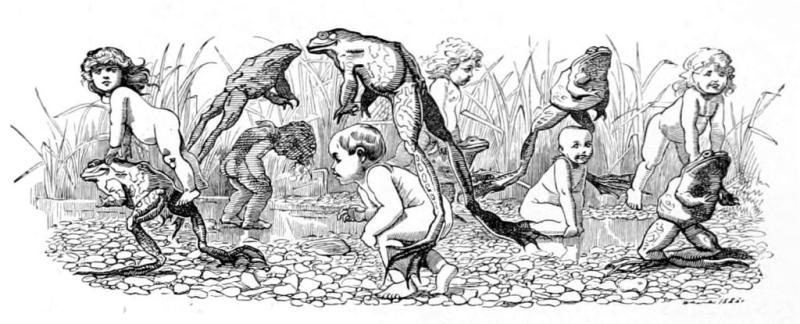
Of the older men, though Whistler has long ceased to illustrate, Du Maurier, Sidney Hall and William Small are still with us, producing characteristic designs. Charles Green carries on the excellent method which he developed in his illustrations to Dickens. Though J. Mahoney is dead, the present re-issue of Whymper's "Scrambles amongst the Alps" testifies marvellously to his powers. The late A. Boyd Houghton's abilities, too, are beginning to be appreciated, and his designs for the "Arabian Nights" are now being sought for as they never were during his lifetime. The success of Messrs. Macmillan's re-issue of the "Tennyson" of 1857 is gratifying proof that a large number of people do care for good work, and that the endeavour to swamp us with poor drawings, tedious photographs, and worn-out clichés will probably have its just reward. F. Sandys, one of the greatest of all, though still living, scarcely produces anything; F. Shields' designs for Defoe's "Plague" were Rembrandt-like in power; while H. Herkomer, in his illustrations to Hardy's "Tess of the D'Urbervilles," has, within the last few years, done some of his most striking work. Linley Sambourne, whose name was made years ago, pursues the even tenor of his ways, his reputation having been well secured by his [Pg 102] illustrations to the "Water Babies," and his countless "Punch" contributions. From the quantity of work produced by Harry Furniss it is quite evident that he is one of the most popular men in England. The fund of imagination which he devotes to perpetuating the unimportant actions of trivial members of Parliament is truly amazing. J. F. Sullivan has made caricature of the British workman his speciality, and he has recorded many of the antics of that personality with a truth that the labour organs might imitate to advantage. Sir John Tenniel is the legitimate successor of the old political cartoonist, but, luckily for him, his reputation rests, not upon his portrayal of the events of the moment, but upon his marvellous "Alice in Wonderland" and his classic illustrations to the "Legendary Ballads." Political caricature rarely, however, has an exponent like Tenniel, and though the work of J. Proctor, G. R. Halkett, and F. C. Gould is good in its way, owing to the conditions under which much of it has to be produced, and the absolute artlessness [Pg 103] of the subject, their aim naturally is to drive home a political point, and not to produce a work of art. The most genuine caricaturist who has ever lived in England was W. G. Baxter, the inventor of "Ally Sloper." Baxter died a few years ago. Happily, the three men who, in a great measure, are responsible for modern English illustration are working to-day: Birket Foster, Sir John Gilbert, and Harrison Weir, but, save the latter, they now produce scarcely any designs. Few of the brilliant band who succeeded them, however, are at work save Du Maurier and W. Small.[Pg 104] One has to deplore the recent death of Charles Keene, the greatest of all English draughtsmen.

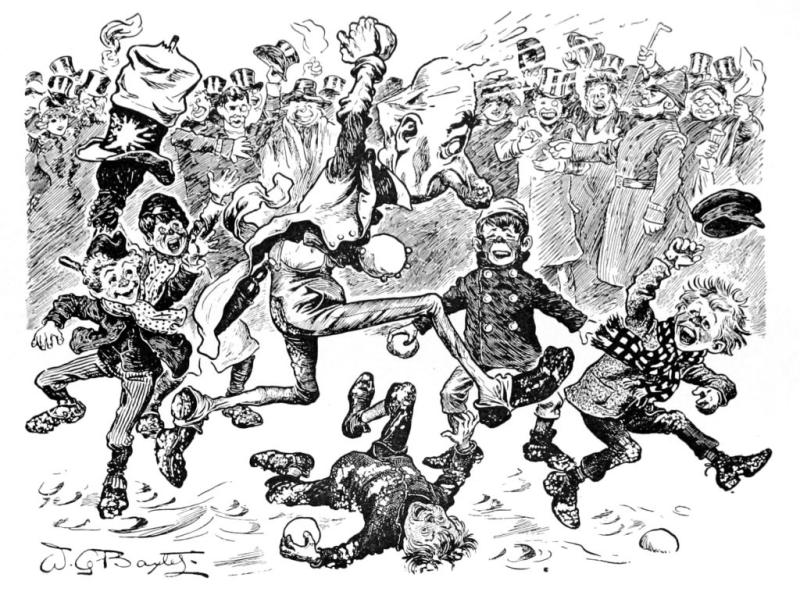
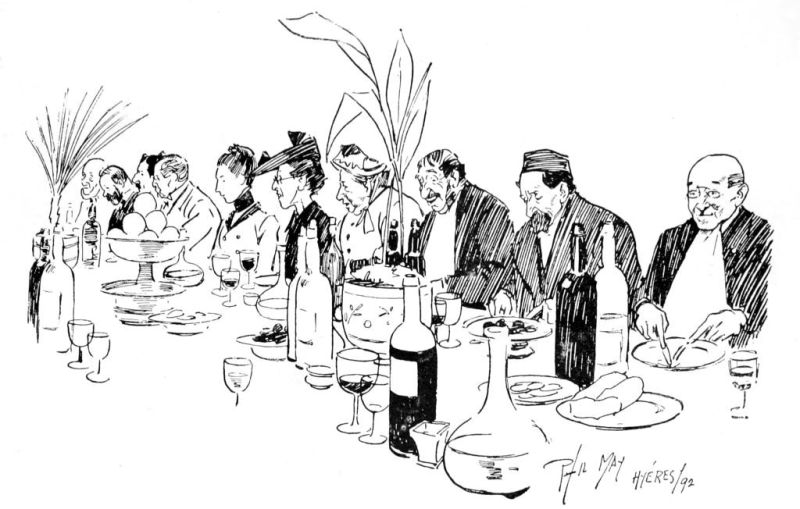
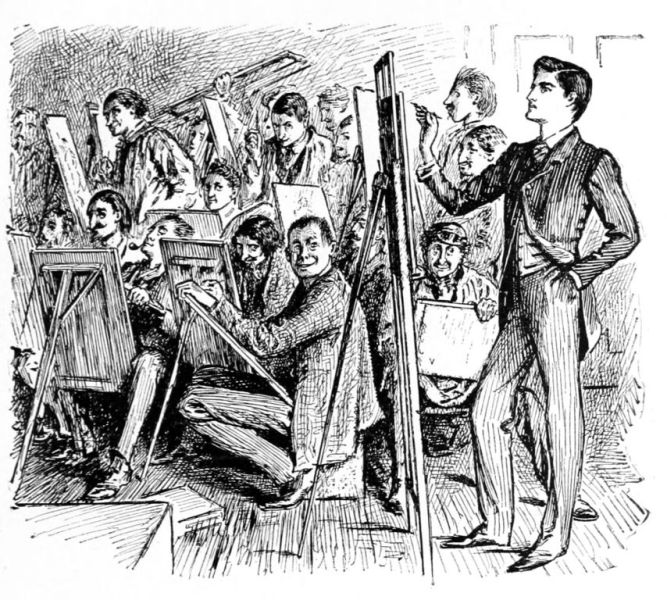
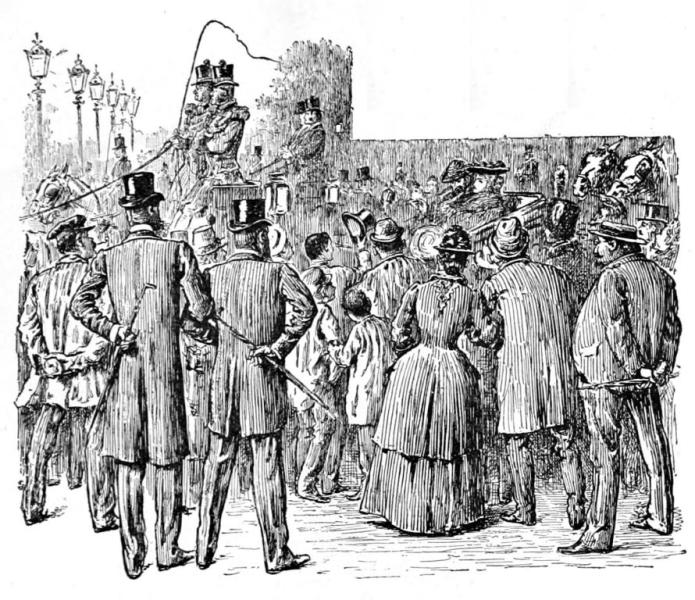
One therefore turns with interest to some of the younger men—men who have made and are making illustration their profession. Among them, one looks first to that erratic genius, Phil May, who has produced work which not only will live, but which successfully runs the gamut of all wit and humour. Nothing in its way has been done in England to approach his designs for the "Parson and the Painter." They appeared first in the pages of the "St. Stephen's Review," where they were scarcely seen by artists. But on their reappearance in book form, though even more badly printed than at first, what remained of them was good enough to make May's reputation. Between him and everyone else, there is a great gulf fixed, but the greatest is between May and his imitators.
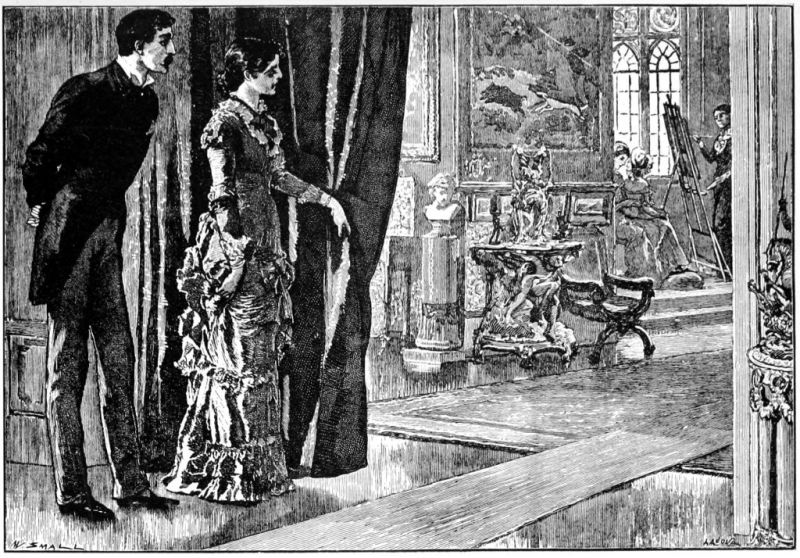
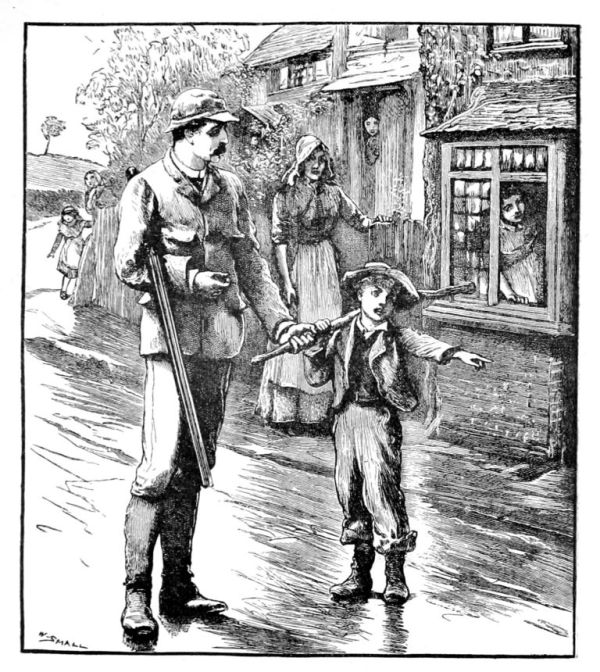
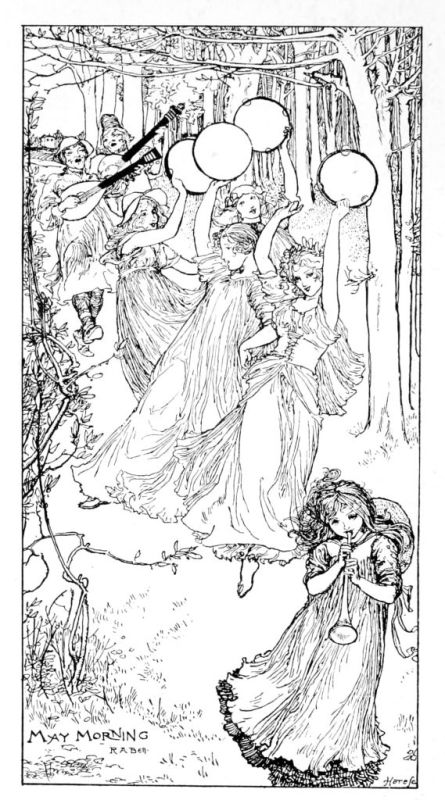
Most of the younger men of individuality have studied abroad and, like Americans, have returned home more or less affected by continental ideas. It would be quite impossible for me to place any estimate on their work, or even attempt to describe it. But certainly it is to some of the new weekly and daily journals and less known monthlies that one must look for their illustrations. It seems to me that E. J. Sullivan, A. S. Hartrick, T. S. Crowther, H. R. Millar, F. Pegram, L. Raven-Hill, W. W. Russell are doing much to brighten the pages of the papers to which they contribute. Raven-Hill, Maurice Greiffenhagen, Edgar Wilson and Oscar Eckhardt have made a most interesting experiment [Pg 105] in "The Butterfly," which I hope will have the success it deserves.[20] R. Anning Bell, Aubrey Beardsley, Reginald Savage, Charles Ricketts, C. H. Shannon and L. Pissarro have the courage of their convictions and the ability often to carry out their ideas. Beardsley, in his edition of the "Morte d'Arthur," "Salome," and his "Yellow Book" pictures, among other things, has acquired a reputation in a very short space of time. R. Anning Bell has become known by his very delightful book-plates, while Ricketts, Shannon and Pissarro, are not only their own artists and engravers, but editors and publishers as well. "The Dial" is their organ, and it has contained very many beautiful drawings by them, though they have contributed covers and title-pages to various books and magazines, and have brought out an edition of "Daphnis and Chloe" which must serve to perpetuate the imperfections of the Middle-Age wood-cutter. Wal Paget, W. H. Hatherell, and G. L. Seymour, in very different ways, head a long list of illustrators who can decorate a story with distinction, or depict an event almost at a moment's notice. In facility, I suppose there is no one to equal Herbert Railton, unless it be Hugh Thomson. They have together illustrated "Coaching Days and Coaching Ways." Railton must have drawn almost all the cathedrals and historic houses in the country; and Thomson is in a fair way to resurrect many forgotten and unforgotten authors of the last century. J. D. Batten's illustrations to Celtic, [Pg 106]English, and Indian fairy tales are extremely interesting, while Launcelot Speed and H. J. Ford have for several years been making designs for Mr. Lang's series of fairy books. Laurence Housman has this year scored a decided success with his illustrations for Miss Rossetti's "Goblin Market." To Bernard Partridge has fallen of late the task of upholding "Punch" from its artistic end; this has apparently proved too much even for him, since I note that for the first time in its existence that paper is employing outsiders and even foreigners. To what is England, or rather "Punch," coming? His drawings for Mr. Anstey's sketches have been deservedly well received, while lately he, too, has fallen a victim to the eighteenth century in his striking illustrations for Mr. Austin Dobson's "Beau Brocade." Mr. E. T. Reed, of the same journal, during the last year has developed not only a most delightful vein of humour, but an original style of handling—his burlesques of the decadents are better than the originals almost. Reginald Cleaver can probably produce a drawing for a cheap process with more success than anyone, and yet, at the same time, his work is full of character. It is pleasant to turn to men like Sir George Reid and Alfred Parsons, with whom exquisite design and skilled technique, and not cheapness, is the aim in their illustrative work. Parsons has, with Abbey, in "Old Songs," "A Quiet Life," etc., and alone in Wordsworth's "Sonnets," and also in the "Warwickshire Avon," produced the books which reach the high-water mark of English illustration, although they were first published [Pg 107] in America. On the other hand Sir George Reid's designs for "Johnny Gibb," "The River Tweed and the River Clyde," and several other publications of David Douglas of Edinburgh, have been brought out altogether in this country.
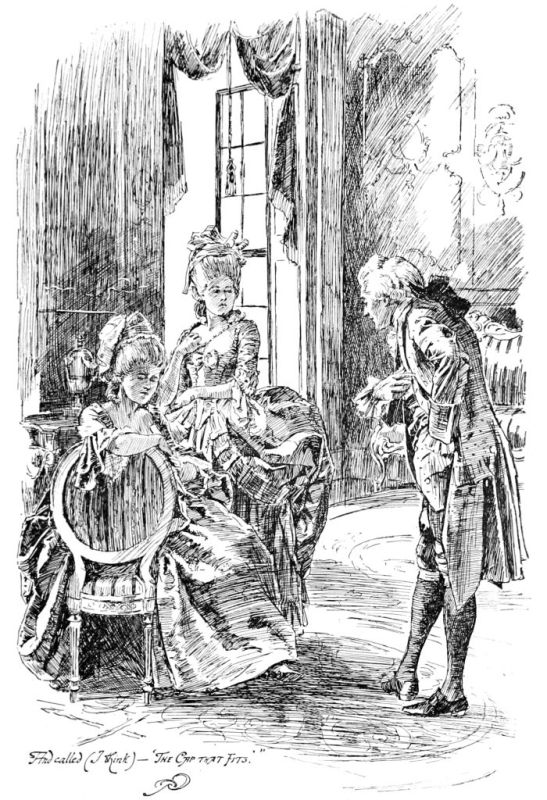
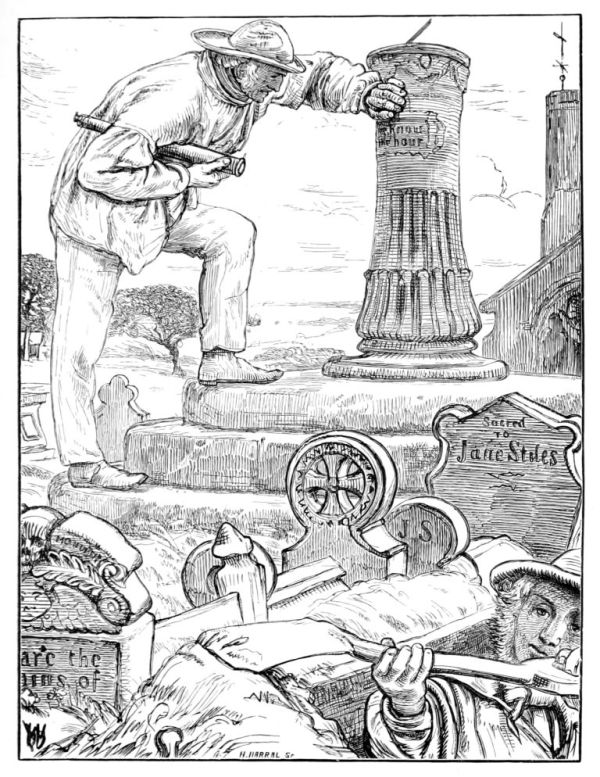
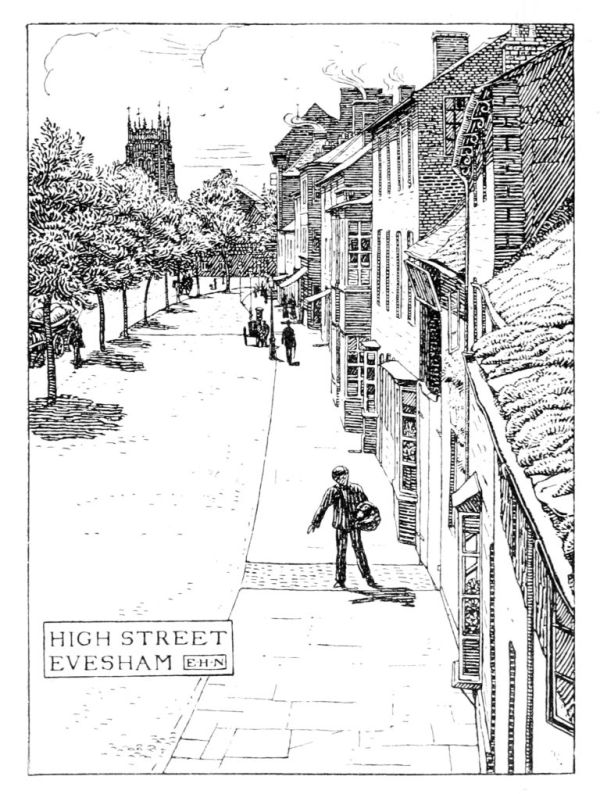

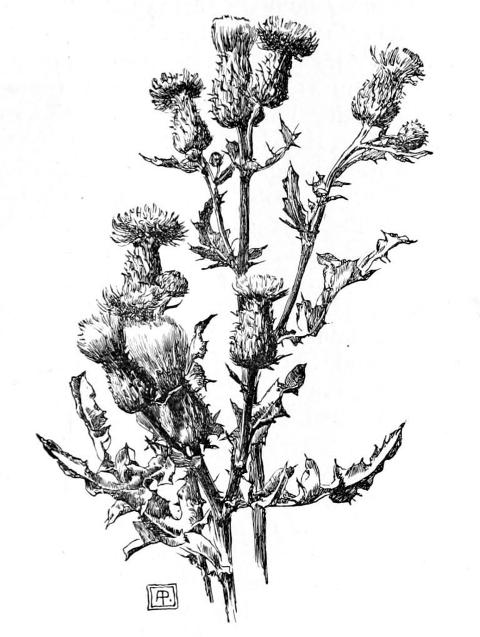
I should like to discuss the schools that have been developed by the Arts and Crafts Society in[Pg 108] some of the provincial centres. But as none of the students approach for a moment such an exquisite draughtsman as Sandys, to say nothing of the work of the older men whom they attempt to imitate, it seems rather premature to talk about them.
Still, A. J. Gaskin, limiting himself in a way that seems quite unnecessary, has illustrated Andersen's "Fairy Tales" very well, if one adopts his standpoint. E. H. New has made portraits that are decorative; and, under Gaskin's direction, a little book of "Carols" has been illustrated by his pupils; while, in the same style, C. M. Gere and L. F. Muckley are doing notable work, and they are about to start a magazine "The Quest." The "Hobby Horse," the organ of the Century Guild, has contained many good designs by Herbert Horne and Selwyn Image. On much the same lines, too, Heywood Sumner, Henry Ryland, Reginald Hallward, Christopher Whall and others have been very successful. Nor can one ignore the initials and borders of William Morris, made for his own publications.
There are dozens of artists, whose names, like their works, are household words, Forrestier, Montbard, W. L. Wyllie, Barnard, Nash, Overend, Wollen, Staniland, Caton Woodville, Durand, Stacey, Rainey, Barnes, and Walter Wilson, who have a power of rendering events of the day in a fashion unequalled elsewhere, and whose excellent designs are seen continuously in the pages of the "Graphic," the "Illustrated London News," and "Black and White." There is also another set who amaze us by their power of compelling editors [Pg 109] to publish weekly, and even daily, stacks of their drawings, when those of better men go a-begging.
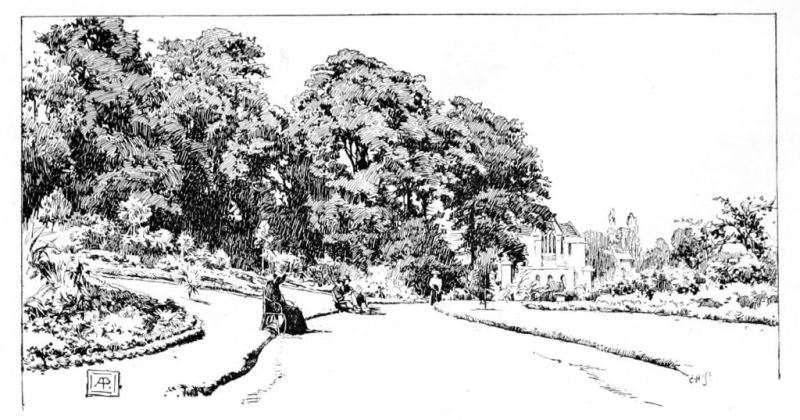
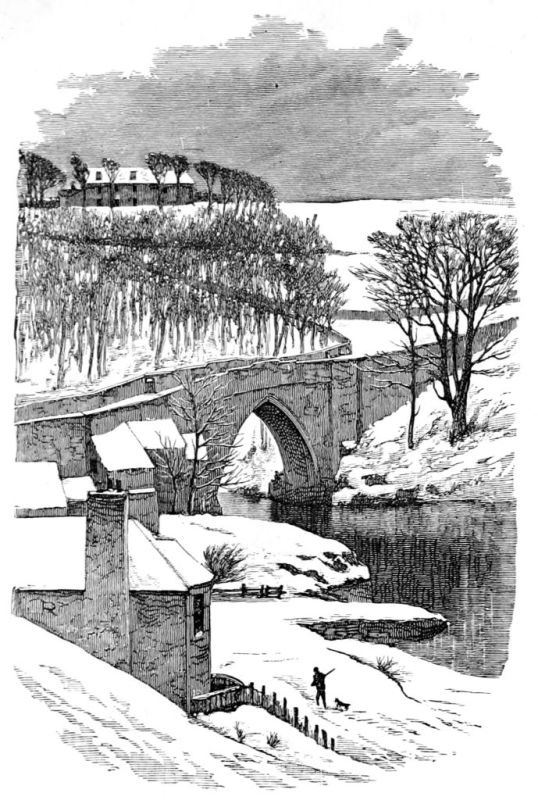

Though wood-engraving is purely an English art, and though some of the greatest wood-engravers even in modern times have been Englishmen, the art no longer flourishes here as it should. The strongest of modern engravers, Cole and Linton, are both Englishmen, but their reputations are due chiefly to America. W. Biscombe Gardner is almost the only man who has continued to produce good interpretative work, engraving his own designs, while W. H. Hooper easily leads in facsimile work. This decline of wood-engraving has been especially felt by such important firms as Dalziel and Swain. An International Society of Wood-engravers has lately been started, and one hopes its members will succeed in the task they have set themselves: that of encouraging original wood-engraving. In colour-printing England has always held a leading place, the work of Edmund Evans and the Leighton Brothers being universally appreciated. A very strong endeavour is being made by Messrs. Way to revive original lithography. As this art is now beginning to be again practised by eminent artists, there is every probability that their efforts will be successful. "Vanity Fair" has always been illustrated by chromo-lithography, and in it appeared the work of the late Carlo Perugini, while "Spy" and others still carry out his methods. The architectural papers also use, mainly, photo-lithography for reproducing the drawings which they print. In England the fashion of making pictorial[Pg 110] perspective drawings for architects has been very extensively practised; it is only an outgrowth of the work of Prout and Harding, but it has been enormously developed since their day; at present, [Pg 111] several architectural papers are published which solely contain drawings of this sort, drawings mainly the outcome of the T-square, and the inner consciousness of the architectural perspective man, who has never seen the house, nor the landscape, nor street elevation in which his subject may be ultimately built; nevertheless some of these drawings are most interesting. The work of the late W. Burgess, A.R.A., of A. B. Pite, in mediæval design; of G. C. Horsley, A. B. Mitchell, T. Raffles Davison, Rowland Paul, and, above all, of C. E. Mallows. Mr. Mallows is an artist; to him a drawing is as important as the building it represents; he does everything he can from nature, and his drawings of old work, notably difficult studies in perspective, like the cloisters of Gloucester, have never been equalled by any of the Prout-Harding-Cotman set. He feels that architecture and the delineation of it are a part of the fine arts—and he makes others feel it too. And to do this is simply to be an artist. This fashion of architectural drawing has spread to America and Germany, but it has no support in France. Much has also been accomplished in etching, and England possesses to-day in William Hole, Robert Macbeth, William Strang, Frank Short, D. Y. Cameron, C. J. Watson, C. O. Murray, a number of etchers whose fame is justly great.
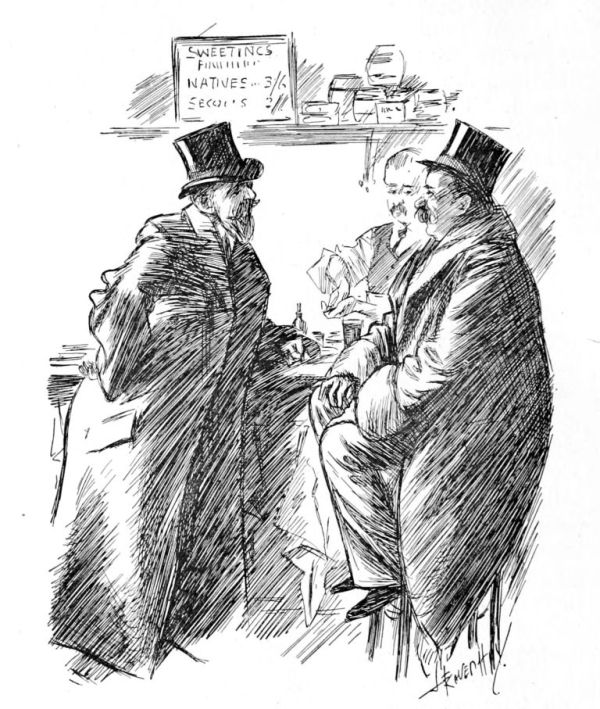
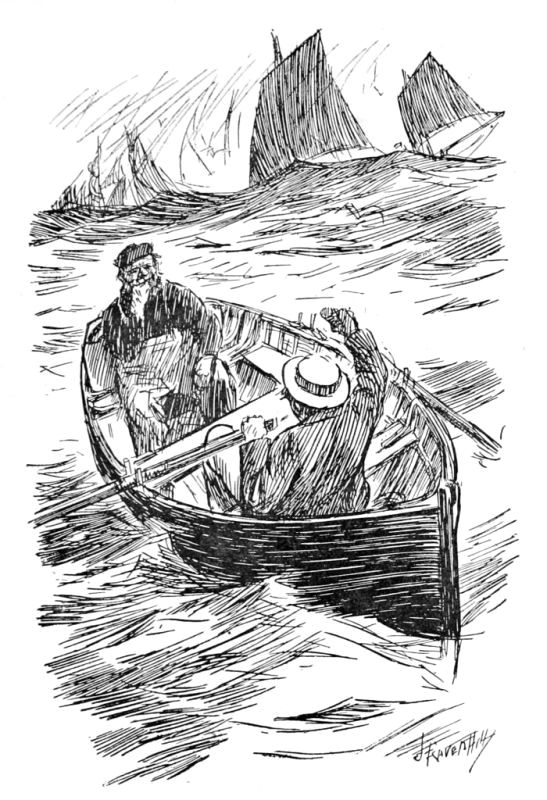

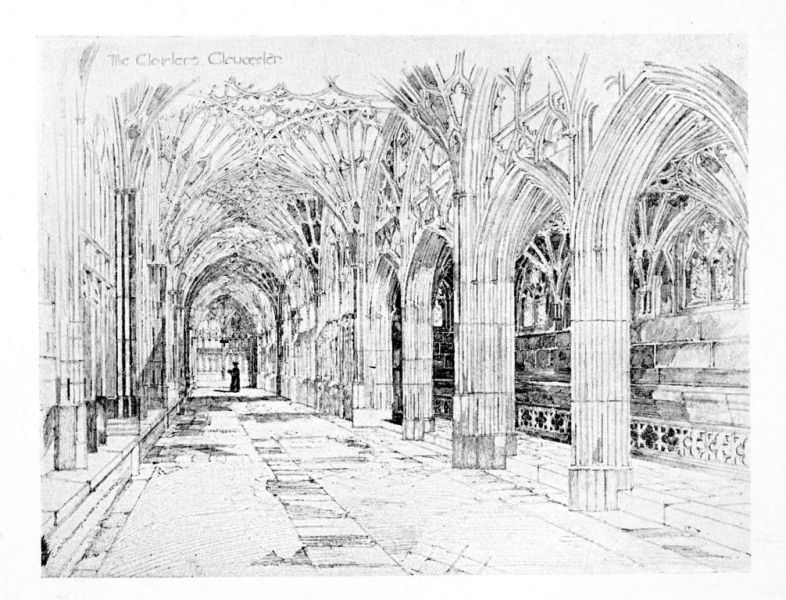
Whether the idea of the "special artist on the spot" originated in England or not, I cannot say; certainly he was employed, and his work acknowledged in the early numbers of the "Illustrated London News." But, at any rate, many English[Pg 112]men have devoted themselves almost entirely to this form of pictorial reporting and correspondence. The man who has had probably the most extensive experience is William Simpson, of the "Illustrated London News,"[21] but F. Villiers, Melton Prior, and Sidney Hall have assisted at almost all the scenes of national joy or grief—have followed the fortunes of war, or the progress of royalty, or any other important event in every quarter of the world. These artists' methods of work were most interesting. They trained themselves to sketch under the most dangerous, fatiguing, and difficult conditions—making rather shorthand notes than sketches, which were quite intelligible to a clever band of artists attached to their various journals. These artists, on receiving the sketches, produced finished drawings in a few hours, or, at longest, a few days. Now, however, matters have changed somewhat. The editors (not the public) have learned to appreciate sketches, and men who can either produce a complete work of art on the spot, or work from their own sketches, are more generally engaged in this way. I do not mean to say that the war correspondents I have named could not do this work, only that often they did not, owing to exigencies of time and other difficulties. Mr. Hall's work at present is finished on the spot. His drawings at the Parnell trial were most notable. But I think in the next artistic generation the correspondent will have to work harder—if he produces less.
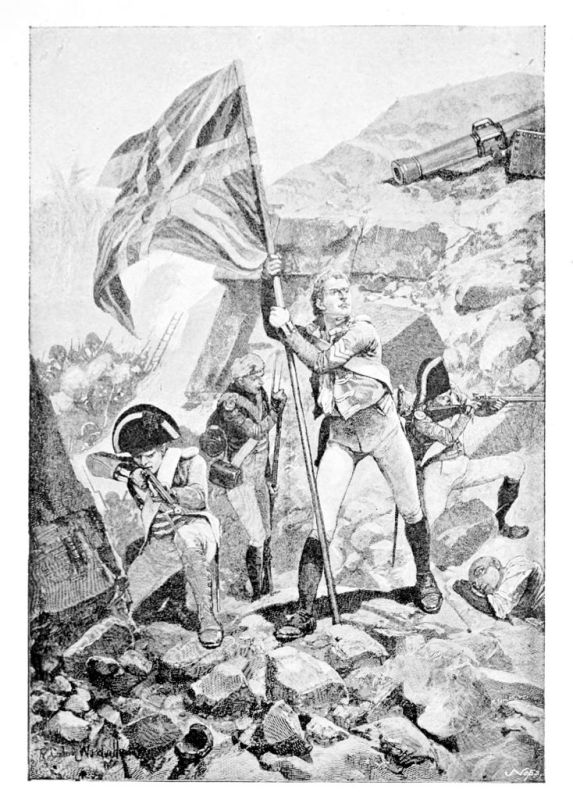
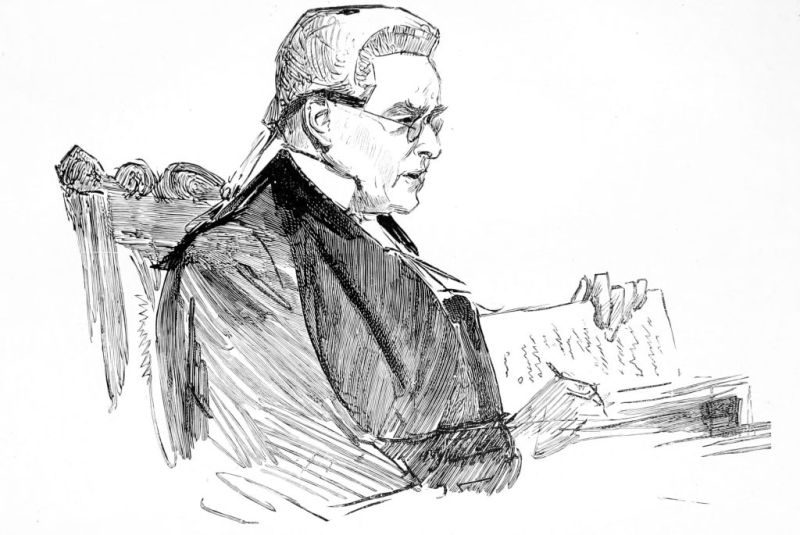
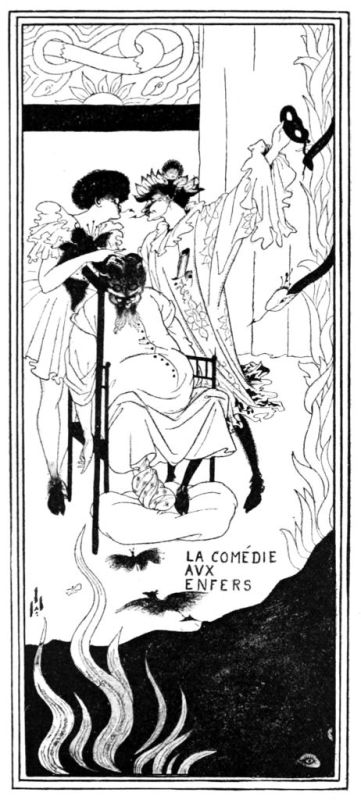
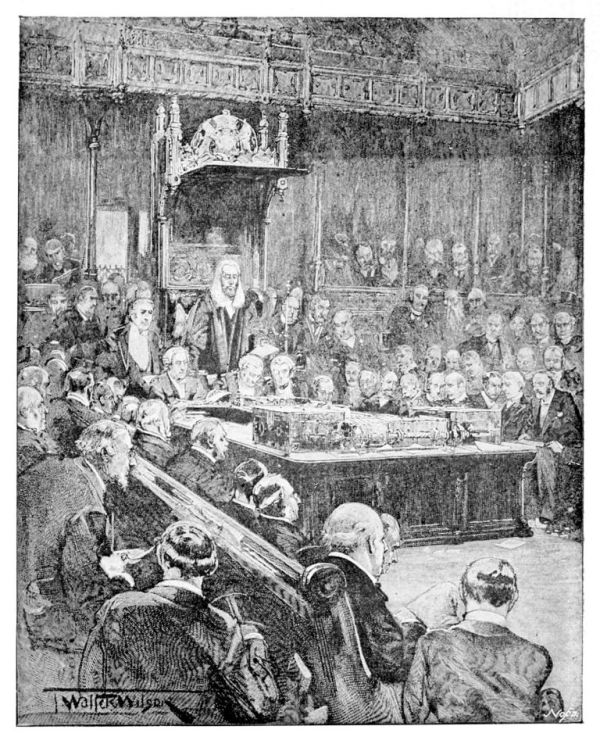
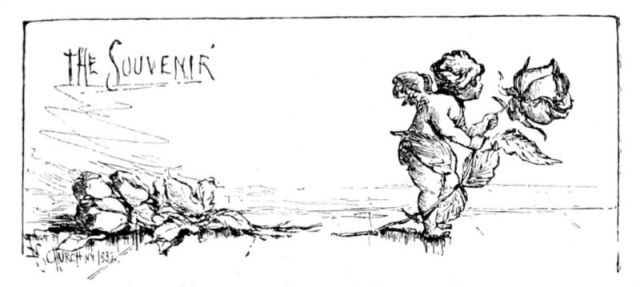 BY F. S. CHURCH. FROM AN ETCHING IN “THE CONTINENT.”
BY F. S. CHURCH. FROM AN ETCHING IN “THE CONTINENT.”
In many ways the illustrative work of America is more interesting than that of any other country. The rapidity of its growth, the encouragement that has been given it by publishers, and the surprisingly important artistic results obtained have won it recognition all over the world.
Twenty-five years ago, at the time that the best work was really being done in England, scarcely anything was being produced in America. It is true that some of the magazines had been started, and that some of the men, who are best known as illustrators to-day, were at work. But it was not until 1876, the year of the Centennial, the first international exhibition held in America, that American artists, engravers, printers, and publishers were enabled to form an idea of what was being done in Europe. At the same time a brilliant band of young men, who had been studying[Pg 114] abroad, returned to New York, and it is mainly owing to their return, and the encouragement which intelligent and far-seeing publishers gave to them, and also to the artists and engravers who were already in America anxious to work, that what is now known as the American school of wood-engraving, together with American illustration and printing, was developed.
The way in which this school has been built up is so interesting that it may be well to refer to it somewhat in detail. From the time that Mr. A. W. Drake, and, later, Mr. W. Lewis Fraser were appointed art editors of the "Century," then "Scribner's," they made it their business, as art editors, to assist and aid and encourage young artists. And earlier, too, Mr. Charles Parsons who managed the art department of Harper Brothers, gave such kind, sensible, and practical advice to many young artists that not only will his name never be forgotten as one who helped greatly to develop American art, but many an American illustrator now looks back to Mr. Parsons as the man who really started him on his career.
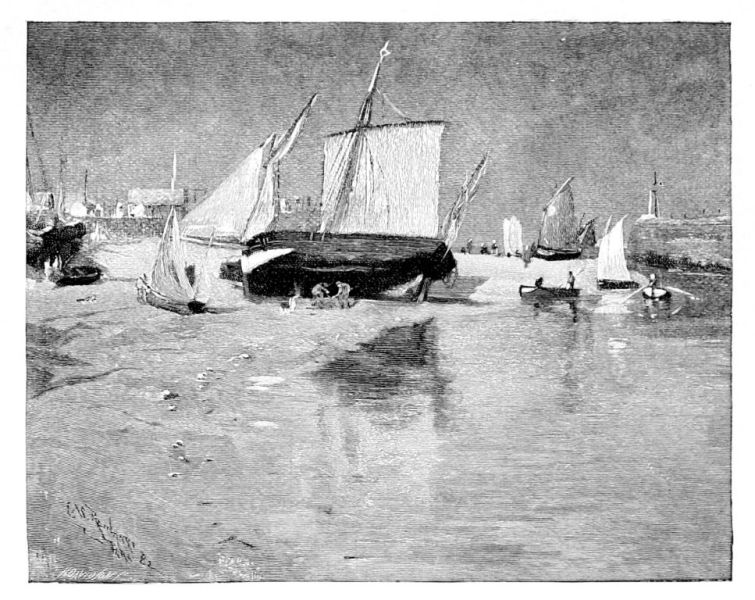
Mr. Drake's plan was this. If an artist brought a drawing to him in which there were any signs of individuality, intelligence, or striving after untried effects, his endeavour was to use that drawing, at any rate as an experiment, and to encourage the artist to go on and make others; not to say to the artist, "the public won't stand this, and our clientèle won't know what you mean." But then Mr. Drake was a trained artist and [Pg 115] engraver.[22] Nor did Mr. Drake and Mr. Fraser put down their opinions as those of the public. They did not pretend to be infallible, nor did the literary editors; with the consequence, that the American magazines have gained for themselves the largest circulation among respectable publications. In engraving, too, the engraver was asked to reproduce a drawing, not in the conventional manner, but as faithfully as he could, not only rendering the subject of the drawing, but suggesting its quality, the look of the medium in which it was produced. From this sprang the so-called American school of facsimile wood-engraving, which, until the advent of process, was the favourite cockshy of the literary critic who essayed to write upon the subject of art. Now, however, that he believes American engraving is about to disappear in process—though of course there is not the slightest danger of anything of the sort happening—he is uttering premature wails over its disappearance, which is really not coming to pass at all.
In printing, too, experiments were made from the very beginning with inks and paper and press-work. And though stiff glazed paper has been the outcome of these experiments, it is used simply because upon no other sort of paper can such good results be obtained. If some of the people who raise such a wail about this paper[Pg 116] would only produce something better, I am sure they would be well rewarded for their pains, because all the great magazines would at once adopt it.
Another reason for the success and advancement of American illustrators is because the publishers of the great magazines, like "The Century," "Harper's," "Scribner's," have had the sense to see that if you want to get good work out of a man you have to pay him for it and encourage him to do it, then reproduce, and print it in a proper fashion. Naturally, the artists have taken a personal pride in the success of the magazines with which they have been connected; in certain cases, greater probably than the proprietors themselves ever realized. They have worked with engravers; they have mastered the mysteries of process and of printing; various engravers and printers have also worked with the artist, and in many cases there has been a truer system of genuine craftsmanship than existed in the everlastingly belauded guilds of the Middle Ages.
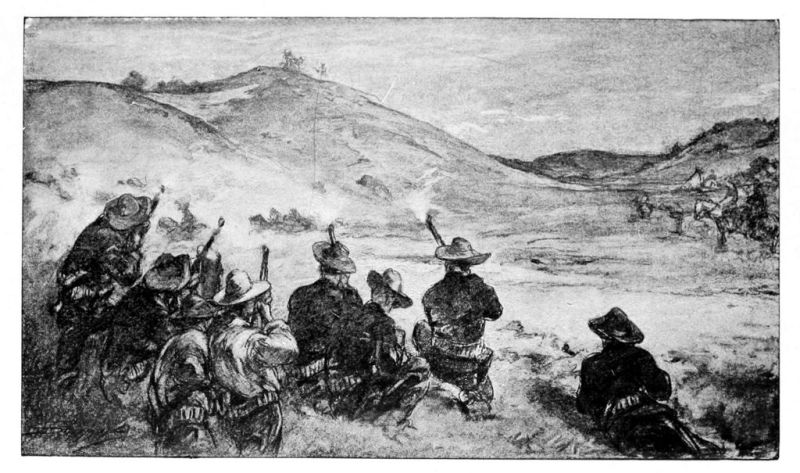 BY WALTER SHIRLAW. FROM “THE CENTURY MAGAZINE.”
BY WALTER SHIRLAW. FROM “THE CENTURY MAGAZINE.”
Within the last few years a new spirit has, to a certain extent, entered into American publishing, and there have cropped up magazines which, apparently, have for their aim the furnishing to their readers of the greatest amount of the cheapest material at the lowest possible price. Syndicate stories and photographic clichés struggle with bad printing, and possibly appeal to the multitude. However, these cheap and nasty journals will probably struggle among themselves to their own discomfiture, without producing lasting effect, [Pg 117] unless the conductors of the better class of magazines choose to lower the tone of their own publications.
The illustrated newspaper has become an enormous factor in America. The "Pall Mall" claims to have been the first illustrated daily, and the "Daily Graphic" is the only complete daily illustrated paper yet in existence in England. "Le Quotidien Illustré" has just been started in Paris. The claim of the "Pall Mall" is without foundation, as the London "Daily Graphic" but follows in the footsteps of the New York "Daily Graphic," which took its name from the London weekly; its illustrations were almost altogether reproduced by lithography. The New York "Graphic" was never a great success. Many American daily newspapers print more drawings in a week than the London "Daily Graphic." The chances are that in a very few years the daily will have completely superseded many of the weeklies, and quite a number of the monthly magazines too. It is simply a question of improving the printing press, and this improvement will be made. Anyone who has watched the progress of illustrated journalism during the last ten years can have no doubts upon the subject; and I am almost certain that the very near future will see the advent of daily illustrated magazines of convenient size, which will take the place of the monthly reviews and the ponderous and cumbersome machine we now call a newspaper.

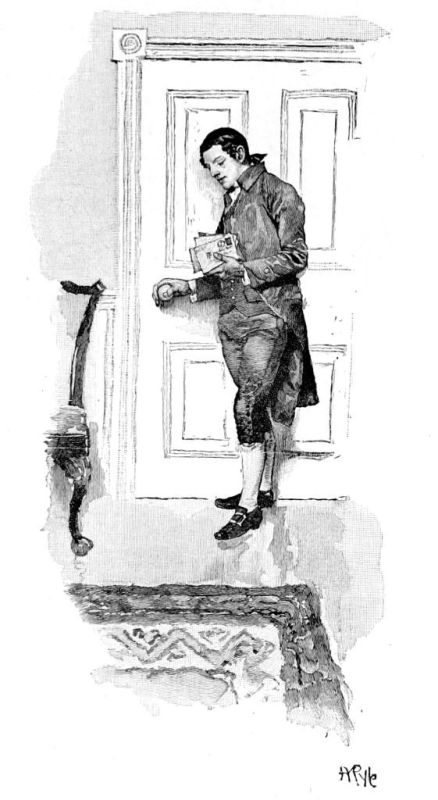
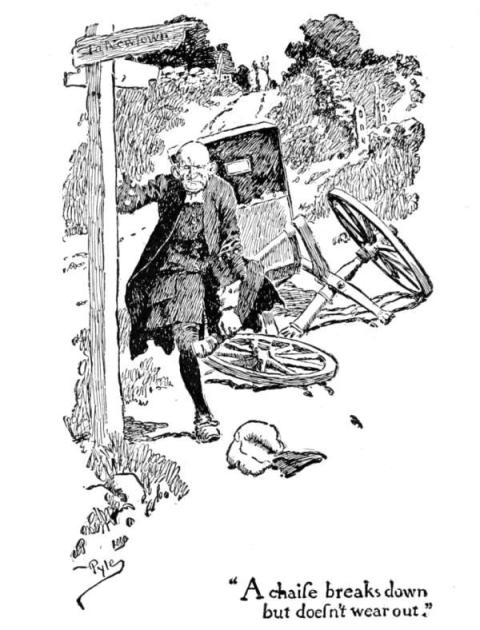
If, as is universally admitted, America has produced the best example of an illustrated magazine [Pg 119] that the world has to show, it is not very difficult to find out the reason. Editors have secured the services of some of the best native artists, and are ready to use the work of foreigners. Also many of [Pg 120] the best engravers work for these periodicals, and in machine printing Theodore de Vinne has set up a standard for the whole world. If these men have become master craftsmen, it is because they first [Pg 121] studied their art profoundly, and then learned the practical requirements and technical conditions under which drawings can best be reproduced for the printed page, as well as the best methods of printing that page.
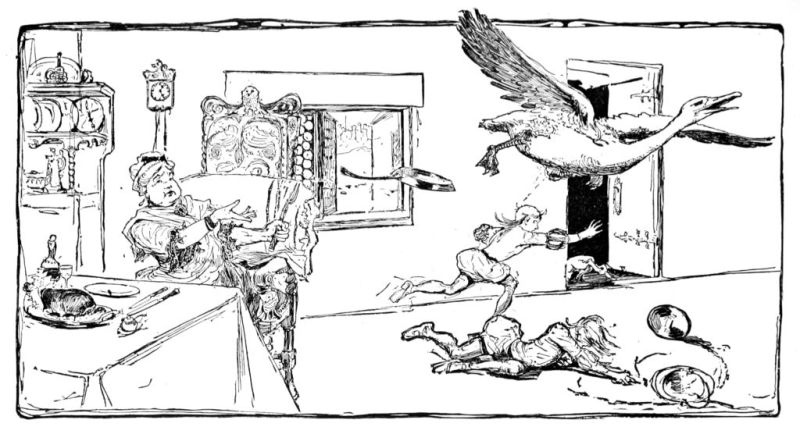 BY ALFRED BRENNAN. PEN DRAWING FROM “THE CONTINENT.”
BY ALFRED BRENNAN. PEN DRAWING FROM “THE CONTINENT.”
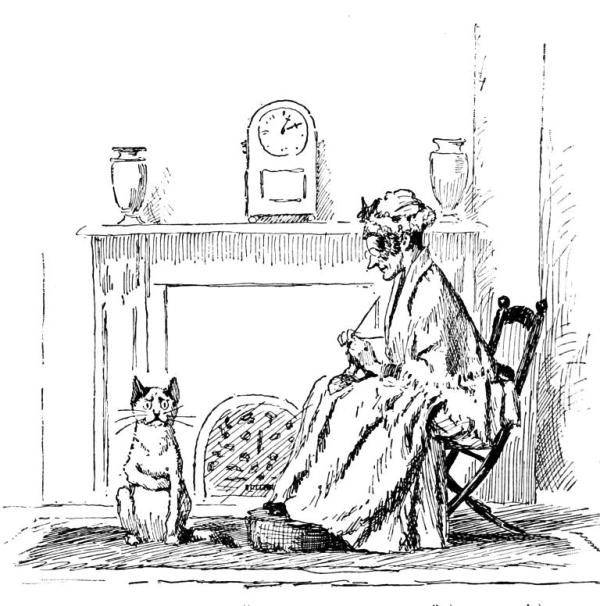 BY A. B. FROST. FROM “STUFF AND NONSENSE” (SCRIBNER’S).
BY A. B. FROST. FROM “STUFF AND NONSENSE” (SCRIBNER’S).
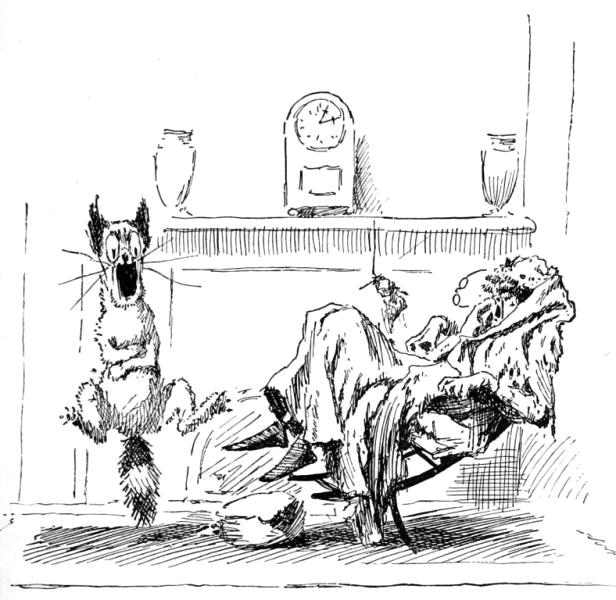 BY A. B. FROST. FROM “STUFF AND NONSENSE” (SCRIBNER’S).
BY A. B. FROST. FROM “STUFF AND NONSENSE” (SCRIBNER’S).
In his own way Mr. Abbey stands completely apart from all other artists. His beautiful drawing, conscientious attention to detail and costume, interesting composition and perfect grace give him rank as a master. His edition of Herrick has [Pg 124]become a classic, while in his "Old Songs," and "Quiet Life," done in collaboration with Mr. Parsons, he has so successfully delineated the eighteenth century that he has made it a mine for less able men who have neither his power as draughtsman, nor his appreciation that illustration is as serious as any other branch of art, not to be entered upon lightly and without training. He has transformed "She Stoops to Conquer" from a play into a series of pictures; and his illustrations to Shakespeare will, without doubt, become historic; they are models of accurate learning and careful research, and yet, at the same time, the most perfect expression of beauty and refinement. The decorative or decadent craze has also reached America, and its most amusing representative, so far, is W. H. Bradley; but G. W. Edwards, L. S. Ispen, and others, decorated books long before mysticism became the rage.
Mr. Reinhart and Mr. Smedley have treated the more modern side of life with an intelligence which is almost equal to Abbey's. Mr. Reinhart's most remarkable work is to be found in "Spanish Vistas" by Mr. George Parsons Lathrop, and in his sketches in "American Watering Places." Mr. Smedley's drawings may be seen any month in "Harper's Magazine."
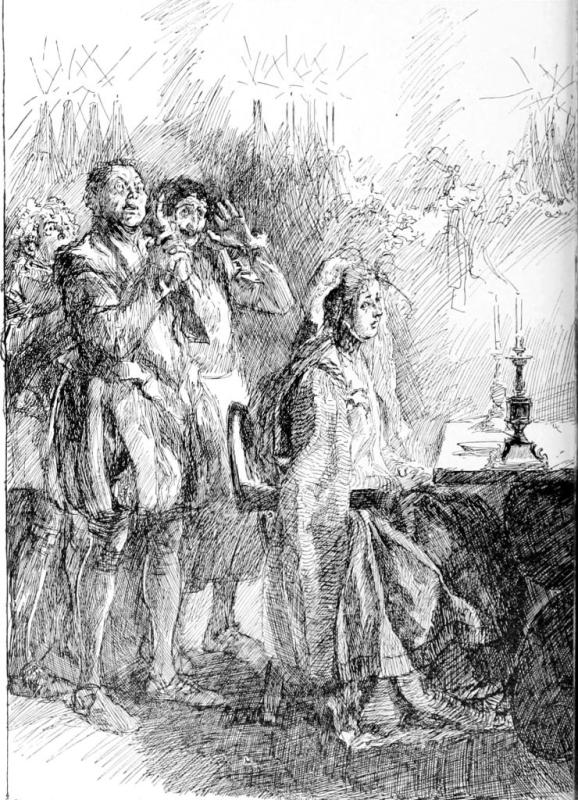 |
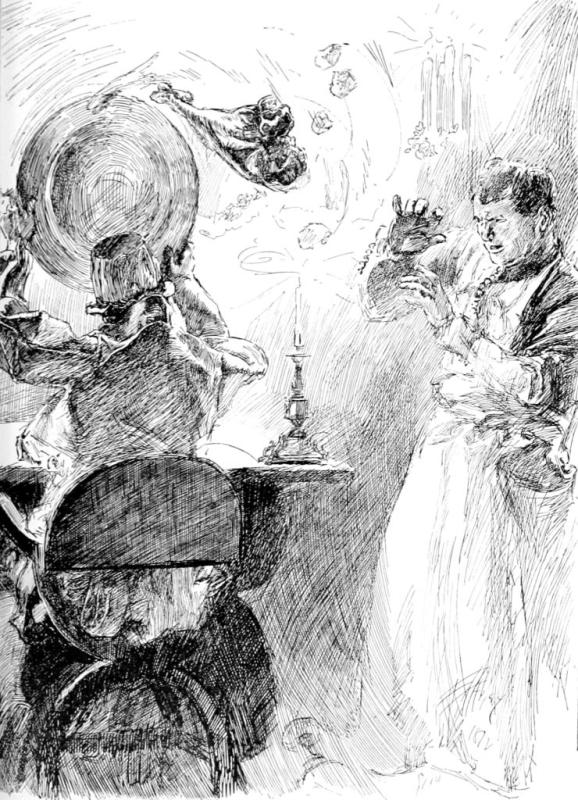 |
| BY E. A. ABBEY. FROM “HARPER’S MAGAZINE” (COPYRIGHT 1894, BY HARPER AND BROTHERS). | |
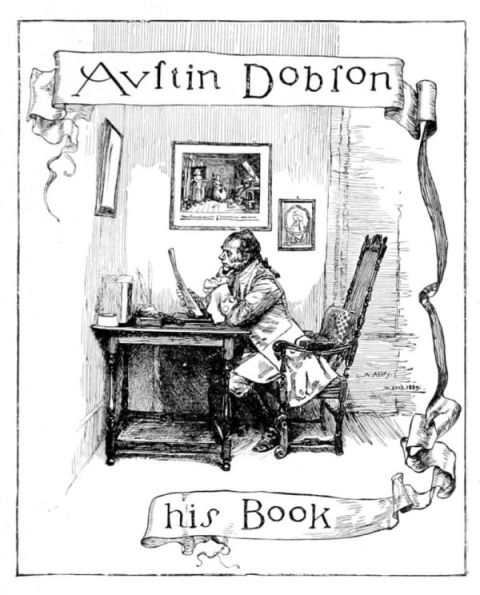 BY E. A. ABBEY. FROM AUSTIN DOBSON’S
POEMS (KEGAN PAUL).
BY E. A. ABBEY. FROM AUSTIN DOBSON’S
POEMS (KEGAN PAUL).
Mr. Howard Pyle has brought all the resources of the past to aid him in the present, and is probably the most intelligent and able student of the fifteenth century living to-day. Yet Mr. Pyle is, when illustrating a modern subject, as entirely modern. He has treated with equal success the England [Pg 125] of Robin Hood, the Germany of the fifteenth century, colonial days in America, children's stories, and the ordinary everyday events which an illustrator is called upon to record. He is deservedly almost as well known as a writer. His principal books are "Otto of the Silver Hand," the "Story of Robin Hood," and "Pepper and Salt."
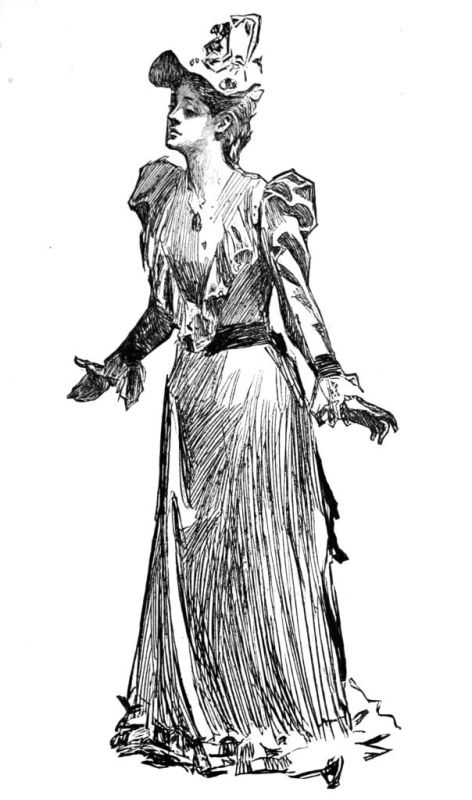
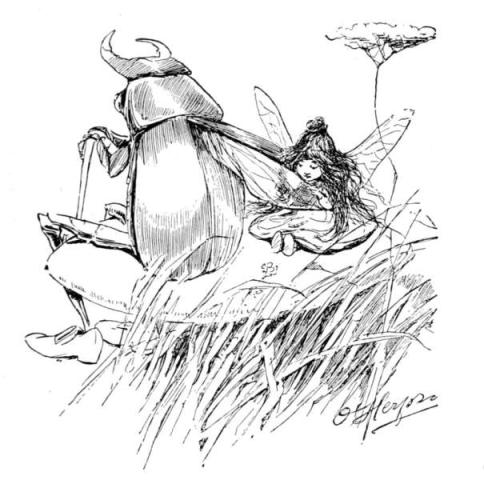
Mr. C. D. Gibson exhibits the follies and graces[Pg 126] of society; it was he who contributed so brilliantly to the success of "Life," the American "Punch." Messrs. Frost, Kemble, Redwood, Remington, show the life of the West and the South; while, as a comic draughtsman, Frost stands at the head of Americans. These men's work will one day be regarded as historical documents. Mr. Remington has given the rapidly vanishing Indian and cowboy, especially in the "Hunting Trips of a Ranchman." Mr. Frost's drawings of the farmer in the Middle States will later be as valuable records as Menzel's "Uniforms of Frederick the Great." Mr. Kemble is not alone in his delineation of darkey life and character. In fact, he has rather worked in a field which was marked out for him by W. L. Shepherd and Gilbert Gaul. W. Hamilton Gibson has treated many beautiful and pleasing aspects of nature, both as writer and illustrator. Blum, Brennan and Lungren transported the Fortuny, Rico, Vierge movement to America, but have now worked out schemes for themselves. Blum has produced more complete work than the others, however, and his illustrations to Sir Edwin Arnold's "Japonica," and his own articles on Japan, have given him a deservedly prominent position. Elihu Vedder, most notably in his edition of Omar Khayyam, Kenyon Cox, and Will Low, who have illustrated Keats and Rossetti, are responsible for much of the decoration and decorative design in the country, and there are many other extremely clever, brilliant and most artistic men whose work can be found almost every month in the magazines. Mr. Childe Hassam has brought Parisian [Pg 127] methods to bear upon the illustration of New York life; and Mr. Reginald Birch's studies of childhood, though frequently German in handling, are altogether delightful in results, his drawings having no doubt added much to the popularity of "Little Lord Fauntleroy;" in the same sort of work P. Newell and Oliver Herford are distinguished. Mrs. Mary Halleck Foote is one of the few who continue to draw upon the wood, and very beautifully she does this; while Mrs. Alice Barber Stephens, and Miss Katharine Pyle prove that there is no earthly reason why women should not be illustrators. Mr. Otto Bacher, Mr. W. H. Drake and Mr. Charles Graham turn the most uninteresting photograph, if they are not doing original work, into a pleasing design; while that phenomenally clever Frenchman, A. Castaigne, who, I believe, now considers himself to be naturalized, gets more movement and dramatic feeling into his drawing than almost anyone else, though he is closely approached in some ways by T. de Thulstrup.
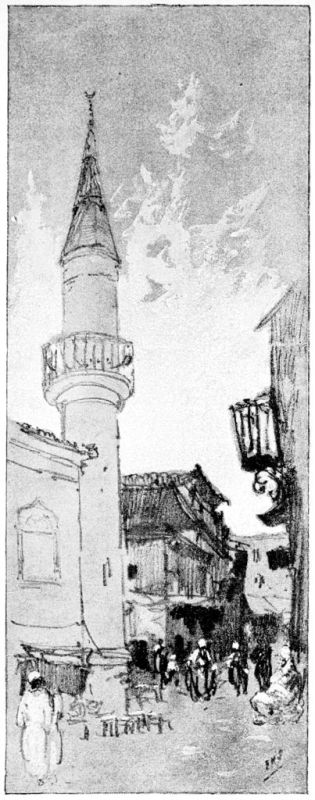
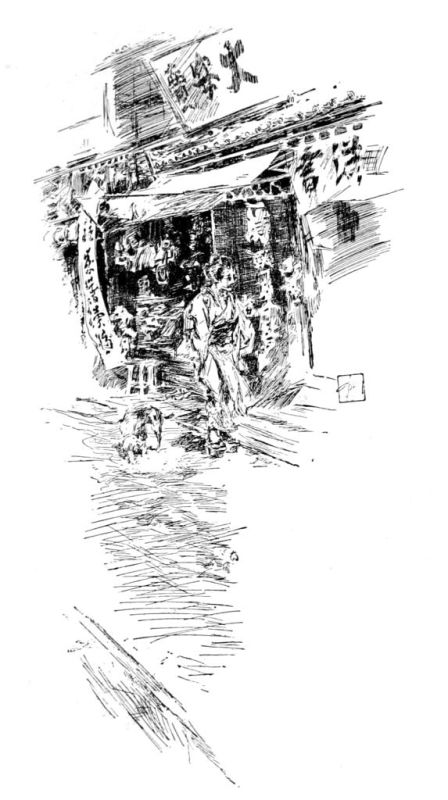
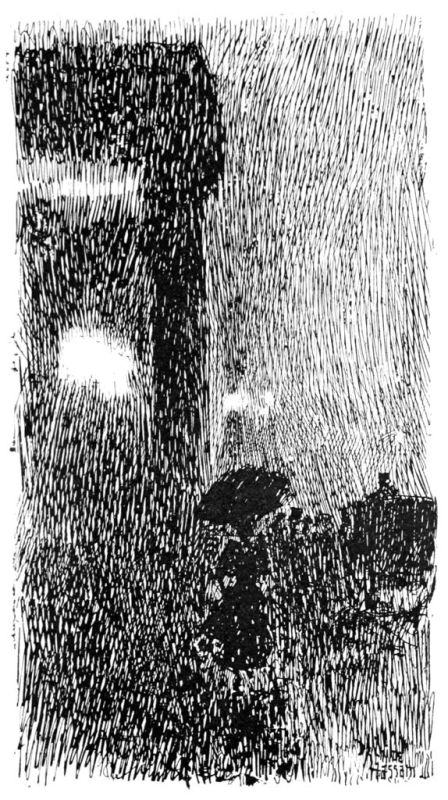 BY CHILDE HASSAM. FROM A PEN DRAWING MADE FOR
THE “NEW YORK COMMERCIAL ADVERTISER.”
BY CHILDE HASSAM. FROM A PEN DRAWING MADE FOR
THE “NEW YORK COMMERCIAL ADVERTISER.”
In some ways Mr. Harry Fenn, Mr. J. D. Woodward, and Mr. Thomas Moran were among the pioneers of American landscape illustration. Mr. Hopkinson Smith, whose work also is frequently seen in the magazines, says that "Harry Fenn's illustrations in 'Picturesque America' entitle him to be called the Nestor of his guild, not only for the delicacy, truth, and refinement of his drawings, but also because of the enormous success attending its publication—the first illustrated publication on so large a scale ever attempted—paving [Pg 128] the way for the illustrated magazine and paper of to-day." In this venture of Appleton's, Mr. Woodward and Mr. Moran had a large share. Among some of the younger men should be noted Mr. Irving Wiles, whose work is as direct and brilliant as, and much more true than, Rossi's; Mr. Metcalf, whose illustrations to Mr. Stevenson's "Wrecker" are most notable; Mr. A. C. Redwood who, with Mr. Rufus Zogbaum, has made [Pg 129] the American soldier his special study. F. S. Church is many-sided both in the mediums he employs and the subjects he selects. J. A. Mitchell has produced in "Life" a society comic paper which is much more human than "Punch." "Puck" and "Judge" are the leading illustrated political weeklies; their conductors are D. Kepler and B. Gillom.
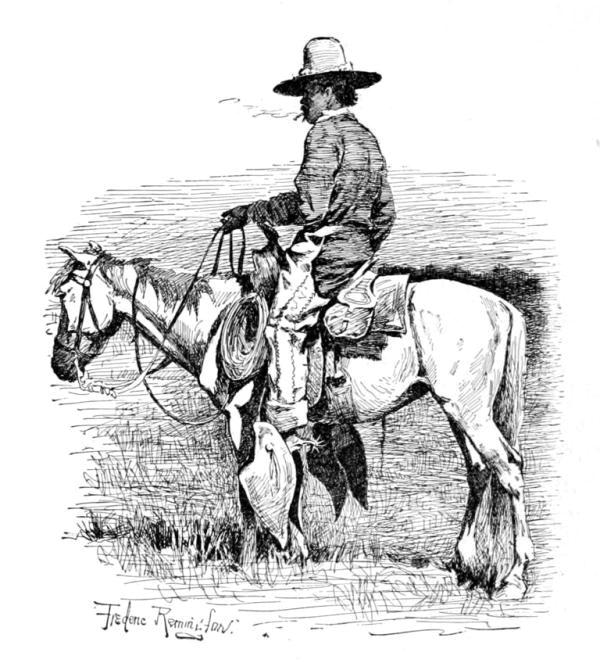 PEN DRAWING BY FREDERIC REMINGTON. FROM
“THE CENTURY MAGAZINE.”
PEN DRAWING BY FREDERIC REMINGTON. FROM
“THE CENTURY MAGAZINE.”
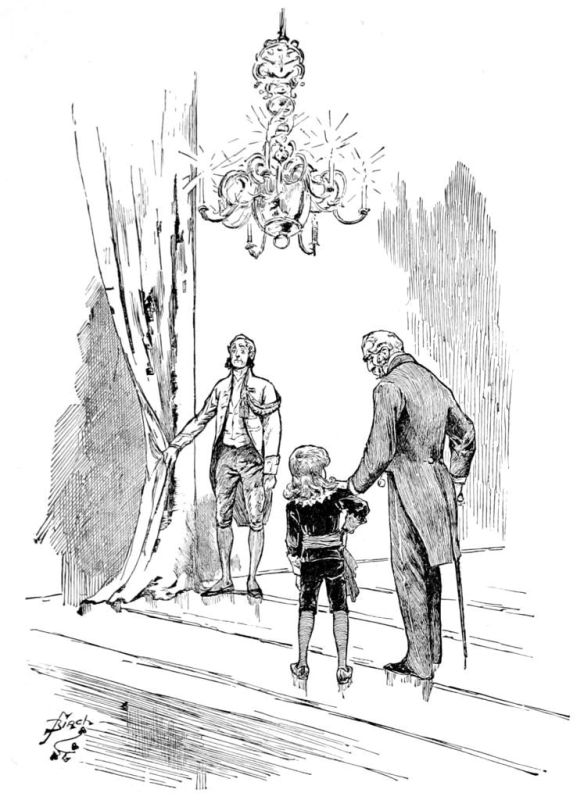
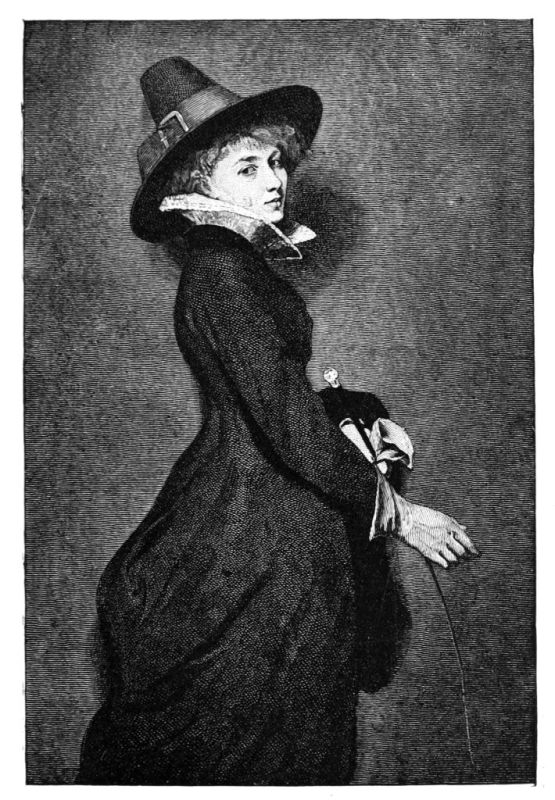 “READY FOR THE RIDE.”
“READY FOR THE RIDE.”
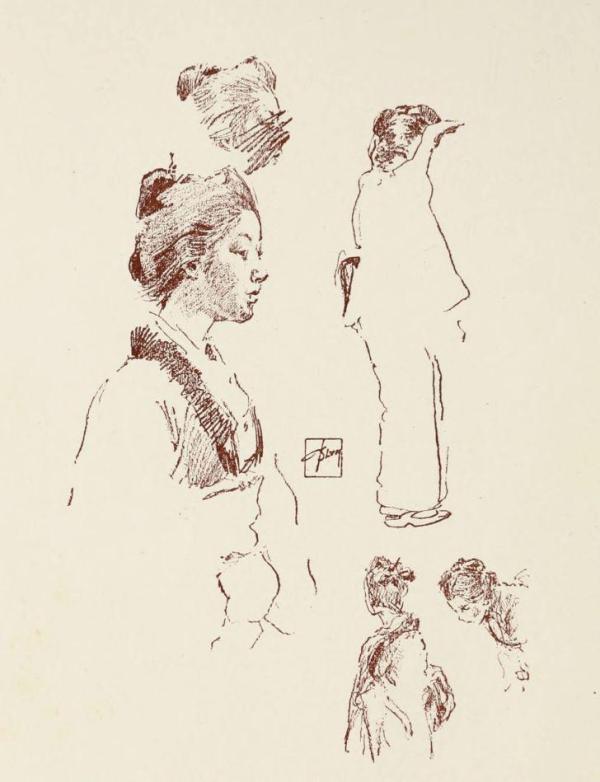
The list of engravers is quite as important. Almost all of those who belong to the American Society of Engravers on Wood are original artists and very well deserving of mention, though their work itself has given them a position which I cannot better. The best known is Timothy Cole, whose engravings from the Old Masters have won him world-wide recognition. He is followed by W. B. Closson, who has to some extent attempted the same sort of work. Messrs. Frank French, Kingsley, and the late Frederick Jüngling have, with surprising success, engraved directly from nature; while for portraits, G. Kruell and T. Johnson are deservedly well known. In fine reproductive work Henry Wolf, H. Davidson, Gamm, Miss C. A. Powell, J. Tinkey, F. S. King, J. P. Davis have shown that wood-engraving is an art which can be used in the hands of a clever man or woman in a hundred ways undreamt of twenty years ago. This list makes no pretension of being complete, for new magazines, new men and new methods are springing up all over the country every few weeks, and a mere list of the illustrators and engravers would make a catalogue as large as this volume.[Pg 130]
There was a period of great activity in American etching a few years ago. Among the most notable results were Cassell's Portfolios of the work of American etchers, edited by Mr. S. R. Koehler. But the art seems now to be languishing. Mr. Frank Duveneck, Mr. Otto Bacher, Mr. Stephen Parrish, Mr. Charles Platt, Mrs. Mary Nimmo Moran did some of the best original work, while, as reproductive men, Peter and Thomas Moran, Stephen Ferris, and J. D. Smillie were most notable. However, this brief spontaneous movement toward individual expression unfortunately seems rather to have spent itself; and America, like so many other countries, is waiting for something new to turn up.
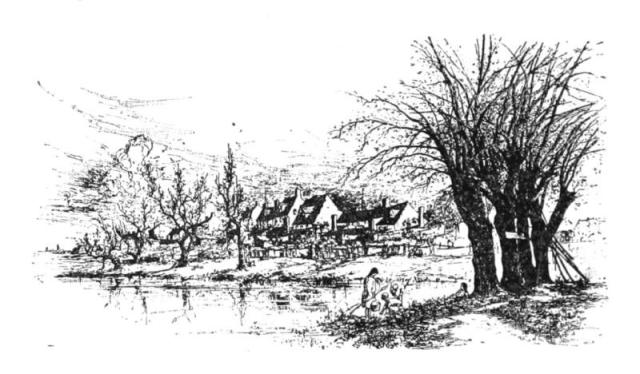 BY S. PARRISH. FROM A DRAWING IN “THE CONTINENT.”
BY S. PARRISH. FROM A DRAWING IN “THE CONTINENT.”
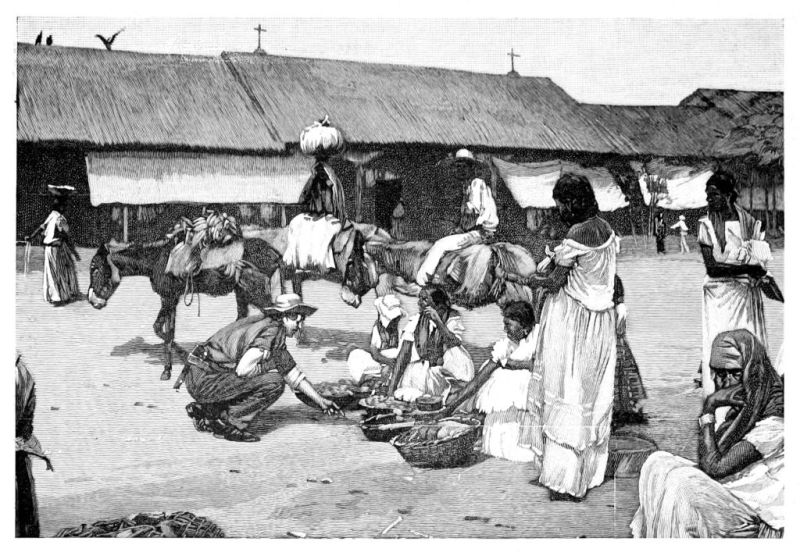 BY GILBERT GAUL. FROM “THE CENTURY MAGAZINE.”
BY GILBERT GAUL. FROM “THE CENTURY MAGAZINE.”
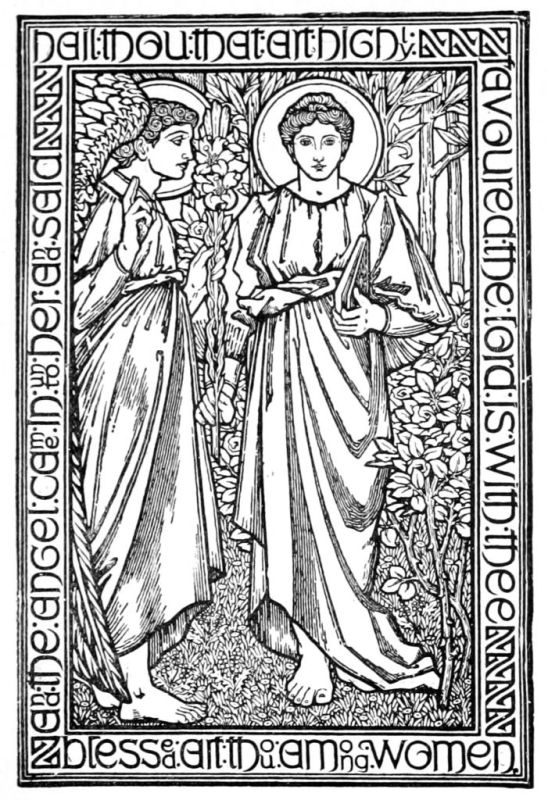
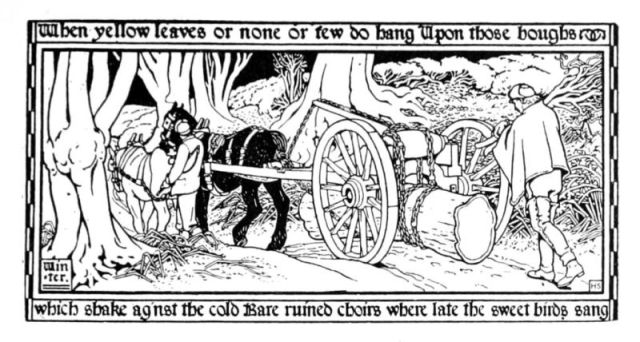
I have tried to show the methods of modern illustration, and to give a sketch of its present conditions. It would be absurd to prophesy its future, though I believe it will have a very brilliant one. Much of the work that is being turned out to-day is beneath contempt; much of it is done by young men who are absolutely uneducated, and an illustrator requires education as much as an author; much of it is done by people who are too careless, or too stupid, to read or to understand the MSS. which they illustrate. Thus, in looking through late numbers of a magazine, I learn that all the policemen in New York wear patent leather shoes; while from another I find that when people are very poor in France, they rock[Pg 132] their babies in log cabin cradles, cook their meals on American stoves and sit upon Chippendale chairs.
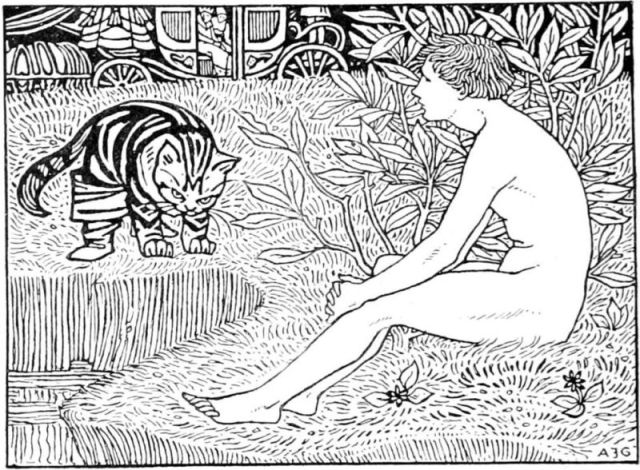
But it is a pleasure to turn from budding geniuses of this sort and photographic hacks; from the gentlemen who copy the imperfections of the woodcut of the Middle Ages; from the people who enlarge the borders of their magazines with decorations that neither belong to our own time, nor are good examples of any other; from those who have succeeded in making a certain portion of the world believe that clumsy eccentricity is a cloak for all the sins in the artistic calendar, to illustrators who are calmly and quietly[Pg 133] pursuing their profession, and producing work which may even drag other portions of the magazine or book, to which they contribute, to an unmerited immortality.
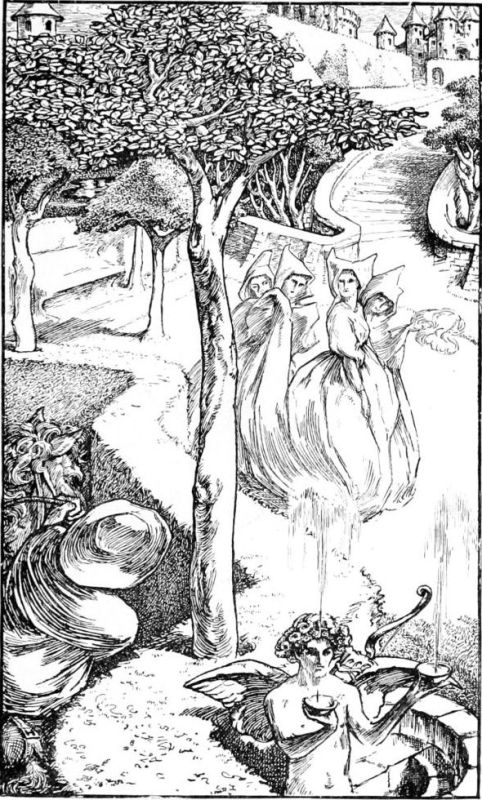
[Pg 134]I do not pretend to foretell what the ultimate form of the book of the future, or of the magazine either, may be. But I do believe that illustration is as important as any other branch of art, will live as long as there is any love for art, long after the claims of the working classes have been forgotten, and the statues of the statesmen, who are the newspaper heroes of to-day, have crumbled into dust, unless preserved because a sculptor of distinction produced them.
Illustration is an important, vital, living branch of the fine arts, and it will flourish for ever.

[1] The Spanish photographer to whom was given the commission by Messrs. Bell to photograph the Goya drawings in the Museum of the Prado, never carried it out. For nearly a year they have been promised manyana, but the to-morrow has not yet dawned.
[2] The "Pall Mall Magazine" has just commenced to index artists and engravers completely.
[3] This is a combination of illumination and printing, the illustrations being original drawings by Dürer. The text is printed; but two or three copies exist.
[4] See "Literary Remains of Albert Dürer," and F. Didot's "Gravure sur Bois."
[5] Some of Ratdolt's are among the exceptions.
[6] The printing is, however, always bad.
[7] So far as I know, the original of that system of abomination.
[8] My own copy, apparently a first edition, is dated 1836.
[9] Charles Whittingham, the founder of the Chiswick Press, who died in 1840, has the credit of being the first printer in England to use overlays, and as an early example might be mentioned, "The Gardens and Menageries of the Zoological Society delineated," published by Tilt in 1830, containing drawings by William Harvey, engraved by Branston and Wright, assisted by other artists.
[10] Rather English and French, Andrew, Best, Leloir.
[11] I am mistaken in this, as many of Pinwell and North's drawings, made on paper in 1865-66 for Dalziel, were photographed on wood.
[12] First edition 1889.
[13] There are two or three seventeenth-century drawings on the wood at South Kensington, and some, I believe, in the British Museum.
[14] On paper.
[15] At least, he was the first man to do important artistic wood-engraving.
[16] In France the credit for the invention is given to Dr. Donné, who, about 1840, discovered that certain acids could be used to bite in the whites or the blacks of a daguerreotype. See also French chapter.
[17] This method, I believe, is no longer used.
[18] Adrian Marie and Emile Bayard died lately.
[19] See note p. 78.
[20] I did not mean I hoped it would die. It has now ceased to appear.
[21] S. Read was the first artist correspondent; he worked during the Crimean War.
[22] I do not mean to say that the American idea of having artists for art editors is unique. Everyone knows the good editorial work that has been done, and is still being done by Mr. Bale, Mr. W. L. Thomas, Mr. Thomson, Mr. Mason Jackson, Mr. L. Raven-Hill, to mention no others.
Abbey, E. A., "Herrick," 123;
"Old Songs" and "Quiet Life," 106, 124;
"She Stoops to Conquer," 124;
"Shakespeare," 124.
"Abbotsford" Waverley Novels, 26.
Ache, Caran d', 66;
"Courses dans l'Antiquité," "Carnet de Chéques," "Albums," etc., 67, 79.
Adams, J. A., 29.
Albrecht, E., 78.
Alexander, Miss, xvii.
Allers, C. W., 78.
Allingham, W., "The Music Master," 88.
Ally Sloper's Half Holiday, 103.
American illustration, xv, 30-32, 113, 130.
American Tract Society, 29.
Amicis, E. de, 70.
Andersen's "Fairy Tales," 108.
Andrew, 25.
Angelico, Fra, 3.
Angerer and Göschl, 72.
Anning Bell, R., 105.
Aquatint, 38.
"Arabian Nights" (Lane), 24;
(Dalziel), 91, 101.
Architectural drawing, 111.
Argosy, The, 90.
"Armée Française, L'," 60.
Armstead, H. H., 90.
Arnold, Sir Edwin, "Japonica," and "Japan," 126.
Art, L', 51.
Art, L', et l'Idée, 56.
Art Student, 35.
Artist-correspondents and their work, 112.
Artiste, L', 18, 22, 60.
Auriol, Georges, 63, 68.
Avril, Paul, "La Dame aux Camélias," 62.
Babbage, F., xxiv.
Bacher, Otto, 127, 130.
Bale, Edwin, 115.
Bambou, Le, 56.
Barnard, Fred., xxiv, 108.
Barnes, R., 108.
Batten, J. D., illustrations to Fairy Tales, 105-106.
Baude, C., 48, 51, 69.
Baxter, W. G., "Ally Sloper," 103.
Bayard, Emile, 65.
Beardsley, Aubrey, 105;
Yellow Book, "Morte d'Arthur," and "Salome," 105.
Bennett, G. H., 89.
Bentworth, 25, 74.
Beraldi, M., xiv.
[Pg 136]
Best, 16, 25.
Bewick, Thos., xiv, xvi, 8;
Walton's "Angler," 9;
Gay's "Fables," 9;
"General History of Quadrupeds," 9;
"British Land and Water Birds," 9;
as engraver-artist, 9, 10;
outcome of his work, 12, 17, 47, 88.
Bibliographers' duties with regard to illustrations, xx.
Bibliographica, xvi, 92.
Birch, Reginald, 127.
Blackburn, H., 81.
Black and White, 108.
Black and White Exhibition, Vienna, 72.
Blair's "The Grave," 9.
Blake, W., 9;
"Songs of Innocence" and "Songs of Experience," 10;
"Book of Job," 10;
Blair's "The Grave," 9;
Mary Wollstonecraft's "Stories," 10.
Blanco y Negro, 79.
Blum, R., "Japonica," "Japan," 126.
Böcklin, A., 76, 77.
Bork, 48, 73.
Botticelli, 3;
designs for Dante, 3.
Boydell's "Shakespeare," 12.
"Bracebridge Hall," 86.
Bradbury and Evans, 89.
Bradley, W. H., 124.
Branston, C., 12, 21.
Braun, 18.
Braun and Schneider, 76.
Brend'amour, Richard, 76.
Brennan, A., 126.
Brévière, 16, 18.
British Museum, xv, xix, xx, 36.
British Workman, 96.
Brown, Ford Madox, 95.
"Brown, Jones, and Robinson," 84.
Browne, H. K. ("Phiz"), 89.
Bruant's "Dans la Rue," 68.
Buchanan's "The North Coast," 94.
Burckhardt, "Insects Injurious to Vegetation," 31.
Burges, W., 111.
Burne-Jones, Sir E., xvi;
In Daily Chronicle, xxiii, 95, 98.
Busch, W., 77.
Butler's "Hudibras," 19, 20.
Butterfly, The, 105.
Calcott, W., 24.
Caldecott, Randolph, illustration from "Old Christmas," 33, 84, 86;
Books for Children, 86.
Callot, 80.
Cameron, D. Y., 111.
Canaletto, 7.
"Caprices" (Goya), 80.
Capuana, Luigi, 71.
Caracci's "Christ and Peter," 10.
Caricature, La, 22.
Caricature, Political, 102, 103;
Ally Sloper's Half Holiday, 103.
"Carnet de Chéques," 67.
"Carols" (Gaskin, A. J.), 108.
Carpaccio, 2.
Carroll's "Alice in Wonderland," 102.
Casanova y Estorach, A., 71.
Castaigne, A., 127.
"Catalogue of Blue and White Nankin Porcelain," 95.
Century Magazine, xix, 34, 40, 114, 116.
"Cera una Volta," 71.
Cervante's "Don Quixote," 21.
Champfleury's "Vignettes Romantiques," xviii.
Chapman, J. G., drawings for the "Illuminated Bible," 29.
Charlet, 17, 60.
"Chaumière Indienne," 20.
Chelminski, 73.
Chéret, 68.
[Pg 137]
Chiaroscuro, engraving in, 48.
Chiswick Press, 21.
Chodowiecki, 7.
Christopher, St., 6, 34, 36.
Church, F. S., 129.
Cleaver, Reginald, 106.
Clennell, Luke, 11, 12.
Clichés, early use of, 7.
Closson, W. B., 129.
Cole, Timothy, 47, 48, 108, 129.
Colvin, Prof. S., xv.
Conquet, 63.
"Contes Remois," 24.
Cooper, A. W., illustration to Walton's "Angler," 32.
Cooper, J. D., xxiv.
Corbould, A., 21.
Cornhill, The, 28, 84, 89;
"Gallery," 94.
Cotman, F. G., 38, 111.
"Coups de Fusil," 60.
Courboin, E., 66.
Courrier Français, Le, 51.
"Courses dans l'Antiquité," 67.
Cox, Kenyon, 126.
Crane, Walter, 28;
"King Luckyboy's Party," "The Baby's Opera," "Baby's Bouquet," 86, 99.
Crowther, T. S., 104.
Cruikshank, George, "Three Courses and a Dessert," 22-24, 83, 88.
Curmer, L., "Paul et Virginie," 20.
Cust, Lionel, xv.
Daheim, 78.
Daily Chronicle, xvii, xxi, xxiii.
Daily Graphic, 117.
Dalziel Brothers, 28, 35;
"Bible Gallery," 35, 95, 88, 90, 91;
"Arabian Nights' Entertainments," 91-93;
"Wayside Posies" and Ingelow's "Poems," 94;
"English Rustic Pictures," 95, 109.
Dalziel, E., 93.
"Daphnis and Chloe," 105.
Darley, F. O. C., 28.
Dasio, Max, 77.
Daubigny, 17.
Daumier, 17;
La Caricature, 22, 38, 60.
Davidson, H., 129.
Davis, J. P., 129.
Davison, T. R., 111.
Defoe's "Plague," 101.
Delacroix, 23, 80.
De Neuville, A., 51, 60;
"Coups de Fusil," 60;
Guizot's "History of France," 60;
"En Campagne," 60.
"Dentatus, The," 49.
Dentu's Le Bambou, 56;
"Tartarin de Tarascon," 61.
Derniame, Aristide, 20.
Detaille, E., 51;
"L'Armée Française," 60.
Dial, The, 105.
Dickens, C., 83.
Didot, F., "Gravure sur Bois," 5.
Dietz, W., 25, 75.
"Dinner at Greenwich," 84.
Dobson, Austin, xiv, xviii, 81, 84;
"Beau Brocade," 106.
Dœpler, C. E., 29.
Donné, Dr., 40.
Doré, G., 31, 32, 51, 58;
characterization of his work, 58-60, 63, 93.
Doyle, R., 83;
"Brown, Jones, and Robinson," 84, 89.
Drake, A. W., 114, 115, 127.
Du Maurier, G., 28, 39, 84, 101, 103.
Durand, 108.
Durand, Amand, photogravure process of, 44.
Dürer, A., xxii, 3;
illustrations to "Maximilian's Missal," 3;
decorative designs, 4;
his criticism on his wood-engravers, 5;
an Apollo drawing, 36.
[Pg 138]
Duveneck, Frank, 130.
Dys, Habert, 65.
Echo de Paris, L', 54.
Eckhardt, Oscar, 104.
Edelfelt, A., 73.
Edwards, G. W., 124.
Elgin Marbles, xxii.
Elsevir, 71.
"En Campagne," 60.
"English Rustic Pictures," 95.
"Enterrement de Province," 69.
Estampe Originale, L', 69.
Etching, 111;
American, 130;
Cassell's "Portfolios," 130.
Evans, Edmund, xxiv, 87, 109.
Everal et Cie., 21.
"Examples of Venetian Architecture," 85.
Ex-Libris Series, Editor, xiii, xiv.
Fau, F., 61.
Felz und Meer, 78.
Fenn, Harry, "Picturesque Europe and America," 31, 127.
Fernandez, G., 79.
Ferris, Stephen, 130.
Figaro, Le, 54.
Fildes, Luke, xxiv, 86.
Fliegende Blätter, xvii, 25, 75-78.
Florian, 48, 51, 57, 69.
"Fontaine, La," 8.
Foote, Mrs. Mary H., 127.
Forain, J. L., 66;
Album, 68.
Ford, H. J., 106.
Forget-me-Not, 13, 34.
Forrestier, A., 108.
Fortuny, M., 50, 71, 79, 126.
Foster, Birket, xv, xxiv, 26-29, 84;
"Pictures of English Landscape," 91;
"Odes and Sonnets," 91, 103.
"François le Champi," 62.
Fraser, Lewis, 114, 115.
Fredericks, Alfred, 30.
"Frederick the Great's Works," 74.
French, Frank, 129.
Frost, A. B., 126.
Furniss, Harry, 102.
Galice, L., 61.
Gamm, 48, 129.
Gardner, W. Biscombe, 48, 109.
Gaskin, A. J., 108.
Gaul, Gilbert, 126.
Gautier, T., 80.
Gavarni, 17;
Gazette des Enfants, lithographs in, 22, 38, 57, 60, 79.
Gazette des Enfants, 22.
Gazette des Beaux-Arts, La, 51.
Gere, C. M., The Quest, 108.
Giacomelli, 65.
Gibson, C. D., 125, 126.
Gibson, W. Hamilton, 126.
Gigoux, Jean, 17;
Gil Blas, 19.
Gilbert, Sir John, 26;
Work for American Tract Society, 29, 84;
edition of Shakespeare, 89, 103.
Gil Blas, 54.
Gillom, B., 129.
Gillot, C., engraver, 40.
Gillotage, the process, 51.
Gillray, 84.
Goldsmith's "Vicar of Wakefield," 21, 61, 93;
"She Stoops to Conquer," 124.
Good Words, 28, 84, 88, 90, 91.
Gosse, Edmund, xvi.
Gould, F. C., 102.
Goupil, 55;
Les Lettres et les Arts, 56.
Gourget, A. F., 61.
Goya, F., xiv, 8, 20, 79, 80;
"Caprices," 80;
"Invasion," 80;
Bull-fights, 80.
Graham, Charles, 90, 127.
Graphic, 18, 34, 40, 65, 85, 92, 94, 96, 108.
Graphischen Kunste Die, 78.
Grasset, E., 63, 68.
[Pg 139]
Gray's, "Elegy," 24.
Green, Charles, xxiv, 86, 101.
Green, W. T., xxiv.
Greenaway, Kate, 86;
Children's Books, 87.
Gregory, E. J., 86.
Greiffenhagen, Maurice, 104.
Greiner, Otto, 77.
Greuze, 7.
Griset, Ernest, "Grotesques," xxiv, 87.
"Gulliver's Travels," 93.
Guillaume, process and publisher, 56, 66.
"Guillaume" Series, 51, 62.
Guizot's "History of France," 60.
Hackländer, F., 78.
Haennen, T. von, 65.
"Half-tone" process, 40.
Halkett, G. R., 102.
Hall, S. P., 86, 101, 112.
Hallward, Reginald, 108.
Hamerton, P. G., 81.
Harburger, 77.
Harding, J. D., 38, 110, 111.
Hardy, Thos., "Tess of the D'Urbervilles," 101.
Harper, C. G., 81.
Harper's "Illuminated Bible," 29.
Harper's Magazine, xix, 29, 116.
Harral, H., xxiii.
Harris's "Insects Injurious to Vegetation," 30, 31.
Hartrick, A. S., 104.
Harvey, William, xxiv, 12;
Milton's "Poetical Works," 15, 16, 17, 18;
"Gardens, etc., of Zoological Society," 21, 24;
"Elegy" (Gray), 24;
"Arabian Nights," 24;
"Solace of Song," 24;
"Dentatus," 49, 88, 89.
Hassam, F. Childe, 126, 127.
Hatherell, W. H., 105.
Haug, Robert, 75.
Haydon's "Dentatus," 49.
Hendriksen, 48, 73.
Hengler, 77.
Henley, W. E., xvi.
Hennessy, W. J., xvi.
"Herbals," The, 37.
Herford, Oliver, 127.
Herkomer, Prof. H., 86;
Hardy's "Tess," 101.
"Histoire de Mobilier," 51.
"Histoire du Roi de Bohème," 18.
"Historical and Legendary Ballads," 94, 95, 102.
Hobby Horse, The, 108.
Hogarth, W., 7.
Holbein, Hans, 4, 7;
"Dance of Death," 34, 36.
Hole, W., 72, 111.
Holl, F., 86.
Homer, Winslow, 29.
Hooper, W. H., xvi, 28, 48, 109.
Horne, Herbert, 108.
Horsley, G. C., 111.
Houghton, A. Boyd, xvi, 27, 84, 86, 88, 90;
"Arabian Nights," 92;
Housman on his work, 92;
"Home Thoughts and Home Scenes," 92;
"Don Quixote," 92;
"Kuloff's Fables," 92;
Graphic drawings, 92;
"National Nursery Rhymes," 93;
"The North Coast," 94, 95, 101.
Housman, Laurence, xvi, 92;
"Goblin Market," 106.
Huertas, 79.
Huet, Paul, 17, 20.
Hughes, Arthur, illustrations to Christina Rossetti's "Sing Song," xxiv, 88, 96;
"Tom Brown's School-days," 96.
Hugo's, V., works, "Edition Nationale," 64.
Hunt, Holman, "Lady of Shalott," 88, 90.
"Hypnerotomachia," 4.
Ibels, 66.
Icke, H. J., 72.
[Pg 140]
Illumination, 3.
Illustracion Artistica, 71.
Illustracion Española y Americana, 71.
Illustrated London News, 27, 108.
Illustration, L', 51, 65.
Illustration, definition of, 1;
compared to art, 1, 2;
the old illustrator, 2;
the court painters, 2;
the subject and landscape painters, 2;
illumination of MSS., 3;
French illustration, 24;
modern development in, 33;
application of photography to, 34;
increase in its popularity, 34;
production of before the introduction of photography, 36;
French, 50-57;
decline of French work, 52;
decay due to publishers, 54;
Spanish, 71;
Dutch, 71, 72;
Belgian, Austrian, and Hungarian, 72;
Russian and Scandinavian, 73;
Danish, 73, 74;
German, 74, 75;
English, 82, 84;
revival in England, 96;
editors' bad judgments on, 97;
their bad influence, 97;
their ignorance, 90, 99;
evils of modern reproductions, 99;
ignorance of printers, 100;
modern copies of obsolete fads, 100;
colour printing, 109;
American, 113, 130;
reasons for American advance in, 116;
daily papers, 117;
future of modern, 131-134.
Illustrazion Italiana, L', 71.
Illustrirte Zeitung, 75.
Image, Selwyn, 108.
Indexing of artists' works, xix, xx.
Ingelow, Jean, "Poems," 94.
"International Society of Wood Engravers," 109.
Isabey, E., 17, 20.
Ispen, L. S., 124.
Ives' method of engraving, 40.
Jackson, Mason, "The Pictorial Press," xviii, 32, 115.
Jacobi, C. T., xvi.
Jacque, C., 17, 20;
"Vicar of Wakefield," 21.
Jacquemart, Jules, 51.
Jeanniot, P. G., 60.
Job, 66.
Johannot, Tony, 25.
Johannots, the Brothers, 17, 18.
Johnson, T., 129.
Johnstone, J. M., xxiv.
Judge, 129.
Jüngling, Frederick, 48, 129.
Kaulbach, 76.
Keene, C., 28, 38, 39, 84, 89, 90, 104.
Keepsake, 13, 34.
Kepler, F., 129.
King, F. S., 129.
Kingsley's "Water Babies," 102.
Kingsley, Elbridge, 47, 48, 129.
Klinger, Max, 76;
his method, 77;
his "Apuleius," 77.
Knight, Charles, 24.
Koehler, S. R., 130.
Konewka, Paul, 76;
"Faust," 76.
Kreull, G., 48, 129.
Kreitzschmar, 25.
Kunst für Alle, 78.
Lacour, O., xxiv.
La Farge, John, 29.
Lalauze, A., 64.
Lameyer, 79.
Lami, E., 23.
Landseer, Sir E., 24.
Lang, A., "The Library," xviii, 81;
"Fairy Books," 106.
Langton, first use of photography for book illustration, 34.
[Pg 141]
Lanterne, La, 54.
Lathrop's "Spanish Vistas," 124.
Laurens, Jean Paul, 61.
Lautrec, H. T., 68.
La Vie Moderne, 51.
Lavoignat, 15, 17, 21, 24.
Lawless, M. J., 89.
Leech, John, 83, 84, 88, 89.
"Legend of the Portent," 89.
Legrand, L., 66.
Lehers, Max, 77.
Leighton, Brothers, 109.
Leighton, Sir F., 28, 89;
Cornhill "Gallery," 94, 95.
Leloir, M., 25, 61.
Lemaire, Mme., 62.
Lepère, A., 18, 47, 51, 69.
Le Sage's "Diable Boiteux," 21.
Les Lettres et les Arts, 56.
Leveille, 16, 24, 51.
Lhermitte, L., "La Vie Rustique," 61.
"Liber Studiorum," 27.
Lidia, La, 79.
Life, 126, 129.
Linnells, The, 10, 11;
"The National Gallery," 14.
Linton's "Engraving," xviii;
on engraver and artist, 24, 28, 48, 86, 109.
Lithography, 38;
work by Prout, Harding, Roberts, Nash, 38;
revival in, 109;
Vanity Fair and chromo-lithography, 109;
photo-lithography, 109.
Low, Will. H., 126.
Lucena, Jiminez, 79.
Luders, Hermann, 75.
Lunel, F., 61.
Lungren, F., 126.
Lynch, Albert, "La Dame aux Camélias," 62.
Macbeth, R. W., 72, 111.
"Madame Chrysanthème," 62.
Magazin Pittoresque, 21.
Mahoney, T., "Scrambles amongst the Alps," 94, 101.
Mallows, C. E., 111.
Marchetti, 64.
Marie, Adrian, 65.
Marold, L., 57, 72, 78.
Mars, 66, 68.
May, Phil, 104;
"The Parson and the Painter," 104.
Meadows, Kenny, 88.
Meggendorfer, 77.
Meisenbach process, 40.
Meissonier, J. L. E., 8, 17, 20;
"Deux Joueurs," 21;
"Contes Remois," 24, 25, 50, 57, 60, 73, 74, 79.
Menzel, Adolph, xx, 8, 24;
comparison with Bewick, 25;
"Life of Frederick the Great," 25;
"Paul et Virginie," 25, 73, 74;
his genius and work, 74, 75, 76, 88, 126.
Merson, Luc Ollivier, 64.
Metal, engraving on, 37.
Metcalfe, W. L., Stevenson's "The Wreckers," 128.
Métivet, L., 65.
Millais, Sir J. E., 28;
"St. Agnes' Eve," 88, 89;
"Parables," 90-92;
Cornhill "Gallery," 94;
Strahan's "Portfolio," 94.
Millar, H. R., 104.
Mitchell, G. C., 111.
Mitchell, J. A., Life, 129.
"Modern Painters," 85.
Monde Illustré, Le, 51.
Monnier, H., 17, 23.
Montalti, "Cera una Volta," 71.
Montbard, A., 108.
Monvel, Boutet de, 66.
Moran, Mrs. Mary Nimmo, 130.
Moran, Thomas and Peter, 30, 127, 128, 130.
Morin, Louis, 63.
Morris, William, xvi, 108.
[Pg 142]
Morton, T., "Gulliver's Travels," 93.
Moxon's "Tennyson," 28, 88;
Macmillan's re-issue, 101.
Muckley, L. F., The Quest, 108.
Mulready, W., 24.
Murray, C. O., 111.
Myrbach, 54, 62, 72.
Nash, 38.
Nast, Thomas, 30.
Nesbit, 12.
Neue Lithographem, 77.
New, E. H., 108.
Newell, P., 127.
Newspapers, illustrated, 116, 117.
New York Daily Graphic, 117.
Niepce, 40.
North, J. W., 35, 93;
"Wayside Posies" and Ingelow's "Poems," 94.
Novello's "National Nursery Rhymes," 93.
Oberländer, 77.
"Odes and Sonnets," 91.
"Old Christmas," 86.
"Old Songs," 106.
"Omar Khayyam," 126.
Once a Week, xix, 28, 84, 88-90.
Orrinsmith, H., xvi, 12, 57.
Overbeck, 76.
Overend, W. H., 108.
Overlays used by Bewick, xvi, 20, 21.
"Pablo de Ségovie," 51, 54, 61.
Paget, Wal, 105.
"Palace of Art, The," 88.
Pall Mall Gazette, 117.
Pall Mall Magazine, xix.
Palmer, Samuel, xxiv.
Pannemaker, 32, 69.
Papier Gillot, 71.
Paris Illustré, 51.
Parrish, Stephen, 130.
Parsons, Alfred, 106;
"Old Songs," "A Quiet Life," "Wordsworth's Sonnets," and "The Warwickshire Avon," 106, 124.
Parsons, Charles, 114.
Partridge, J. Bernard, 106.
Paterson, R., xxiv.
Paul, Rowland, 111.
Pegram, F., 104.
"Pen Drawing and Pen Draughtsmen," 35.
Penny Magazine, 24.
Perea, D., 79.
Perugini, Carlo, 109.
Perugino's "The Holy Family," 10.
Petit Journal, Le, 54.
Pettie, J., 90.
"Phiz" (H. K. Browne), 83.
Photography applied to book illustration, 34;
Art Student, 1865, 35;
fairly general in 1870, 36;
photographing of drawings in line upon a metal plate or gelatine film, 40;
"half-tone" process, 40;
Meisenbach process, 40;
Ives' method, 40.
Piaud, 17.
Pickering's "Alphabet," 19.
"Pictures of English Landscape," 91.
"Pictures in Words," 91.
"Picturesque America," 31, 127.
"Picturesque Europe," 31.
Pille, Henri, 61.
Pinturicchio, 3.
Pinwell, G. J., 27, 35, 39, 86, 88, 90, 92;
"Goldsmith's Works," 93;
"Wayside Posies" and Ingelow's "Poems," 94;
"English Rustic Pictures," 95.
Piranesi, 7.
Pisan, 17.
[Pg 143]
Pissarro, L., 105.
Pite, A. B., 111.
Plantin Museum, 36.
Platt, Charles A., 130.
"Poets of the Nineteenth Century," xxiv.
Poirret, 17.
Poirson, V. A., 61.
Pollard, A. W., xv.
Pons, Angel, 79.
Powell, Miss C. A., 129.
Poynter, E. J., 95.
Prado, The, 80.
Pranishnikoff, 73.
Premières Illustrées, Les, 61.
Pre-Raphaelites, xxii, 76, 88, 98.
Prior, Melton, 112.
"Process," art of, 41;
Meisenbach, 40;
comparison with wood-engraving, 41-43;
method of, 42;
application of photography, 42;
for "line" work, 42;
use of swelled gelatine, 42;
photogravure of Amand Durand, 44;
black-and-white drawings reproduced in, 44;
wash reproductions by, 44;
advantages of, over engraving, 45;
flat washes, 45;
objections to, 45;
object of, 46;
not a "mechanical makeshift," 46;
answers to criticisms on, 46;
bound to supersede wood-engraving, 48;
Gillotage, 51;
Guillaume half-tone process, 62;
bad process work, 96.
Proctor, J., 102.
Prout, S., 38, 110, 111.
Puck, 129.
Punch, 27, 106, 129.
Pyle, Howard, 124, 125.
Pyle, Miss Katharine, 127.
"Quatre fils d'Aymon," 63.
Quest, The, 108.
"Quiet Life," 106.
Quotidien Illustré, 117.
Raffaëlli, J. F., 65.
Raffet, 17, 60.
Railton, Herbert, 105.
Rainey, W., 108.
Ramos, F. Garcia y, "La Tierra di Maria Santissima," 79.
Ratdolt, E., 5.
Raven-Hill, L., 104, 115.
Read, S., 88, 112.
Redwood, A. C., 126, 128.
Reed, E. T., 106.
Régamey, Felix, 65.
Reid, Sir George, 106;
"Johnny Gibb," "The River Tweed and the River Clyde," 107.
Reinecke, René, 78.
Reinhart, G. S., "Spanish Vistas," 124.
Rembrandt, 2, 3;
Etchings of, 4, 88.
Remington, F., "Hunting Trips of a Ranchman," 126.
Renouard, Paul, 65.
Répine, 73.
Retzche's "Shakespeare," 76.
Revue Illustré, La, 51.
Ricketts, Charles, 105;
"Daphnis and Chloe," 105.
Rico, 50, 71, 79, 126.
Riou, 65.
Roberts, C., xxiii.
Roberts, D., 38.
Robida, "Rabelais," 63.
Rochegrosse, G., 61.
Roehle, 18.
Rogers' "Italy," 38;
"Poems," 11, 12, 18.
Rops, Félicien, 63.
Rossetti, C., "Goblin Market," 106.
Rossetti, D. G., xvii, 27, 35, 85;
"The Palace of Art," "Sir Galahad," 88, 98;
his influence and motives, 98.
Rossi, 54, 62, 128.
[Pg 144]
Rowlandson, 84.
Rubens, sketches for title-pages, 4, 11.
Ruskin, J., 28, 85, 93.
Russell, W. W., 104.
Ryland, Henry, 108.
Sala, G. A., 89.
Sambourne, Linley, 101;
"Water Babies," 102;
Punch work, 102.
Sandys, Frederick, xv, 27;
"Amor Mundi," 35, 39, 84, 88-90;
Cornhill "Gallery," 94;
"Legendary Ballads," 95, 101, 108.
Savage, Reginald, 105.
Schlittgen, H., 78.
Schwæbe, C., 63, 77.
"Scrambles amongst the Alps," 94, 101.
Scribner's Magazine, 116.
Séon, 64.
Seymour, G. L., 105.
Shannon, C. H., 105;
"Daphnis and Chloe," 105.
Shepherd, W. L., 30, 126.
Shields, Frederick, xvi, 39, 84;
Defoe's "Plague," 101.
Shilling Magazine, 28, 35, 84, 88, 90.
Short, Frank, 72, 111.
Simpson, William, 112.
Singer, Dr. Hans, xv.
Small, W., 27, 101, 103.
Smedley, W. T., "Sketches of American Watering-places," 124.
Smeeton, 18.
Smillie, J. D., 130.
Smith, F. Hopkinson, 127.
"Sociétés Anonymes," 54.
"Solace of Song," 24.
Solomon, S., 95.
Sourel, "Insects Injurious to Vegetation," 31.
South Kensington Museum, xv, xix, xx, 36.
"Spanish Scenes," 79.
Spectator, xviii.
Speed, Lancelot, 106.
Spielmeyer, W., xxiv.
"Spy," 109.
St. Stephen's Review, 104.
Stacey, W. S., 108.
Stainforth, M., xxiv.
Staniland, C. J., 108.
Stationers' Hall, Exhibition of Wood-Engravings, March, 1895, xxiii.
Steinhausen, W., 77.
Steinlen, 57, 66;
Bruant's "Dans la Rue," 68.
Stephens, Mrs. Alice B., 127.
Sterne's "Sentimental Journey," 61.
Stevenson's "The Wreckers," 128.
"Stones of Venice," 85.
Stothard, T., 9, 10;
"The Pilgrim's Progress," 11;
Richardson's "Novels," 11;
Rogers' "Poems," 11-13, 18;
"Alphabet," 19, 24.
Strahan, A., xvi.
Strang, William, 111.
Strange, E. F., xv.
Stroebel, 78.
Stück, Franz, 77.
Sullivan, E. J., 104.
Sullivan, J. F., 102.
Sumner, Heywood, 108.
Sunday Magazine, 90.
Supplement Littéraire et Artistique, 54.
Swain, J., 28, 35, 90, 109.
"Tartarin de Tarascon," 52, 61.
Taylor, Tom, 83;
"Pictures in Words," 91.
Tegner, Hans, 73;
drawings for Holberg's "Comedies," 73.
[Pg 145]
Tenniel, Sir J., 28, 89, 92;
"Alice in Wonderland," "Legendary Ballads," 102.
Thackeray, W. M., 12, 83, 89;
"Roundabout Papers," 90.
Thoma, H., 77.
Thomas, G. H., xxiv.
Thomas, W. L., 115.
Thompson, Charles, 14, 15, 16.
Thompson, John, Hogarth's Works, 13.
Thompsons, the, 12;
Cruikshank's Work, 24.
Thomson, D. C., 115.
Thomson, Hugh, 105.
Thulstrup, T. de, 127.
Thurston's Butler's "Hudibras," 19, 20;
"Tasso," 21, 24.
Tilt's, "Gardens and Menageries of the Zoological Society Delineated," 21.
Tinkey, J., 129.
"Tierra di Maria Santissima, La," 79.
Titian's "Ariadne and Bacchus," 14.
Tofani, 64.
"Tom Brown's School-days," 96.
Toudouze, Edouard, 62.
Townsend, Horace, xvi.
Trevès, Fratelli, 70.
Tristram's "Coaching Days and Coaching Ways," 105.
Ueber Land und Meer, 75.
Unger, J. F. G., 75.
Unzelmann, 25, 74.
Uzanne, Octave, 56, 62.
Valloton, F., 69;
"Enterrement en Province," 69.
Vanity Fair, 109.
Vebers, the, 64.
Vedder, Elihu, "Omar Khayyam," 126.
Velasquez, portraits of, 2, 80.
Veronese, 2, 3.
Vierge, Daniel, 19, 51, 54, 61, 71, 79, 80, 126.
"Vie Rustique, La," 61.
Villiers, F., 112.
Vinne, Theodore de, 120.
Vizetelly, H., 27.
Vogels, the, 25, 72, 74, 78.
Walker, Emery, xvi.
Walker, Fred., 27, 39, 88;
"Adventures of Philip," 90, 93;
Cornhill "Gallery," 94;
"English Rustic Pictures," 95.
War Correspondents and their work, 112.
"Warwickshire Avon," 106.
Watson, C. J., 111.
Watson, J. D., 92.
Watteau, 7.
Way, Messrs., 109.
"Wayside Posies," 94.
Weir, Harrison, xv, xxiv, 26, 30, 31, 103.
Whall, Christopher, 108.
Whistler, J. M. N., xxii;
in Daily Chronicle, xxiii, 84, 93;
"Legendary Ballads," 95;
"Catalogue of Blue and White Nankin Porcelain," 95, 101.
White, Gleeson, xiv.
Whittingham, C., 21.
Whymper, 90;
"Scrambles amongst the Alps," 94, 101.
Wiles, Irving R., 128.
Wilkie, Sir David, 24.
Willette, A., 66, 68.
Williamses, the, 12, 15, 24.
Wilmot's, "Sacred Poetry," xxiv.
Wilson, Edgar, 104.
Wilson, Richard, 11.
Wilson, T. Walter, 108.
Wood-engraving, xvi;
early English, 12-14;
French prize for, 14;
rise of in France, 16;
[Pg 146]Bewick's influence, 12, 17;
disappearance of, 37;
methods of wood-engraving shops, 38;
bad influence on the artists, 39;
disappearance of the "wood-choppers" again, 39;
replaced by photography, 40;
progression of the art of, 41;
advantages claimed for, 41;
comparison to "process" work, 41-43;
real duties of the engraver, 47;
three great periods, 47;
Japanese wood-cutting, 48;
no danger in the hands of good artists, 48;
modern facsimile wood-engraving, 48;
bound to be superseded by "process" work, 48;
bright outlook for, 49;
revival in France, Germany, etc., 57, 58, 75;
method of publication of the Dalziel books, 91;
"International Society of Wood-Engravers," 109;
American School of, 114-116;
facsimile work in America, 115.
Wolf, Henry, 129.
Woods, H., 86.
Woodville, R. Caton, 108.
Woodward, J. D., "Picturesque Europe and America," 31, 127, 128.
Wollen, W. B., 108.
Wordsworth's "Sonnets," 106.
Wolf, J., 89.
Worf, A., xxiv.
Wright, 21.
Wyllie, W. L., 108.
Yellow Book, xxii, 105.
Zogbaum, Rufus, 128.
Zola's "Le Rêve," 63.
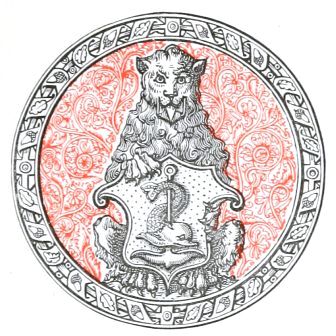
CHISWICK PRESS:—CHARLES WHITTINGHAM AND CO.
TOOKS COURT, CHANCERY LANE, LONDON.
End of the Project Gutenberg EBook of Modern Illustration, by Joseph Pennell
*** END OF THIS PROJECT GUTENBERG EBOOK MODERN ILLUSTRATION ***
***** This file should be named 40322-h.htm or 40322-h.zip *****
This and all associated files of various formats will be found in:
http://www.gutenberg.org/4/0/3/2/40322/
Produced by Chris Curnow and the Online Distributed
Proofreading Team at http://www.pgdp.net (This file was
produced from images generously made available by The
Internet Archive)
Updated editions will replace the previous one--the old editions
will be renamed.
Creating the works from public domain print editions means that no
one owns a United States copyright in these works, so the Foundation
(and you!) can copy and distribute it in the United States without
permission and without paying copyright royalties. Special rules,
set forth in the General Terms of Use part of this license, apply to
copying and distributing Project Gutenberg-tm electronic works to
protect the PROJECT GUTENBERG-tm concept and trademark. Project
Gutenberg is a registered trademark, and may not be used if you
charge for the eBooks, unless you receive specific permission. If you
do not charge anything for copies of this eBook, complying with the
rules is very easy. You may use this eBook for nearly any purpose
such as creation of derivative works, reports, performances and
research. They may be modified and printed and given away--you may do
practically ANYTHING with public domain eBooks. Redistribution is
subject to the trademark license, especially commercial
redistribution.
*** START: FULL LICENSE ***
THE FULL PROJECT GUTENBERG LICENSE
PLEASE READ THIS BEFORE YOU DISTRIBUTE OR USE THIS WORK
To protect the Project Gutenberg-tm mission of promoting the free
distribution of electronic works, by using or distributing this work
(or any other work associated in any way with the phrase "Project
Gutenberg"), you agree to comply with all the terms of the Full Project
Gutenberg-tm License (available with this file or online at
http://gutenberg.org/license).
Section 1. General Terms of Use and Redistributing Project Gutenberg-tm
electronic works
1.A. By reading or using any part of this Project Gutenberg-tm
electronic work, you indicate that you have read, understand, agree to
and accept all the terms of this license and intellectual property
(trademark/copyright) agreement. If you do not agree to abide by all
the terms of this agreement, you must cease using and return or destroy
all copies of Project Gutenberg-tm electronic works in your possession.
If you paid a fee for obtaining a copy of or access to a Project
Gutenberg-tm electronic work and you do not agree to be bound by the
terms of this agreement, you may obtain a refund from the person or
entity to whom you paid the fee as set forth in paragraph 1.E.8.
1.B. "Project Gutenberg" is a registered trademark. It may only be
used on or associated in any way with an electronic work by people who
agree to be bound by the terms of this agreement. There are a few
things that you can do with most Project Gutenberg-tm electronic works
even without complying with the full terms of this agreement. See
paragraph 1.C below. There are a lot of things you can do with Project
Gutenberg-tm electronic works if you follow the terms of this agreement
and help preserve free future access to Project Gutenberg-tm electronic
works. See paragraph 1.E below.
1.C. The Project Gutenberg Literary Archive Foundation ("the Foundation"
or PGLAF), owns a compilation copyright in the collection of Project
Gutenberg-tm electronic works. Nearly all the individual works in the
collection are in the public domain in the United States. If an
individual work is in the public domain in the United States and you are
located in the United States, we do not claim a right to prevent you from
copying, distributing, performing, displaying or creating derivative
works based on the work as long as all references to Project Gutenberg
are removed. Of course, we hope that you will support the Project
Gutenberg-tm mission of promoting free access to electronic works by
freely sharing Project Gutenberg-tm works in compliance with the terms of
this agreement for keeping the Project Gutenberg-tm name associated with
the work. You can easily comply with the terms of this agreement by
keeping this work in the same format with its attached full Project
Gutenberg-tm License when you share it without charge with others.
1.D. The copyright laws of the place where you are located also govern
what you can do with this work. Copyright laws in most countries are in
a constant state of change. If you are outside the United States, check
the laws of your country in addition to the terms of this agreement
before downloading, copying, displaying, performing, distributing or
creating derivative works based on this work or any other Project
Gutenberg-tm work. The Foundation makes no representations concerning
the copyright status of any work in any country outside the United
States.
1.E. Unless you have removed all references to Project Gutenberg:
1.E.1. The following sentence, with active links to, or other immediate
access to, the full Project Gutenberg-tm License must appear prominently
whenever any copy of a Project Gutenberg-tm work (any work on which the
phrase "Project Gutenberg" appears, or with which the phrase "Project
Gutenberg" is associated) is accessed, displayed, performed, viewed,
copied or distributed:
This eBook is for the use of anyone anywhere at no cost and with
almost no restrictions whatsoever. You may copy it, give it away or
re-use it under the terms of the Project Gutenberg License included
with this eBook or online at www.gutenberg.org/license
1.E.2. If an individual Project Gutenberg-tm electronic work is derived
from the public domain (does not contain a notice indicating that it is
posted with permission of the copyright holder), the work can be copied
and distributed to anyone in the United States without paying any fees
or charges. If you are redistributing or providing access to a work
with the phrase "Project Gutenberg" associated with or appearing on the
work, you must comply either with the requirements of paragraphs 1.E.1
through 1.E.7 or obtain permission for the use of the work and the
Project Gutenberg-tm trademark as set forth in paragraphs 1.E.8 or
1.E.9.
1.E.3. If an individual Project Gutenberg-tm electronic work is posted
with the permission of the copyright holder, your use and distribution
must comply with both paragraphs 1.E.1 through 1.E.7 and any additional
terms imposed by the copyright holder. Additional terms will be linked
to the Project Gutenberg-tm License for all works posted with the
permission of the copyright holder found at the beginning of this work.
1.E.4. Do not unlink or detach or remove the full Project Gutenberg-tm
License terms from this work, or any files containing a part of this
work or any other work associated with Project Gutenberg-tm.
1.E.5. Do not copy, display, perform, distribute or redistribute this
electronic work, or any part of this electronic work, without
prominently displaying the sentence set forth in paragraph 1.E.1 with
active links or immediate access to the full terms of the Project
Gutenberg-tm License.
1.E.6. You may convert to and distribute this work in any binary,
compressed, marked up, nonproprietary or proprietary form, including any
word processing or hypertext form. However, if you provide access to or
distribute copies of a Project Gutenberg-tm work in a format other than
"Plain Vanilla ASCII" or other format used in the official version
posted on the official Project Gutenberg-tm web site (www.gutenberg.org),
you must, at no additional cost, fee or expense to the user, provide a
copy, a means of exporting a copy, or a means of obtaining a copy upon
request, of the work in its original "Plain Vanilla ASCII" or other
form. Any alternate format must include the full Project Gutenberg-tm
License as specified in paragraph 1.E.1.
1.E.7. Do not charge a fee for access to, viewing, displaying,
performing, copying or distributing any Project Gutenberg-tm works
unless you comply with paragraph 1.E.8 or 1.E.9.
1.E.8. You may charge a reasonable fee for copies of or providing
access to or distributing Project Gutenberg-tm electronic works provided
that
- You pay a royalty fee of 20% of the gross profits you derive from
the use of Project Gutenberg-tm works calculated using the method
you already use to calculate your applicable taxes. The fee is
owed to the owner of the Project Gutenberg-tm trademark, but he
has agreed to donate royalties under this paragraph to the
Project Gutenberg Literary Archive Foundation. Royalty payments
must be paid within 60 days following each date on which you
prepare (or are legally required to prepare) your periodic tax
returns. Royalty payments should be clearly marked as such and
sent to the Project Gutenberg Literary Archive Foundation at the
address specified in Section 4, "Information about donations to
the Project Gutenberg Literary Archive Foundation."
- You provide a full refund of any money paid by a user who notifies
you in writing (or by e-mail) within 30 days of receipt that s/he
does not agree to the terms of the full Project Gutenberg-tm
License. You must require such a user to return or
destroy all copies of the works possessed in a physical medium
and discontinue all use of and all access to other copies of
Project Gutenberg-tm works.
- You provide, in accordance with paragraph 1.F.3, a full refund of any
money paid for a work or a replacement copy, if a defect in the
electronic work is discovered and reported to you within 90 days
of receipt of the work.
- You comply with all other terms of this agreement for free
distribution of Project Gutenberg-tm works.
1.E.9. If you wish to charge a fee or distribute a Project Gutenberg-tm
electronic work or group of works on different terms than are set
forth in this agreement, you must obtain permission in writing from
both the Project Gutenberg Literary Archive Foundation and Michael
Hart, the owner of the Project Gutenberg-tm trademark. Contact the
Foundation as set forth in Section 3 below.
1.F.
1.F.1. Project Gutenberg volunteers and employees expend considerable
effort to identify, do copyright research on, transcribe and proofread
public domain works in creating the Project Gutenberg-tm
collection. Despite these efforts, Project Gutenberg-tm electronic
works, and the medium on which they may be stored, may contain
"Defects," such as, but not limited to, incomplete, inaccurate or
corrupt data, transcription errors, a copyright or other intellectual
property infringement, a defective or damaged disk or other medium, a
computer virus, or computer codes that damage or cannot be read by
your equipment.
1.F.2. LIMITED WARRANTY, DISCLAIMER OF DAMAGES - Except for the "Right
of Replacement or Refund" described in paragraph 1.F.3, the Project
Gutenberg Literary Archive Foundation, the owner of the Project
Gutenberg-tm trademark, and any other party distributing a Project
Gutenberg-tm electronic work under this agreement, disclaim all
liability to you for damages, costs and expenses, including legal
fees. YOU AGREE THAT YOU HAVE NO REMEDIES FOR NEGLIGENCE, STRICT
LIABILITY, BREACH OF WARRANTY OR BREACH OF CONTRACT EXCEPT THOSE
PROVIDED IN PARAGRAPH 1.F.3. YOU AGREE THAT THE FOUNDATION, THE
TRADEMARK OWNER, AND ANY DISTRIBUTOR UNDER THIS AGREEMENT WILL NOT BE
LIABLE TO YOU FOR ACTUAL, DIRECT, INDIRECT, CONSEQUENTIAL, PUNITIVE OR
INCIDENTAL DAMAGES EVEN IF YOU GIVE NOTICE OF THE POSSIBILITY OF SUCH
DAMAGE.
1.F.3. LIMITED RIGHT OF REPLACEMENT OR REFUND - If you discover a
defect in this electronic work within 90 days of receiving it, you can
receive a refund of the money (if any) you paid for it by sending a
written explanation to the person you received the work from. If you
received the work on a physical medium, you must return the medium with
your written explanation. The person or entity that provided you with
the defective work may elect to provide a replacement copy in lieu of a
refund. If you received the work electronically, the person or entity
providing it to you may choose to give you a second opportunity to
receive the work electronically in lieu of a refund. If the second copy
is also defective, you may demand a refund in writing without further
opportunities to fix the problem.
1.F.4. Except for the limited right of replacement or refund set forth
in paragraph 1.F.3, this work is provided to you 'AS-IS' WITH NO OTHER
WARRANTIES OF ANY KIND, EXPRESS OR IMPLIED, INCLUDING BUT NOT LIMITED TO
WARRANTIES OF MERCHANTABILITY OR FITNESS FOR ANY PURPOSE.
1.F.5. Some states do not allow disclaimers of certain implied
warranties or the exclusion or limitation of certain types of damages.
If any disclaimer or limitation set forth in this agreement violates the
law of the state applicable to this agreement, the agreement shall be
interpreted to make the maximum disclaimer or limitation permitted by
the applicable state law. The invalidity or unenforceability of any
provision of this agreement shall not void the remaining provisions.
1.F.6. INDEMNITY - You agree to indemnify and hold the Foundation, the
trademark owner, any agent or employee of the Foundation, anyone
providing copies of Project Gutenberg-tm electronic works in accordance
with this agreement, and any volunteers associated with the production,
promotion and distribution of Project Gutenberg-tm electronic works,
harmless from all liability, costs and expenses, including legal fees,
that arise directly or indirectly from any of the following which you do
or cause to occur: (a) distribution of this or any Project Gutenberg-tm
work, (b) alteration, modification, or additions or deletions to any
Project Gutenberg-tm work, and (c) any Defect you cause.
Section 2. Information about the Mission of Project Gutenberg-tm
Project Gutenberg-tm is synonymous with the free distribution of
electronic works in formats readable by the widest variety of computers
including obsolete, old, middle-aged and new computers. It exists
because of the efforts of hundreds of volunteers and donations from
people in all walks of life.
Volunteers and financial support to provide volunteers with the
assistance they need, are critical to reaching Project Gutenberg-tm's
goals and ensuring that the Project Gutenberg-tm collection will
remain freely available for generations to come. In 2001, the Project
Gutenberg Literary Archive Foundation was created to provide a secure
and permanent future for Project Gutenberg-tm and future generations.
To learn more about the Project Gutenberg Literary Archive Foundation
and how your efforts and donations can help, see Sections 3 and 4
and the Foundation web page at http://www.pglaf.org.
Section 3. Information about the Project Gutenberg Literary Archive
Foundation
The Project Gutenberg Literary Archive Foundation is a non profit
501(c)(3) educational corporation organized under the laws of the
state of Mississippi and granted tax exempt status by the Internal
Revenue Service. The Foundation's EIN or federal tax identification
number is 64-6221541. Its 501(c)(3) letter is posted at
http://pglaf.org/fundraising. Contributions to the Project Gutenberg
Literary Archive Foundation are tax deductible to the full extent
permitted by U.S. federal laws and your state's laws.
The Foundation's principal office is located at 4557 Melan Dr. S.
Fairbanks, AK, 99712., but its volunteers and employees are scattered
throughout numerous locations. Its business office is located at
809 North 1500 West, Salt Lake City, UT 84116, (801) 596-1887, email
[email protected]. Email contact links and up to date contact
information can be found at the Foundation's web site and official
page at http://pglaf.org
For additional contact information:
Dr. Gregory B. Newby
Chief Executive and Director
[email protected]
Section 4. Information about Donations to the Project Gutenberg
Literary Archive Foundation
Project Gutenberg-tm depends upon and cannot survive without wide
spread public support and donations to carry out its mission of
increasing the number of public domain and licensed works that can be
freely distributed in machine readable form accessible by the widest
array of equipment including outdated equipment. Many small donations
($1 to $5,000) are particularly important to maintaining tax exempt
status with the IRS.
The Foundation is committed to complying with the laws regulating
charities and charitable donations in all 50 states of the United
States. Compliance requirements are not uniform and it takes a
considerable effort, much paperwork and many fees to meet and keep up
with these requirements. We do not solicit donations in locations
where we have not received written confirmation of compliance. To
SEND DONATIONS or determine the status of compliance for any
particular state visit http://pglaf.org
While we cannot and do not solicit contributions from states where we
have not met the solicitation requirements, we know of no prohibition
against accepting unsolicited donations from donors in such states who
approach us with offers to donate.
International donations are gratefully accepted, but we cannot make
any statements concerning tax treatment of donations received from
outside the United States. U.S. laws alone swamp our small staff.
Please check the Project Gutenberg Web pages for current donation
methods and addresses. Donations are accepted in a number of other
ways including checks, online payments and credit card donations.
To donate, please visit: http://pglaf.org/donate
Section 5. General Information About Project Gutenberg-tm electronic
works.
Professor Michael S. Hart is the originator of the Project Gutenberg-tm
concept of a library of electronic works that could be freely shared
with anyone. For thirty years, he produced and distributed Project
Gutenberg-tm eBooks with only a loose network of volunteer support.
Project Gutenberg-tm eBooks are often created from several printed
editions, all of which are confirmed as Public Domain in the U.S.
unless a copyright notice is included. Thus, we do not necessarily
keep eBooks in compliance with any particular paper edition.
Most people start at our Web site which has the main PG search facility:
http://www.gutenberg.org
This Web site includes information about Project Gutenberg-tm,
including how to make donations to the Project Gutenberg Literary
Archive Foundation, how to help produce our new eBooks, and how to
subscribe to our email newsletter to hear about new eBooks.